Quick filters:
Symbiotic zooxanthellae Stock Photos and Images
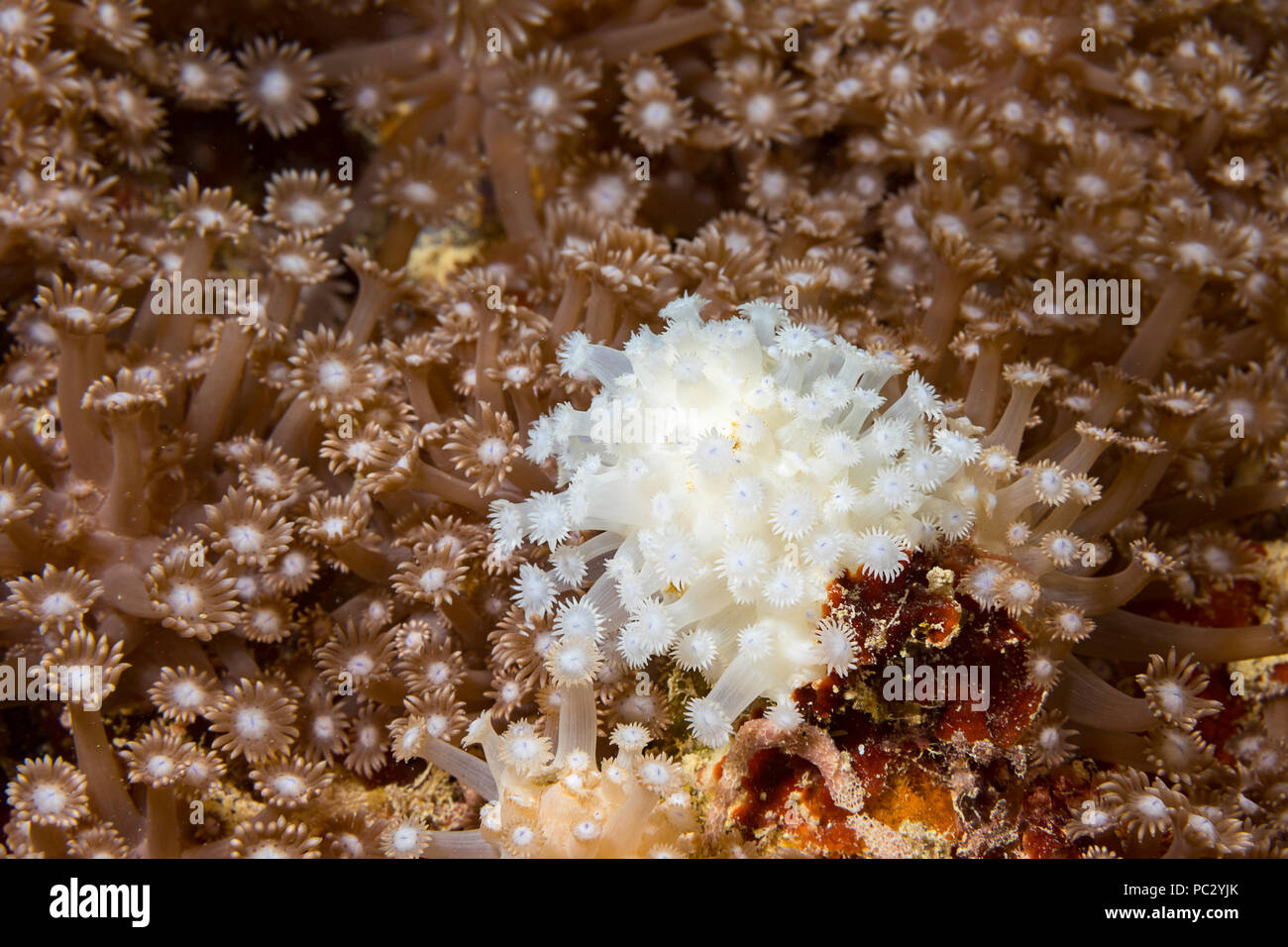 This coral colony in the Pacific has begun to bleach, expelling its symbiotic zooxanthellae from it’s polyps, consequences of global climate change an Stock Photohttps://www.alamy.com/image-license-details/?v=1https://www.alamy.com/this-coral-colony-in-the-pacific-has-begun-to-bleach-expelling-its-symbiotic-zooxanthellae-from-its-polyps-consequences-of-global-climate-change-an-image213965883.html
This coral colony in the Pacific has begun to bleach, expelling its symbiotic zooxanthellae from it’s polyps, consequences of global climate change an Stock Photohttps://www.alamy.com/image-license-details/?v=1https://www.alamy.com/this-coral-colony-in-the-pacific-has-begun-to-bleach-expelling-its-symbiotic-zooxanthellae-from-its-polyps-consequences-of-global-climate-change-an-image213965883.htmlRMPC2YJK–This coral colony in the Pacific has begun to bleach, expelling its symbiotic zooxanthellae from it’s polyps, consequences of global climate change an
 Fluted Giant Clam, Tridacna squamosa, mantle with colors from symbiotic zooxanthellae, Pantai Parigi dive site, Lembeh Straits, Sulawesi, Indonesia Stock Photohttps://www.alamy.com/image-license-details/?v=1https://www.alamy.com/fluted-giant-clam-tridacna-squamosa-mantle-with-colors-from-symbiotic-zooxanthellae-pantai-parigi-dive-site-lembeh-straits-sulawesi-indonesia-image224532556.html
Fluted Giant Clam, Tridacna squamosa, mantle with colors from symbiotic zooxanthellae, Pantai Parigi dive site, Lembeh Straits, Sulawesi, Indonesia Stock Photohttps://www.alamy.com/image-license-details/?v=1https://www.alamy.com/fluted-giant-clam-tridacna-squamosa-mantle-with-colors-from-symbiotic-zooxanthellae-pantai-parigi-dive-site-lembeh-straits-sulawesi-indonesia-image224532556.htmlRMR189FT–Fluted Giant Clam, Tridacna squamosa, mantle with colors from symbiotic zooxanthellae, Pantai Parigi dive site, Lembeh Straits, Sulawesi, Indonesia
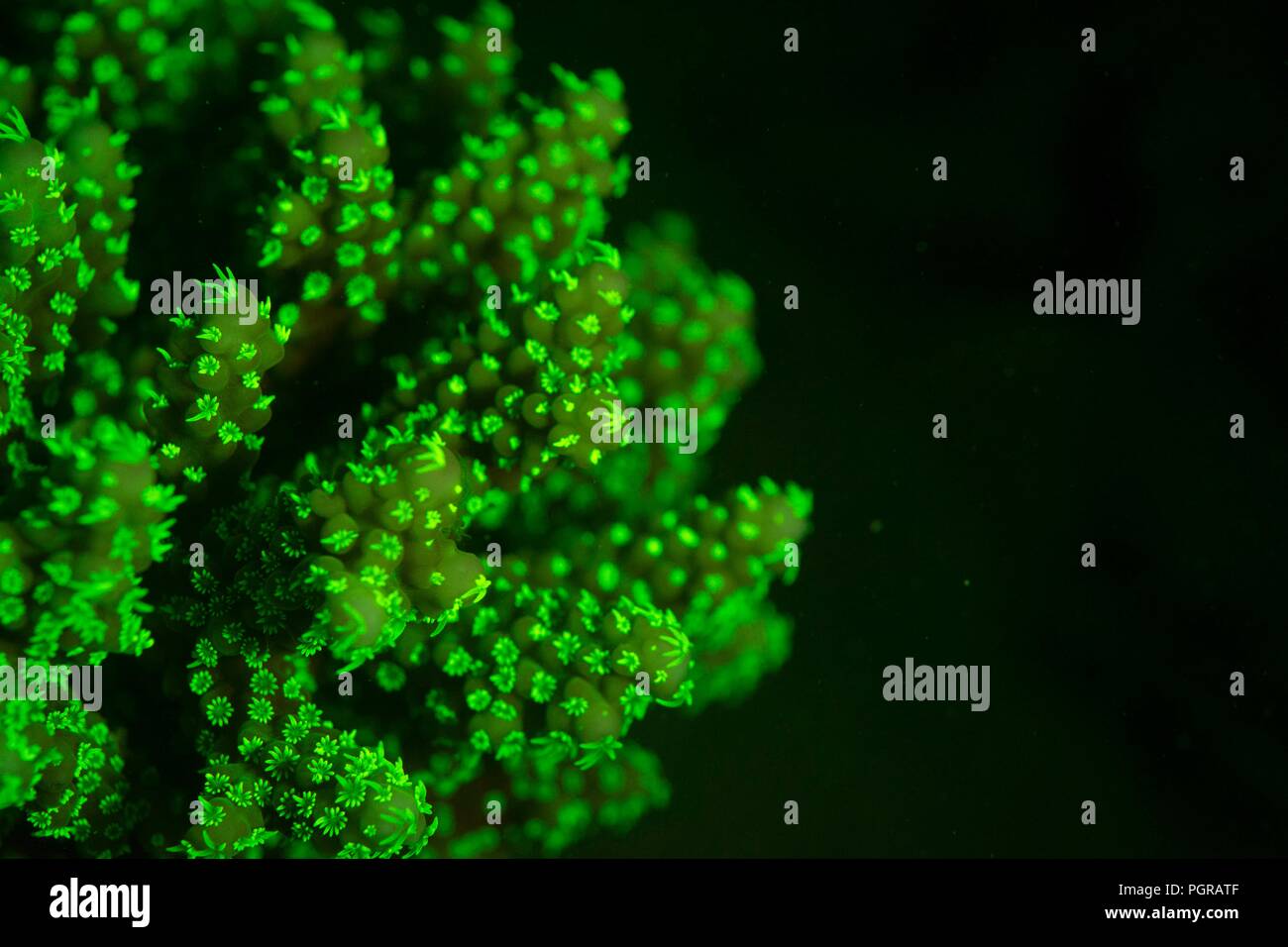 Coral polyps on a coral reef glow fluorescent green at night due to their symbiotic zooxanthellae Stock Photohttps://www.alamy.com/image-license-details/?v=1https://www.alamy.com/coral-polyps-on-a-coral-reef-glow-fluorescent-green-at-night-due-to-their-symbiotic-zooxanthellae-image216872335.html
Coral polyps on a coral reef glow fluorescent green at night due to their symbiotic zooxanthellae Stock Photohttps://www.alamy.com/image-license-details/?v=1https://www.alamy.com/coral-polyps-on-a-coral-reef-glow-fluorescent-green-at-night-due-to-their-symbiotic-zooxanthellae-image216872335.htmlRMPGRATF–Coral polyps on a coral reef glow fluorescent green at night due to their symbiotic zooxanthellae
![Nudibranch [Phyllodesmium longicirrum] with clusters of symbiotic zooxanthellae in the sea slug's tissues, which help provide nutrition. Family Glauc Stock Photo Nudibranch [Phyllodesmium longicirrum] with clusters of symbiotic zooxanthellae in the sea slug's tissues, which help provide nutrition. Family Glauc Stock Photo](https://c8.alamy.com/comp/J9XFY9/nudibranch-phyllodesmium-longicirrum-with-clusters-of-symbiotic-zooxanthellae-J9XFY9.jpg) Nudibranch [Phyllodesmium longicirrum] with clusters of symbiotic zooxanthellae in the sea slug's tissues, which help provide nutrition. Family Glauc Stock Photohttps://www.alamy.com/image-license-details/?v=1https://www.alamy.com/stock-photo-nudibranch-phyllodesmium-longicirrum-with-clusters-of-symbiotic-zooxanthellae-143798125.html
Nudibranch [Phyllodesmium longicirrum] with clusters of symbiotic zooxanthellae in the sea slug's tissues, which help provide nutrition. Family Glauc Stock Photohttps://www.alamy.com/image-license-details/?v=1https://www.alamy.com/stock-photo-nudibranch-phyllodesmium-longicirrum-with-clusters-of-symbiotic-zooxanthellae-143798125.htmlRFJ9XFY9–Nudibranch [Phyllodesmium longicirrum] with clusters of symbiotic zooxanthellae in the sea slug's tissues, which help provide nutrition. Family Glauc
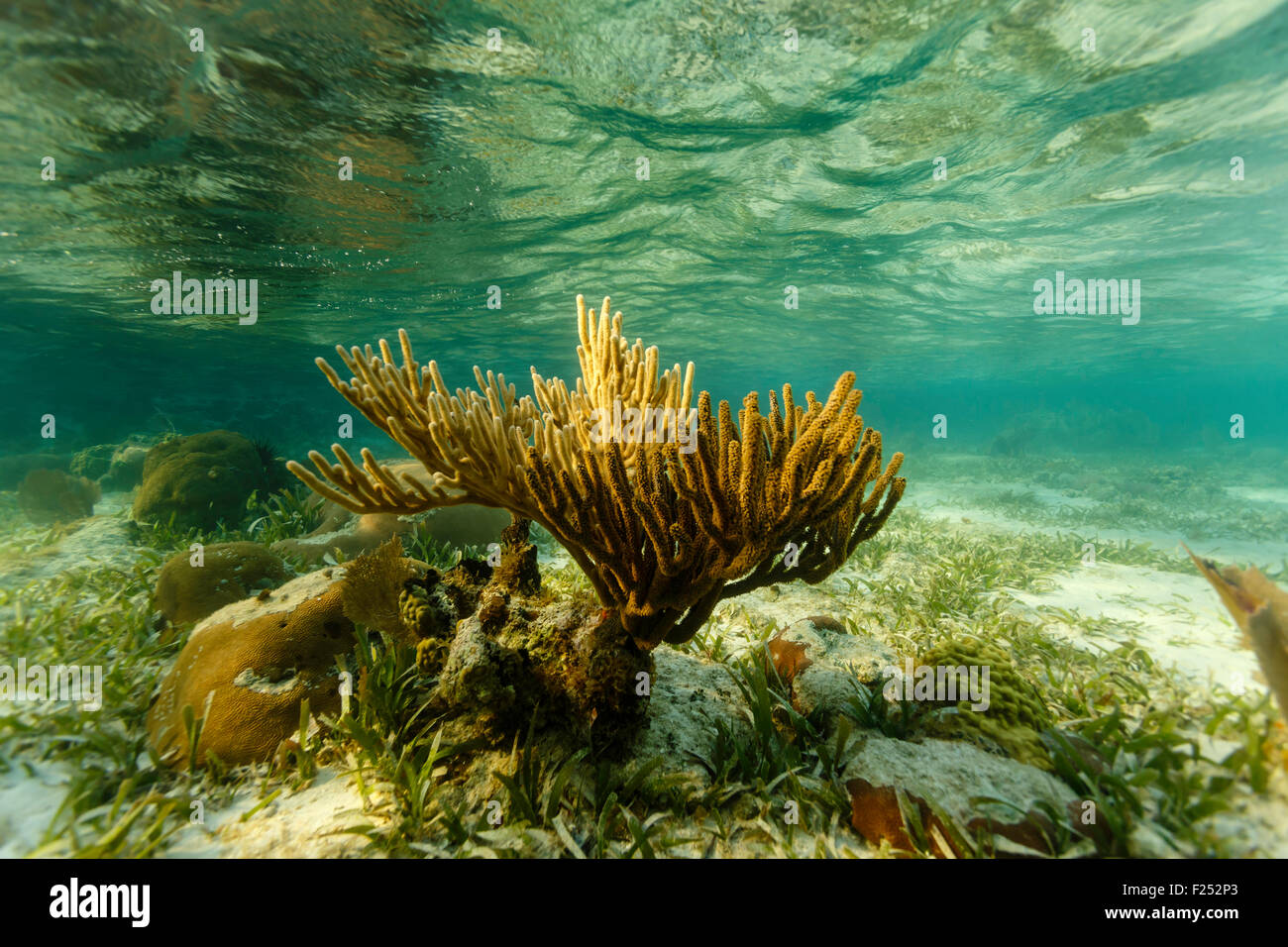 Beautiful sunset light shines on soft branching coralsea whip, Leptogorgia virgulata, on shallow reef Stock Photohttps://www.alamy.com/image-license-details/?v=1https://www.alamy.com/stock-photo-beautiful-sunset-light-shines-on-soft-branching-coralsea-whip-leptogorgia-87393099.html
Beautiful sunset light shines on soft branching coralsea whip, Leptogorgia virgulata, on shallow reef Stock Photohttps://www.alamy.com/image-license-details/?v=1https://www.alamy.com/stock-photo-beautiful-sunset-light-shines-on-soft-branching-coralsea-whip-leptogorgia-87393099.htmlRMF252P3–Beautiful sunset light shines on soft branching coralsea whip, Leptogorgia virgulata, on shallow reef
 Detail of mantle of Giant giant clam (Tridacna gigas) Colours come from symbiotic zooxanthellae in tissue,. Indonesia. Stock Photohttps://www.alamy.com/image-license-details/?v=1https://www.alamy.com/detail-of-mantle-of-giant-giant-clam-tridacna-gigas-colours-come-from-symbiotic-zooxanthellae-in-tissue-indonesia-image357429773.html
Detail of mantle of Giant giant clam (Tridacna gigas) Colours come from symbiotic zooxanthellae in tissue,. Indonesia. Stock Photohttps://www.alamy.com/image-license-details/?v=1https://www.alamy.com/detail-of-mantle-of-giant-giant-clam-tridacna-gigas-colours-come-from-symbiotic-zooxanthellae-in-tissue-indonesia-image357429773.htmlRM2BNE991–Detail of mantle of Giant giant clam (Tridacna gigas) Colours come from symbiotic zooxanthellae in tissue,. Indonesia.
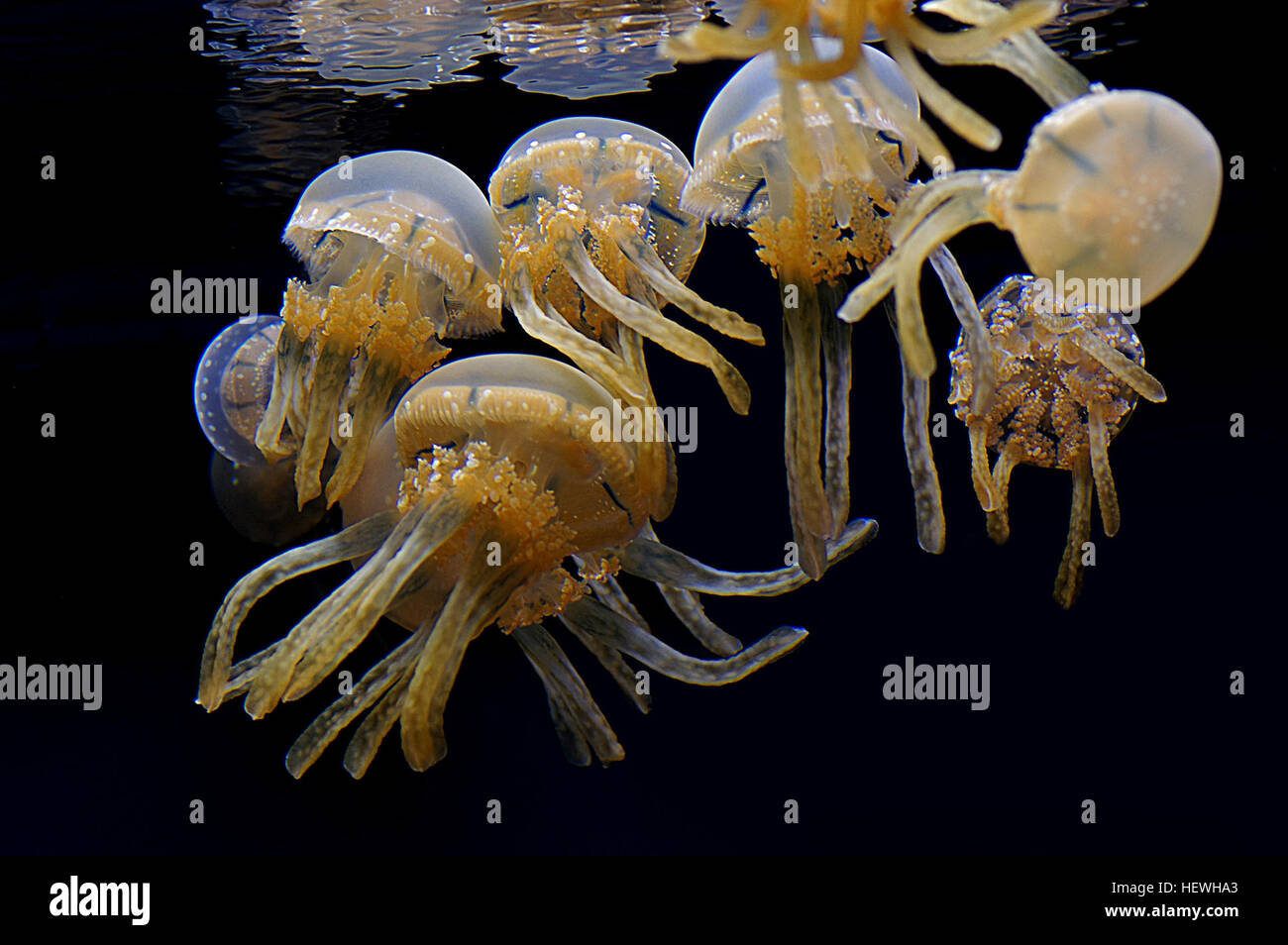 The lagoon jellyfish is found in the ocean, where it tends to dwell within the top 2.5 m of the water during the day to allow its symbiotic zooxanthellae access to light. Sunlight governs its life, especially in the Palau lakes, and this species follows the sun from west to east until it reaches the shadows near the shore. When the sun is setting, the lagoon jellyfish sinks to lower levels of its habitat. Stock Photohttps://www.alamy.com/image-license-details/?v=1https://www.alamy.com/stock-photo-the-lagoon-jellyfish-is-found-in-the-ocean-where-it-tends-to-dwell-129640171.html
The lagoon jellyfish is found in the ocean, where it tends to dwell within the top 2.5 m of the water during the day to allow its symbiotic zooxanthellae access to light. Sunlight governs its life, especially in the Palau lakes, and this species follows the sun from west to east until it reaches the shadows near the shore. When the sun is setting, the lagoon jellyfish sinks to lower levels of its habitat. Stock Photohttps://www.alamy.com/image-license-details/?v=1https://www.alamy.com/stock-photo-the-lagoon-jellyfish-is-found-in-the-ocean-where-it-tends-to-dwell-129640171.htmlRMHEWHA3–The lagoon jellyfish is found in the ocean, where it tends to dwell within the top 2.5 m of the water during the day to allow its symbiotic zooxanthellae access to light. Sunlight governs its life, especially in the Palau lakes, and this species follows the sun from west to east until it reaches the shadows near the shore. When the sun is setting, the lagoon jellyfish sinks to lower levels of its habitat.
 A coral colony has bleached after expelling its symbiotic zooxanthellae while under stress from high sea temperatures. Stock Photohttps://www.alamy.com/image-license-details/?v=1https://www.alamy.com/stock-photo-a-coral-colony-has-bleached-after-expelling-its-symbiotic-zooxanthellae-111596867.html
A coral colony has bleached after expelling its symbiotic zooxanthellae while under stress from high sea temperatures. Stock Photohttps://www.alamy.com/image-license-details/?v=1https://www.alamy.com/stock-photo-a-coral-colony-has-bleached-after-expelling-its-symbiotic-zooxanthellae-111596867.htmlRMGDFJXB–A coral colony has bleached after expelling its symbiotic zooxanthellae while under stress from high sea temperatures.
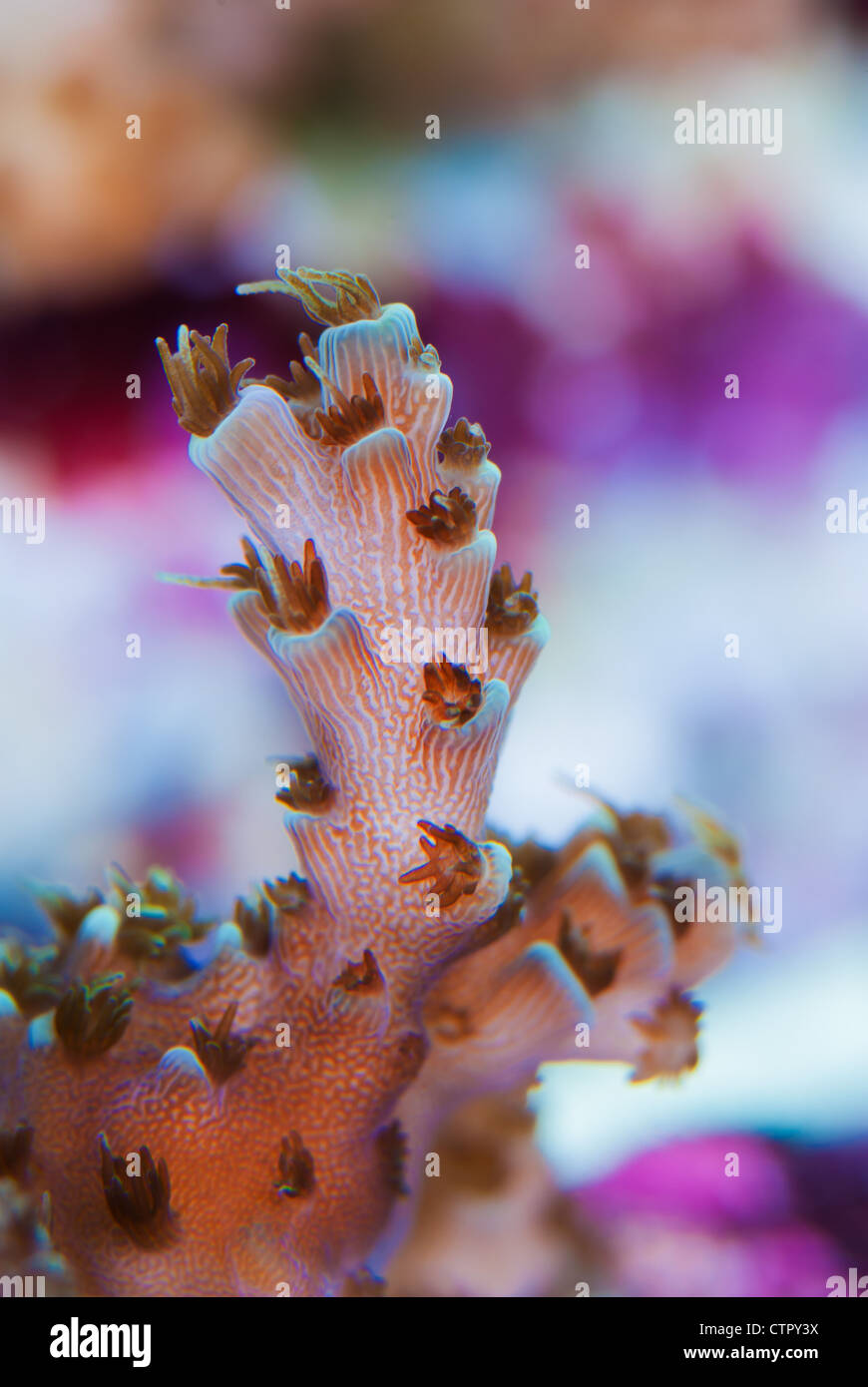 Close up of Acropora coral polyps open showing connecting channels and zooxanthellae Stock Photohttps://www.alamy.com/image-license-details/?v=1https://www.alamy.com/stock-photo-close-up-of-acropora-coral-polyps-open-showing-connecting-channels-49676702.html
Close up of Acropora coral polyps open showing connecting channels and zooxanthellae Stock Photohttps://www.alamy.com/image-license-details/?v=1https://www.alamy.com/stock-photo-close-up-of-acropora-coral-polyps-open-showing-connecting-channels-49676702.htmlRFCTPY3X–Close up of Acropora coral polyps open showing connecting channels and zooxanthellae
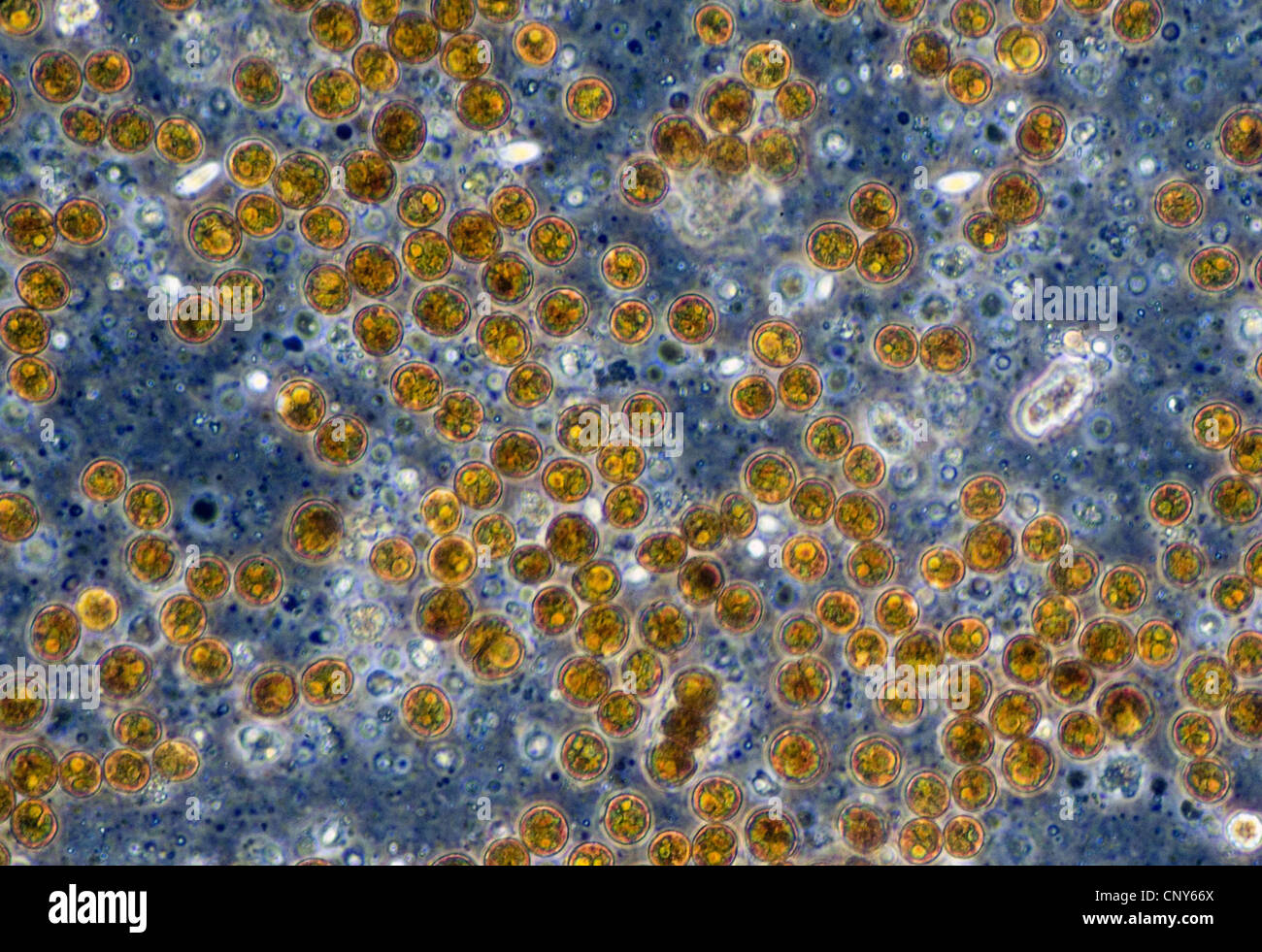 Microscopic photo of symbiotic algae (Zooxanthellae) of the dinoflagellat genus Symbiodinium (syn.: Gymnodinium). Sampled from a soft coral (Sinularia spec.) Stock Photohttps://www.alamy.com/image-license-details/?v=1https://www.alamy.com/stock-photo-microscopic-photo-of-symbiotic-algae-zooxanthellae-of-the-dinoflagellat-47926114.html
Microscopic photo of symbiotic algae (Zooxanthellae) of the dinoflagellat genus Symbiodinium (syn.: Gymnodinium). Sampled from a soft coral (Sinularia spec.) Stock Photohttps://www.alamy.com/image-license-details/?v=1https://www.alamy.com/stock-photo-microscopic-photo-of-symbiotic-algae-zooxanthellae-of-the-dinoflagellat-47926114.htmlRMCNY66X–Microscopic photo of symbiotic algae (Zooxanthellae) of the dinoflagellat genus Symbiodinium (syn.: Gymnodinium). Sampled from a soft coral (Sinularia spec.)
 Coral anatomy. Cross section and structure of a polyp with digestive cavity, Mouth, and Tentacles. Close-up of epithelium with Zooxanthellae, and stin Stock Vectorhttps://www.alamy.com/image-license-details/?v=1https://www.alamy.com/coral-anatomy-cross-section-and-structure-of-a-polyp-with-digestive-cavity-mouth-and-tentacles-close-up-of-epithelium-with-zooxanthellae-and-stin-image625871920.html
Coral anatomy. Cross section and structure of a polyp with digestive cavity, Mouth, and Tentacles. Close-up of epithelium with Zooxanthellae, and stin Stock Vectorhttps://www.alamy.com/image-license-details/?v=1https://www.alamy.com/coral-anatomy-cross-section-and-structure-of-a-polyp-with-digestive-cavity-mouth-and-tentacles-close-up-of-epithelium-with-zooxanthellae-and-stin-image625871920.htmlRF2YA6X0G–Coral anatomy. Cross section and structure of a polyp with digestive cavity, Mouth, and Tentacles. Close-up of epithelium with Zooxanthellae, and stin
 Symbiotic algae (zooxanthellae) extracted from a yellow zoanthid (Zoanthidea, Parazoanthus sp.?) from the Indo-Pacific. Stock Photohttps://www.alamy.com/image-license-details/?v=1https://www.alamy.com/symbiotic-algae-zooxanthellae-extracted-from-a-yellow-zoanthid-zoanthidea-parazoanthus-sp-from-the-indo-pacific-image628578780.html
Symbiotic algae (zooxanthellae) extracted from a yellow zoanthid (Zoanthidea, Parazoanthus sp.?) from the Indo-Pacific. Stock Photohttps://www.alamy.com/image-license-details/?v=1https://www.alamy.com/symbiotic-algae-zooxanthellae-extracted-from-a-yellow-zoanthid-zoanthidea-parazoanthus-sp-from-the-indo-pacific-image628578780.htmlRM2YEJ6J4–Symbiotic algae (zooxanthellae) extracted from a yellow zoanthid (Zoanthidea, Parazoanthus sp.?) from the Indo-Pacific.
 Two Emperor shrimp hitch a ride on a Cerastoma nudibranch. Stock Photohttps://www.alamy.com/image-license-details/?v=1https://www.alamy.com/stock-photo-two-emperor-shrimp-hitch-a-ride-on-a-cerastoma-nudibranch-124201775.html
Two Emperor shrimp hitch a ride on a Cerastoma nudibranch. Stock Photohttps://www.alamy.com/image-license-details/?v=1https://www.alamy.com/stock-photo-two-emperor-shrimp-hitch-a-ride-on-a-cerastoma-nudibranch-124201775.htmlRMH61THK–Two Emperor shrimp hitch a ride on a Cerastoma nudibranch.
 Climate change in Egypt. Stock Photohttps://www.alamy.com/image-license-details/?v=1https://www.alamy.com/climate-change-in-egypt-image632699735.html
Climate change in Egypt. Stock Photohttps://www.alamy.com/image-license-details/?v=1https://www.alamy.com/climate-change-in-egypt-image632699735.htmlRF2YN9XY3–Climate change in Egypt.
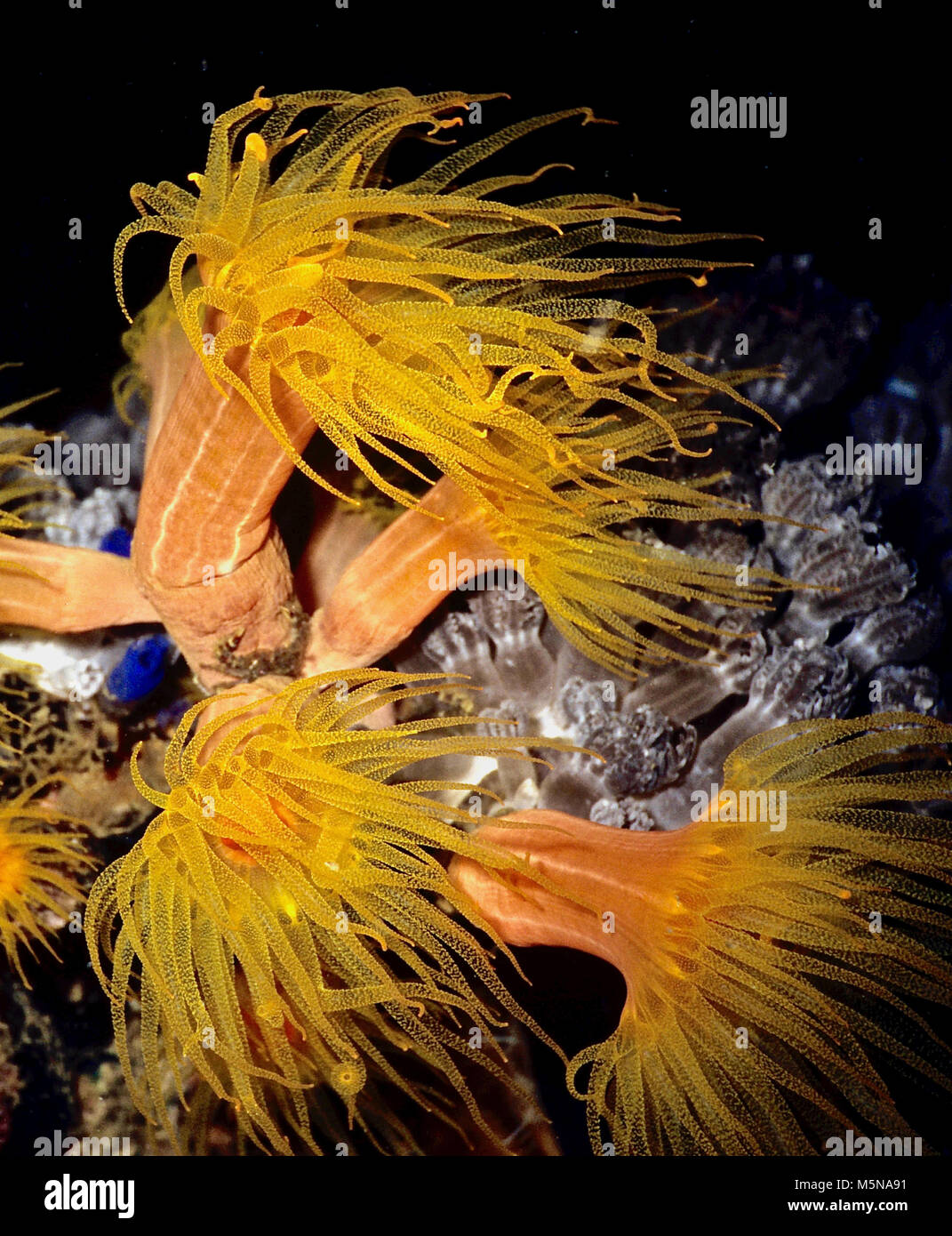 These golden cup corals (Tubastraea aurea) had their long tentacles extended fully at night to catch plankton in the current. The species is a stony coral but does not contribute to the building of reefs. It is usually found in very small colonies. At about 5 cms. in diameter, each polyp is impressively large. They do not contain zooxanthellae and so do not benefit - as most corals do - from the sugars which such symbiotic algae produce by photosynthesis. In consequence, golden cup corals can live in deeper waters where sufficient light does not penetrate. Photographed in the Egyptian Red Sea. Stock Photohttps://www.alamy.com/image-license-details/?v=1https://www.alamy.com/stock-photo-these-golden-cup-corals-tubastraea-aurea-had-their-long-tentacles-175646045.html
These golden cup corals (Tubastraea aurea) had their long tentacles extended fully at night to catch plankton in the current. The species is a stony coral but does not contribute to the building of reefs. It is usually found in very small colonies. At about 5 cms. in diameter, each polyp is impressively large. They do not contain zooxanthellae and so do not benefit - as most corals do - from the sugars which such symbiotic algae produce by photosynthesis. In consequence, golden cup corals can live in deeper waters where sufficient light does not penetrate. Photographed in the Egyptian Red Sea. Stock Photohttps://www.alamy.com/image-license-details/?v=1https://www.alamy.com/stock-photo-these-golden-cup-corals-tubastraea-aurea-had-their-long-tentacles-175646045.htmlRFM5NA91–These golden cup corals (Tubastraea aurea) had their long tentacles extended fully at night to catch plankton in the current. The species is a stony coral but does not contribute to the building of reefs. It is usually found in very small colonies. At about 5 cms. in diameter, each polyp is impressively large. They do not contain zooxanthellae and so do not benefit - as most corals do - from the sugars which such symbiotic algae produce by photosynthesis. In consequence, golden cup corals can live in deeper waters where sufficient light does not penetrate. Photographed in the Egyptian Red Sea.
 Giant Green Anemone, Anthopleura xanthogrammica, in tide pool at Point of Arches in Olympic National Park, Washington State, USA Stock Photohttps://www.alamy.com/image-license-details/?v=1https://www.alamy.com/giant-green-anemone-anthopleura-xanthogrammica-in-tide-pool-at-point-of-arches-in-olympic-national-park-washington-state-usa-image527140226.html
Giant Green Anemone, Anthopleura xanthogrammica, in tide pool at Point of Arches in Olympic National Park, Washington State, USA Stock Photohttps://www.alamy.com/image-license-details/?v=1https://www.alamy.com/giant-green-anemone-anthopleura-xanthogrammica-in-tide-pool-at-point-of-arches-in-olympic-national-park-washington-state-usa-image527140226.htmlRM2NHH8MJ–Giant Green Anemone, Anthopleura xanthogrammica, in tide pool at Point of Arches in Olympic National Park, Washington State, USA
 Corals are beginning to bleach on a reef in Indonesia. Bleaching occurs as corals expel their endosymbionts (zooxanthellae) livi Stock Photohttps://www.alamy.com/image-license-details/?v=1https://www.alamy.com/stock-photo-corals-are-beginning-to-bleach-on-a-reef-in-indonesia-bleaching-occurs-90210727.html
Corals are beginning to bleach on a reef in Indonesia. Bleaching occurs as corals expel their endosymbionts (zooxanthellae) livi Stock Photohttps://www.alamy.com/image-license-details/?v=1https://www.alamy.com/stock-photo-corals-are-beginning-to-bleach-on-a-reef-in-indonesia-bleaching-occurs-90210727.htmlRFF6NCKK–Corals are beginning to bleach on a reef in Indonesia. Bleaching occurs as corals expel their endosymbionts (zooxanthellae) livi
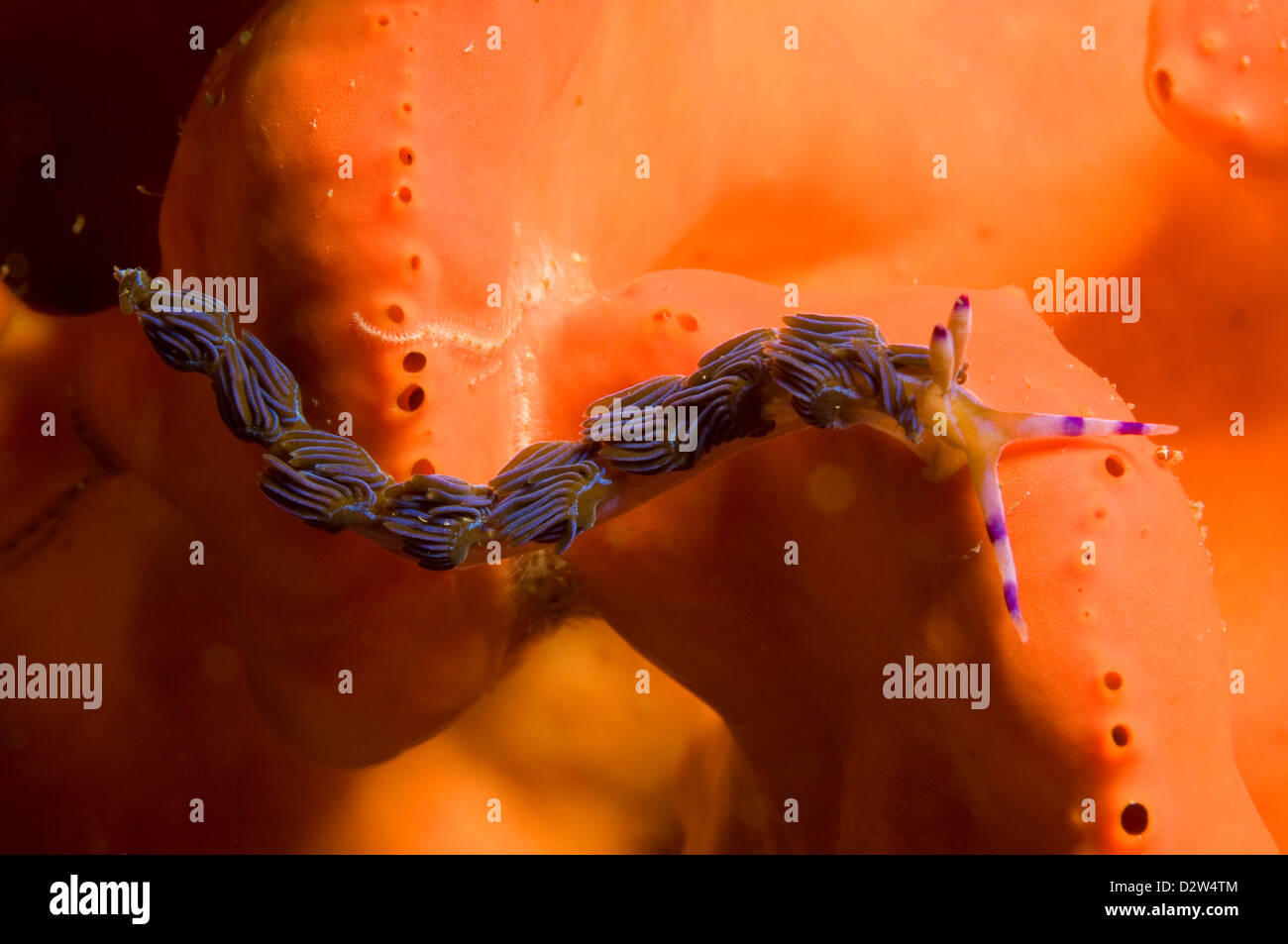 Purple Dragon (Pteraeolidia ianthina), North Head, Sydney Harbour, Australia Stock Photohttps://www.alamy.com/image-license-details/?v=1https://www.alamy.com/stock-photo-purple-dragon-pteraeolidia-ianthina-north-head-sydney-harbour-australia-53413044.html
Purple Dragon (Pteraeolidia ianthina), North Head, Sydney Harbour, Australia Stock Photohttps://www.alamy.com/image-license-details/?v=1https://www.alamy.com/stock-photo-purple-dragon-pteraeolidia-ianthina-north-head-sydney-harbour-australia-53413044.htmlRMD2W4TM–Purple Dragon (Pteraeolidia ianthina), North Head, Sydney Harbour, Australia
 Maldives anemonefish (Amphiprion nigripes) symbiotic with Giant anemone, Heteractis magnifica Stock Photohttps://www.alamy.com/image-license-details/?v=1https://www.alamy.com/maldives-anemonefish-amphiprion-nigripes-symbiotic-with-giant-anemone-heteractis-magnifica-image353650819.html
Maldives anemonefish (Amphiprion nigripes) symbiotic with Giant anemone, Heteractis magnifica Stock Photohttps://www.alamy.com/image-license-details/?v=1https://www.alamy.com/maldives-anemonefish-amphiprion-nigripes-symbiotic-with-giant-anemone-heteractis-magnifica-image353650819.htmlRM2BFA56B–Maldives anemonefish (Amphiprion nigripes) symbiotic with Giant anemone, Heteractis magnifica
 This hard coral colony in the Pacific has begun to bleach, expelling its symbiotic zooxanthellae, consequences of global climate change and climate wa Stock Photohttps://www.alamy.com/image-license-details/?v=1https://www.alamy.com/this-hard-coral-colony-in-the-pacific-has-begun-to-bleach-expelling-its-symbiotic-zooxanthellae-consequences-of-global-climate-change-and-climate-wa-image213965895.html
This hard coral colony in the Pacific has begun to bleach, expelling its symbiotic zooxanthellae, consequences of global climate change and climate wa Stock Photohttps://www.alamy.com/image-license-details/?v=1https://www.alamy.com/this-hard-coral-colony-in-the-pacific-has-begun-to-bleach-expelling-its-symbiotic-zooxanthellae-consequences-of-global-climate-change-and-climate-wa-image213965895.htmlRMPC2YK3–This hard coral colony in the Pacific has begun to bleach, expelling its symbiotic zooxanthellae, consequences of global climate change and climate wa
 Fluted Giant Clam, Tridacna squamosa, siphon and mantle with colors from symbiotic zooxanthellae, Pantai Parigi dive site, Lembeh Straits, Sulawesi, I Stock Photohttps://www.alamy.com/image-license-details/?v=1https://www.alamy.com/fluted-giant-clam-tridacna-squamosa-siphon-and-mantle-with-colors-from-symbiotic-zooxanthellae-pantai-parigi-dive-site-lembeh-straits-sulawesi-i-image224532542.html
Fluted Giant Clam, Tridacna squamosa, siphon and mantle with colors from symbiotic zooxanthellae, Pantai Parigi dive site, Lembeh Straits, Sulawesi, I Stock Photohttps://www.alamy.com/image-license-details/?v=1https://www.alamy.com/fluted-giant-clam-tridacna-squamosa-siphon-and-mantle-with-colors-from-symbiotic-zooxanthellae-pantai-parigi-dive-site-lembeh-straits-sulawesi-i-image224532542.htmlRMR189FA–Fluted Giant Clam, Tridacna squamosa, siphon and mantle with colors from symbiotic zooxanthellae, Pantai Parigi dive site, Lembeh Straits, Sulawesi, I
 Coral polyps on a coral reef glow fluorescent green at night due to their symbiotic zooxanthellae Stock Photohttps://www.alamy.com/image-license-details/?v=1https://www.alamy.com/coral-polyps-on-a-coral-reef-glow-fluorescent-green-at-night-due-to-their-symbiotic-zooxanthellae-image216872357.html
Coral polyps on a coral reef glow fluorescent green at night due to their symbiotic zooxanthellae Stock Photohttps://www.alamy.com/image-license-details/?v=1https://www.alamy.com/coral-polyps-on-a-coral-reef-glow-fluorescent-green-at-night-due-to-their-symbiotic-zooxanthellae-image216872357.htmlRMPGRAW9–Coral polyps on a coral reef glow fluorescent green at night due to their symbiotic zooxanthellae
![Crocea giant clam or Boring clam [Tridacna crocea]. Colours in the mantle come from symbiotic zooxanthellae in tissue. Red Sea, Egypt. Stock Photo Crocea giant clam or Boring clam [Tridacna crocea]. Colours in the mantle come from symbiotic zooxanthellae in tissue. Red Sea, Egypt. Stock Photo](https://c8.alamy.com/comp/2RMF5KB/crocea-giant-clam-or-boring-clam-tridacna-crocea-colours-in-the-mantle-come-from-symbiotic-zooxanthellae-in-tissue-red-sea-egypt-2RMF5KB.jpg) Crocea giant clam or Boring clam [Tridacna crocea]. Colours in the mantle come from symbiotic zooxanthellae in tissue. Red Sea, Egypt. Stock Photohttps://www.alamy.com/image-license-details/?v=1https://www.alamy.com/crocea-giant-clam-or-boring-clam-tridacna-crocea-colours-in-the-mantle-come-from-symbiotic-zooxanthellae-in-tissue-red-sea-egypt-image563358639.html
Crocea giant clam or Boring clam [Tridacna crocea]. Colours in the mantle come from symbiotic zooxanthellae in tissue. Red Sea, Egypt. Stock Photohttps://www.alamy.com/image-license-details/?v=1https://www.alamy.com/crocea-giant-clam-or-boring-clam-tridacna-crocea-colours-in-the-mantle-come-from-symbiotic-zooxanthellae-in-tissue-red-sea-egypt-image563358639.htmlRM2RMF5KB–Crocea giant clam or Boring clam [Tridacna crocea]. Colours in the mantle come from symbiotic zooxanthellae in tissue. Red Sea, Egypt.
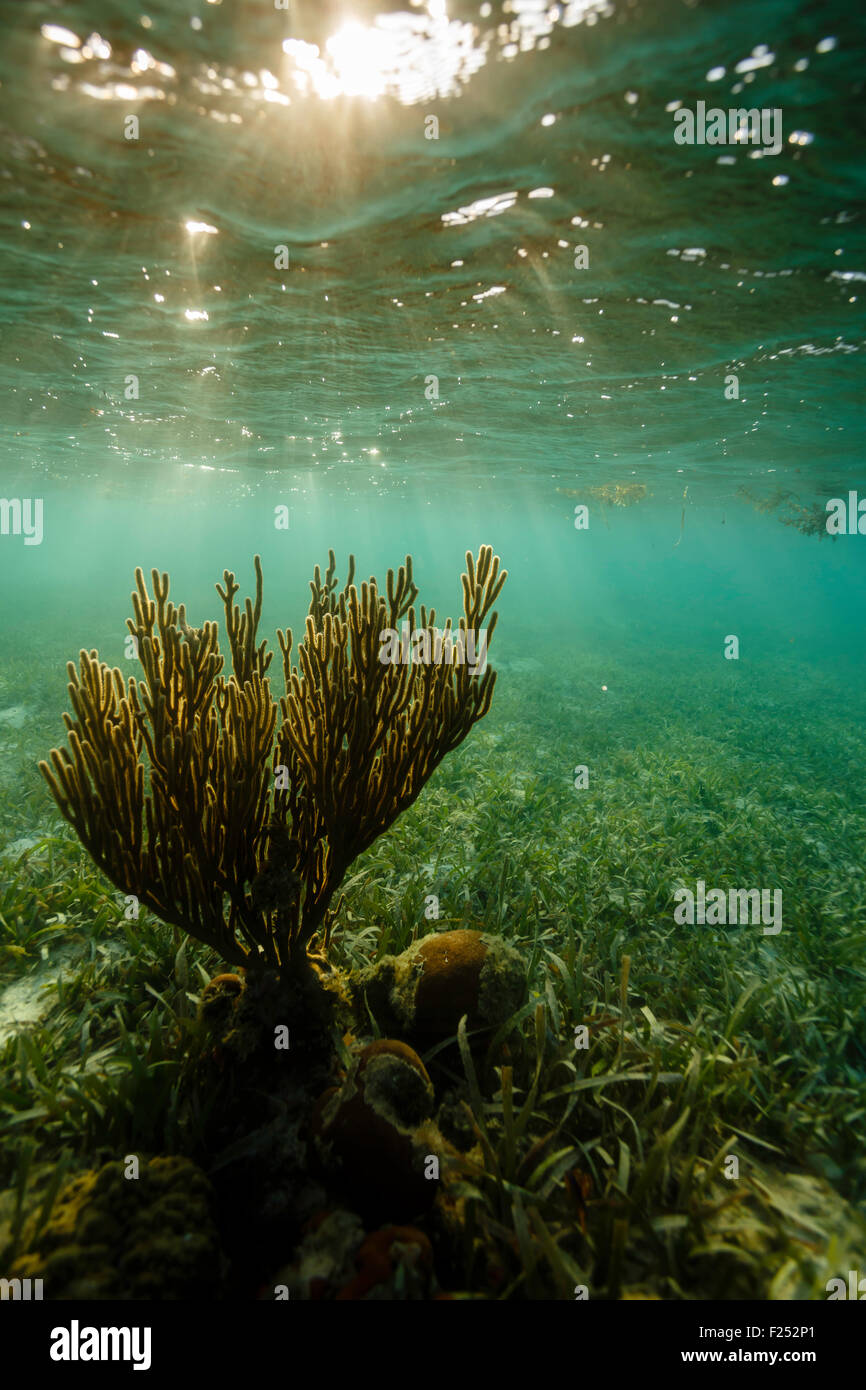 Sunset light shines on soft branching coralsea whip, Leptogorgia virgulata, on shallow reef Stock Photohttps://www.alamy.com/image-license-details/?v=1https://www.alamy.com/stock-photo-sunset-light-shines-on-soft-branching-coralsea-whip-leptogorgia-virgulata-87393097.html
Sunset light shines on soft branching coralsea whip, Leptogorgia virgulata, on shallow reef Stock Photohttps://www.alamy.com/image-license-details/?v=1https://www.alamy.com/stock-photo-sunset-light-shines-on-soft-branching-coralsea-whip-leptogorgia-virgulata-87393097.htmlRMF252P1–Sunset light shines on soft branching coralsea whip, Leptogorgia virgulata, on shallow reef
 Nudibranch (Phyllodesmium longicirrum) with clusters of symbiotic zooxanthellae in the sea slug's tissues, which help provide nutrition. Lembeh, Sulaw Stock Photohttps://www.alamy.com/image-license-details/?v=1https://www.alamy.com/nudibranch-phyllodesmium-longicirrum-with-clusters-of-symbiotic-zooxanthellae-in-the-sea-slugs-tissues-which-help-provide-nutrition-lembeh-sulaw-image357429991.html
Nudibranch (Phyllodesmium longicirrum) with clusters of symbiotic zooxanthellae in the sea slug's tissues, which help provide nutrition. Lembeh, Sulaw Stock Photohttps://www.alamy.com/image-license-details/?v=1https://www.alamy.com/nudibranch-phyllodesmium-longicirrum-with-clusters-of-symbiotic-zooxanthellae-in-the-sea-slugs-tissues-which-help-provide-nutrition-lembeh-sulaw-image357429991.htmlRM2BNE9GR–Nudibranch (Phyllodesmium longicirrum) with clusters of symbiotic zooxanthellae in the sea slug's tissues, which help provide nutrition. Lembeh, Sulaw
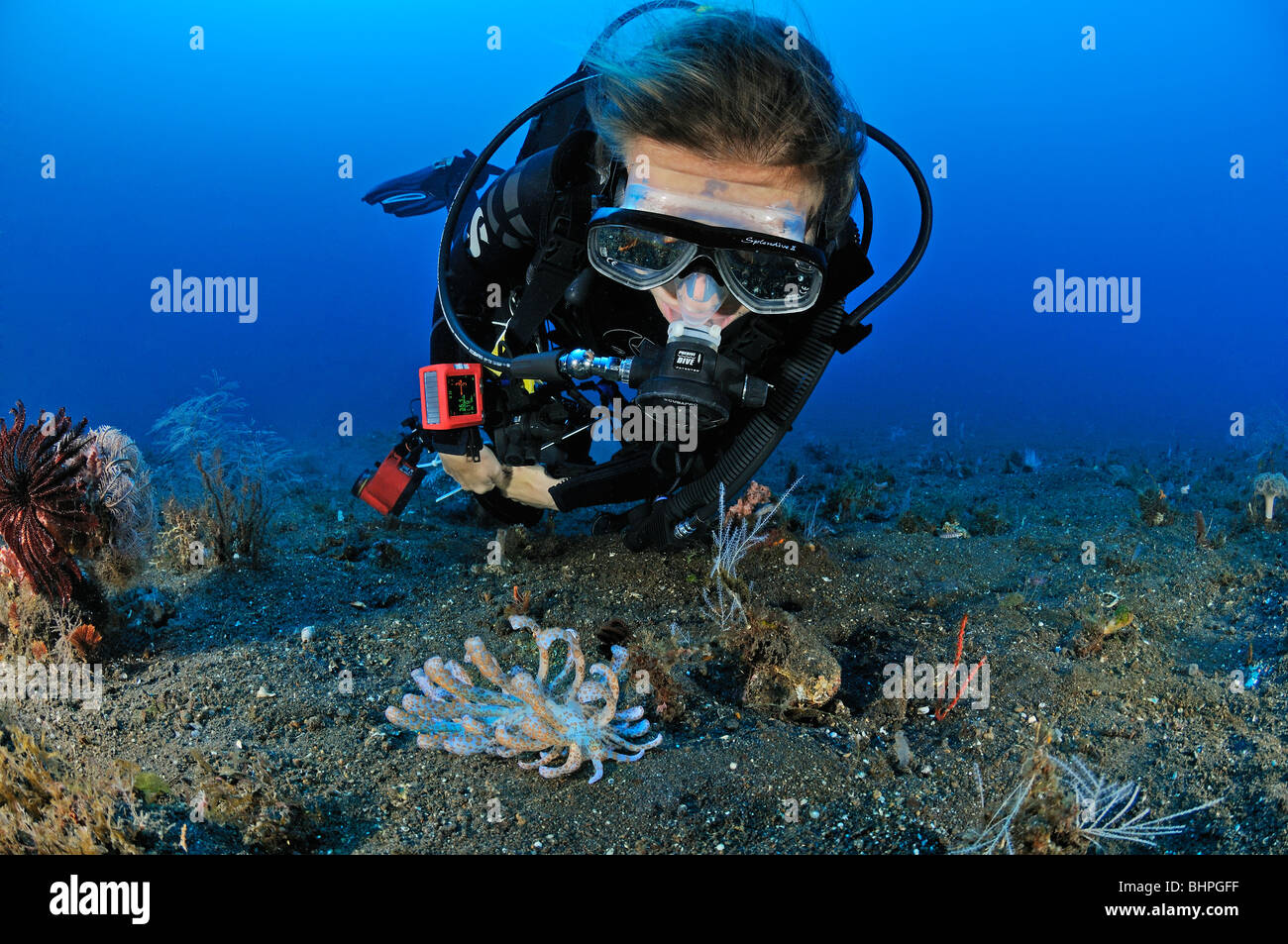 Phyllodesmium longicirrum, scuba diver with solar powered nudibranch, Bali, Indonesia, Indo-Pacific Ocean Stock Photohttps://www.alamy.com/image-license-details/?v=1https://www.alamy.com/stock-photo-phyllodesmium-longicirrum-scuba-diver-with-solar-powered-nudibranch-28155443.html
Phyllodesmium longicirrum, scuba diver with solar powered nudibranch, Bali, Indonesia, Indo-Pacific Ocean Stock Photohttps://www.alamy.com/image-license-details/?v=1https://www.alamy.com/stock-photo-phyllodesmium-longicirrum-scuba-diver-with-solar-powered-nudibranch-28155443.htmlRMBHPGFF–Phyllodesmium longicirrum, scuba diver with solar powered nudibranch, Bali, Indonesia, Indo-Pacific Ocean
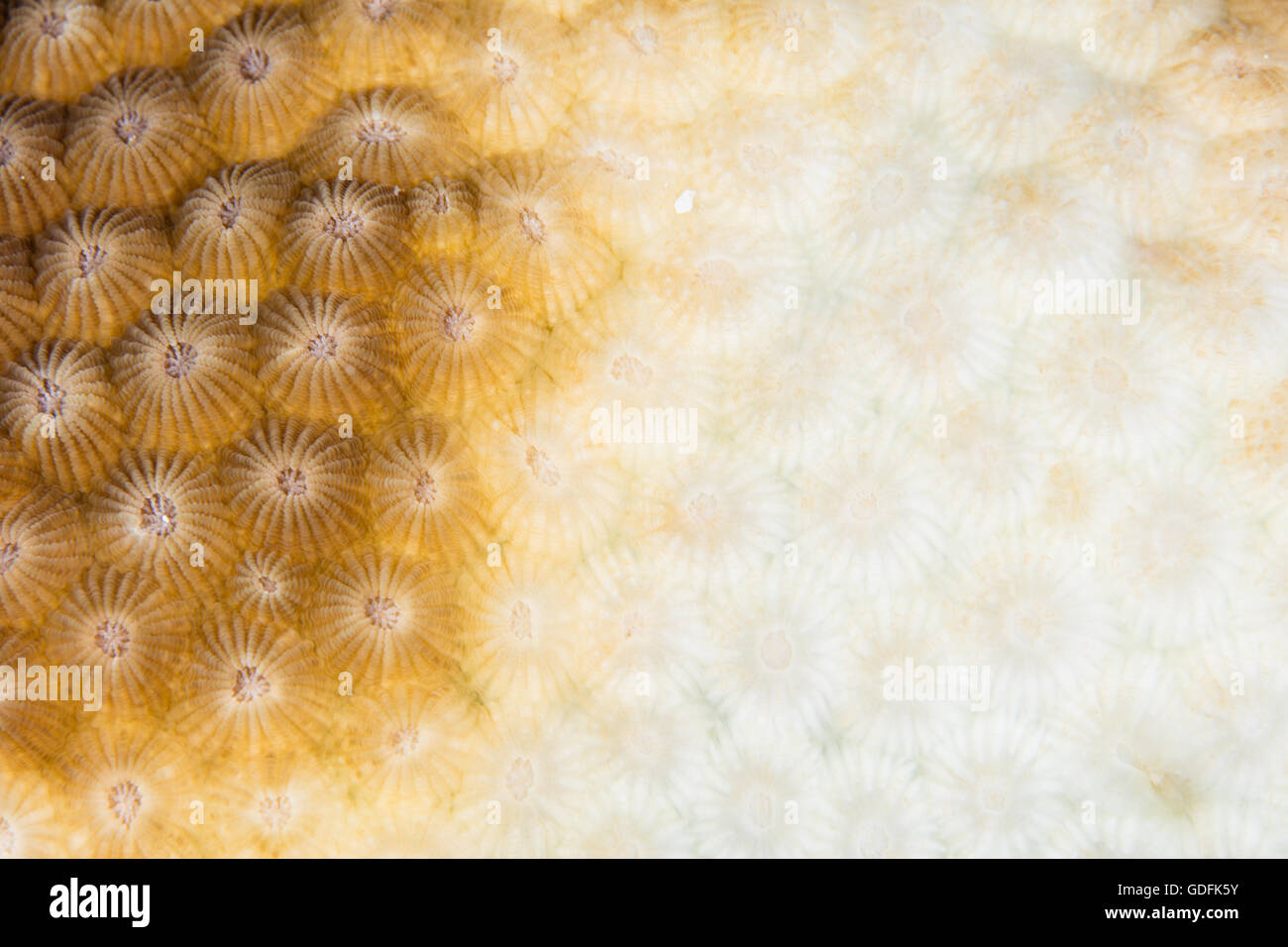 A Honeycomb coral (Diploastrea heliopora) is bleaching as it expels its symbiotic zooxanthellae due to high sea temperatures. Stock Photohttps://www.alamy.com/image-license-details/?v=1https://www.alamy.com/stock-photo-a-honeycomb-coral-diploastrea-heliopora-is-bleaching-as-it-expels-111597079.html
A Honeycomb coral (Diploastrea heliopora) is bleaching as it expels its symbiotic zooxanthellae due to high sea temperatures. Stock Photohttps://www.alamy.com/image-license-details/?v=1https://www.alamy.com/stock-photo-a-honeycomb-coral-diploastrea-heliopora-is-bleaching-as-it-expels-111597079.htmlRMGDFK5Y–A Honeycomb coral (Diploastrea heliopora) is bleaching as it expels its symbiotic zooxanthellae due to high sea temperatures.
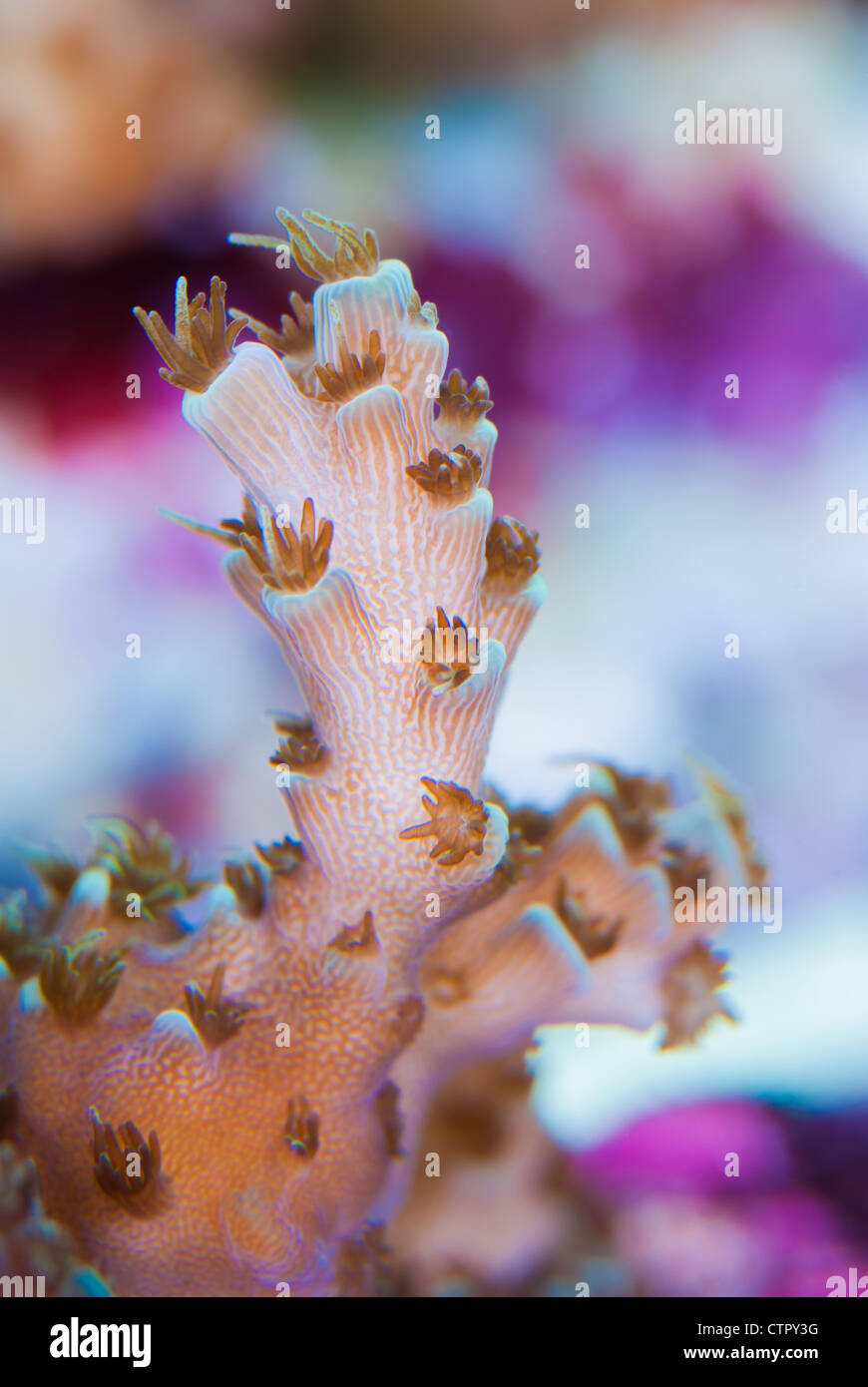 Close up of Acropora coral polyps open showing connecting channels and zooxanthellae Stock Photohttps://www.alamy.com/image-license-details/?v=1https://www.alamy.com/stock-photo-close-up-of-acropora-coral-polyps-open-showing-connecting-channels-49676692.html
Close up of Acropora coral polyps open showing connecting channels and zooxanthellae Stock Photohttps://www.alamy.com/image-license-details/?v=1https://www.alamy.com/stock-photo-close-up-of-acropora-coral-polyps-open-showing-connecting-channels-49676692.htmlRMCTPY3G–Close up of Acropora coral polyps open showing connecting channels and zooxanthellae
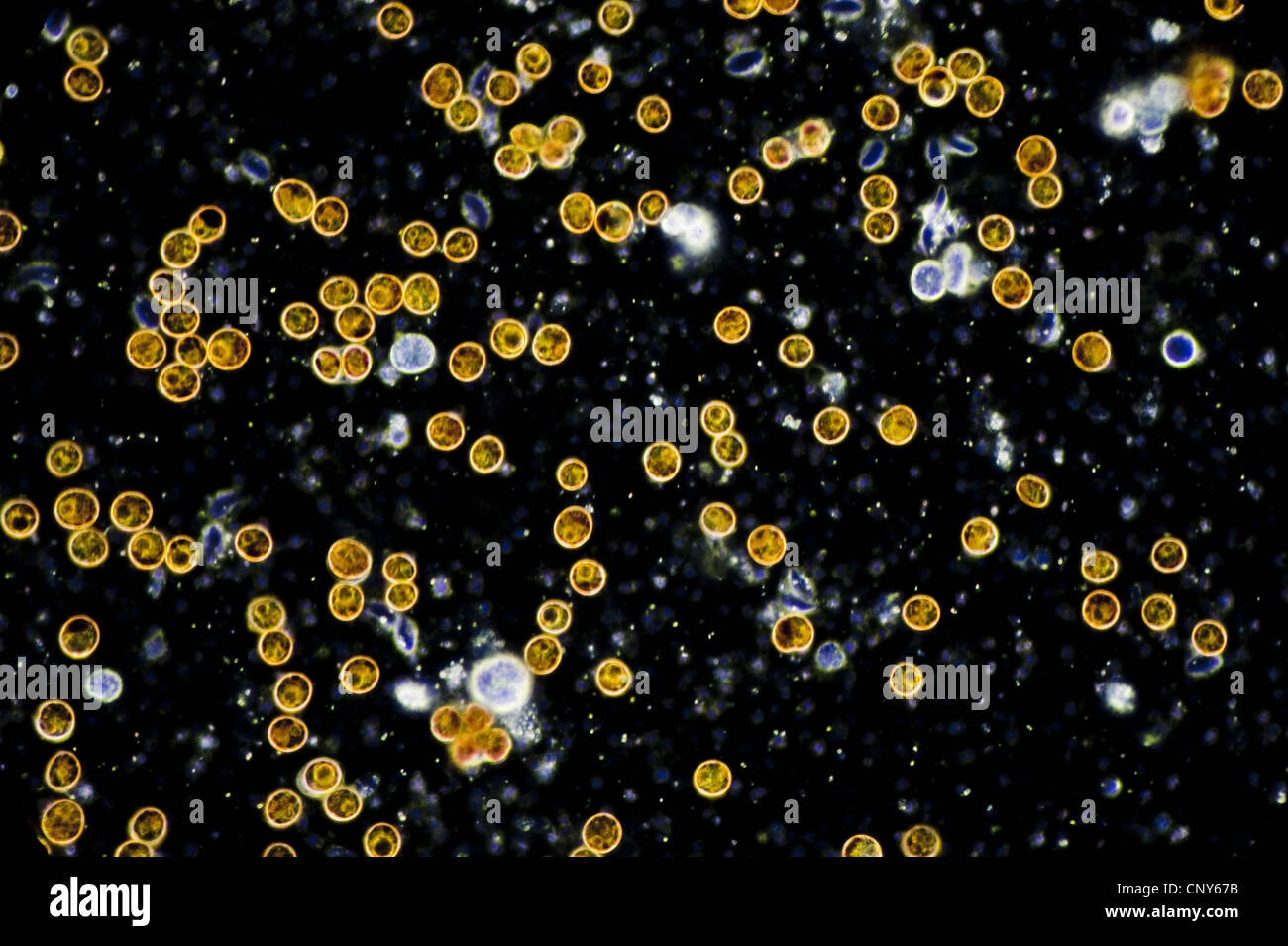 Microscopic photo of symbiotic algae (Zooxanthellae) of the dinoflagellat genus Symbiodinium (syn.: Gymnodinium). Sampled from a soft coral (Sinularia sp.) Stock Photohttps://www.alamy.com/image-license-details/?v=1https://www.alamy.com/stock-photo-microscopic-photo-of-symbiotic-algae-zooxanthellae-of-the-dinoflagellat-47926127.html
Microscopic photo of symbiotic algae (Zooxanthellae) of the dinoflagellat genus Symbiodinium (syn.: Gymnodinium). Sampled from a soft coral (Sinularia sp.) Stock Photohttps://www.alamy.com/image-license-details/?v=1https://www.alamy.com/stock-photo-microscopic-photo-of-symbiotic-algae-zooxanthellae-of-the-dinoflagellat-47926127.htmlRMCNY67B–Microscopic photo of symbiotic algae (Zooxanthellae) of the dinoflagellat genus Symbiodinium (syn.: Gymnodinium). Sampled from a soft coral (Sinularia sp.)
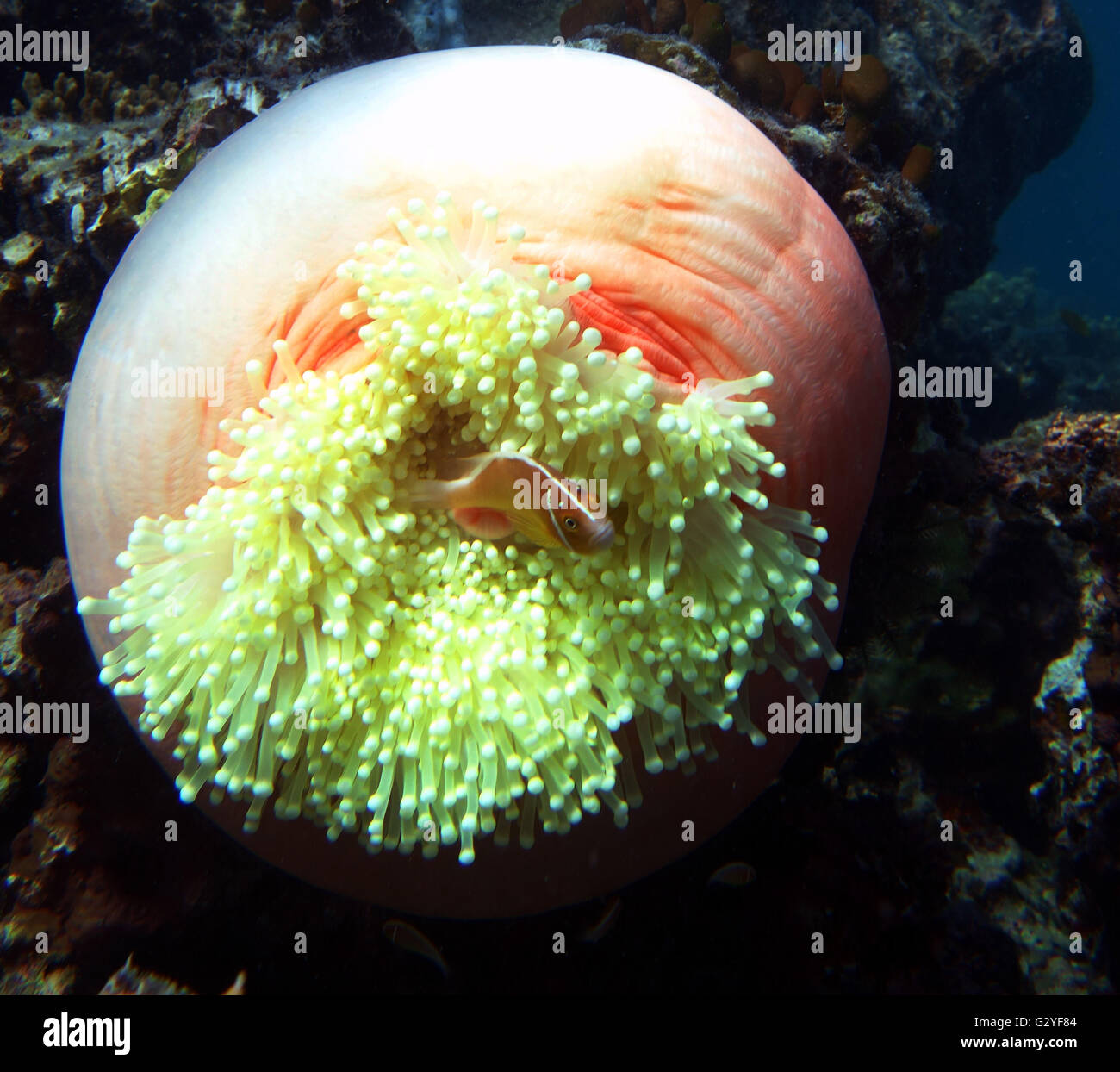 4 June 2016 - Great Barrier Reef, Australia - In the aftermath of this year's worst-ever coral bleaching event for the Great Barrier Reef, a clownfish family persist with inhabiting a bleached anemone host in Watson's Bay, Lizard Island, Great Barrier Reef, Queensland, Australia. Stock Photohttps://www.alamy.com/image-license-details/?v=1https://www.alamy.com/stock-photo-4-june-2016-great-barrier-reef-australia-in-the-aftermath-of-this-105096212.html
4 June 2016 - Great Barrier Reef, Australia - In the aftermath of this year's worst-ever coral bleaching event for the Great Barrier Reef, a clownfish family persist with inhabiting a bleached anemone host in Watson's Bay, Lizard Island, Great Barrier Reef, Queensland, Australia. Stock Photohttps://www.alamy.com/image-license-details/?v=1https://www.alamy.com/stock-photo-4-june-2016-great-barrier-reef-australia-in-the-aftermath-of-this-105096212.htmlRMG2YF84–4 June 2016 - Great Barrier Reef, Australia - In the aftermath of this year's worst-ever coral bleaching event for the Great Barrier Reef, a clownfish family persist with inhabiting a bleached anemone host in Watson's Bay, Lizard Island, Great Barrier Reef, Queensland, Australia.
 Symbiotic algae (zooxanthellae) from Aiptasia sp., probably belonging to the speceis Breviolum dendrogyrum. Stock Photohttps://www.alamy.com/image-license-details/?v=1https://www.alamy.com/symbiotic-algae-zooxanthellae-from-aiptasia-sp-probably-belonging-to-the-speceis-breviolum-dendrogyrum-image628578827.html
Symbiotic algae (zooxanthellae) from Aiptasia sp., probably belonging to the speceis Breviolum dendrogyrum. Stock Photohttps://www.alamy.com/image-license-details/?v=1https://www.alamy.com/symbiotic-algae-zooxanthellae-from-aiptasia-sp-probably-belonging-to-the-speceis-breviolum-dendrogyrum-image628578827.htmlRM2YEJ6KR–Symbiotic algae (zooxanthellae) from Aiptasia sp., probably belonging to the speceis Breviolum dendrogyrum.
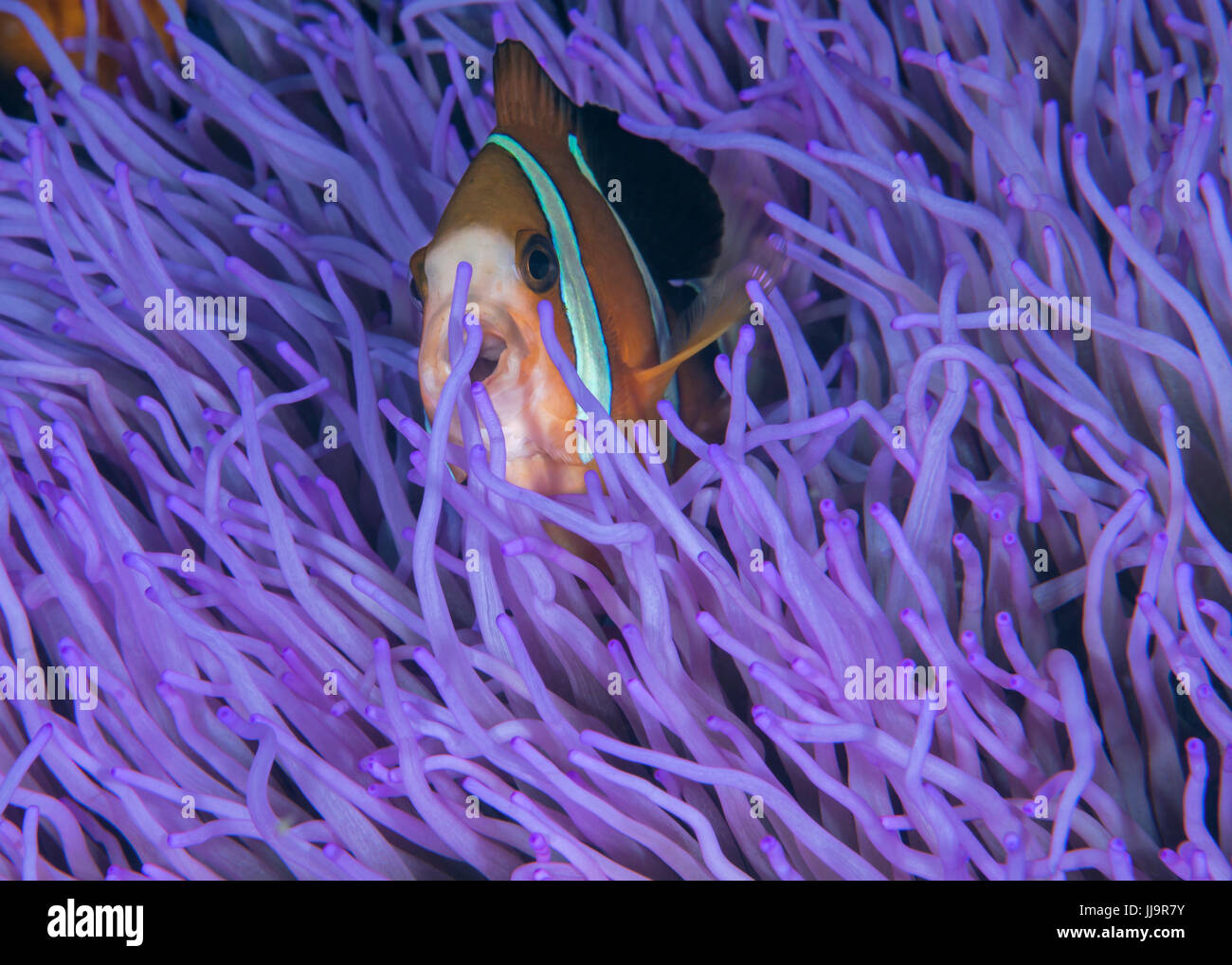 Two-banded clownfish (Amphiprion bicinctus) nestles in fluorescent purple tentacles of host anemone. Puerto Galera, Philippines. Stock Photohttps://www.alamy.com/image-license-details/?v=1https://www.alamy.com/stock-photo-two-banded-clownfish-amphiprion-bicinctus-nestles-in-fluorescent-purple-148962575.html
Two-banded clownfish (Amphiprion bicinctus) nestles in fluorescent purple tentacles of host anemone. Puerto Galera, Philippines. Stock Photohttps://www.alamy.com/image-license-details/?v=1https://www.alamy.com/stock-photo-two-banded-clownfish-amphiprion-bicinctus-nestles-in-fluorescent-purple-148962575.htmlRFJJ9R7Y–Two-banded clownfish (Amphiprion bicinctus) nestles in fluorescent purple tentacles of host anemone. Puerto Galera, Philippines.
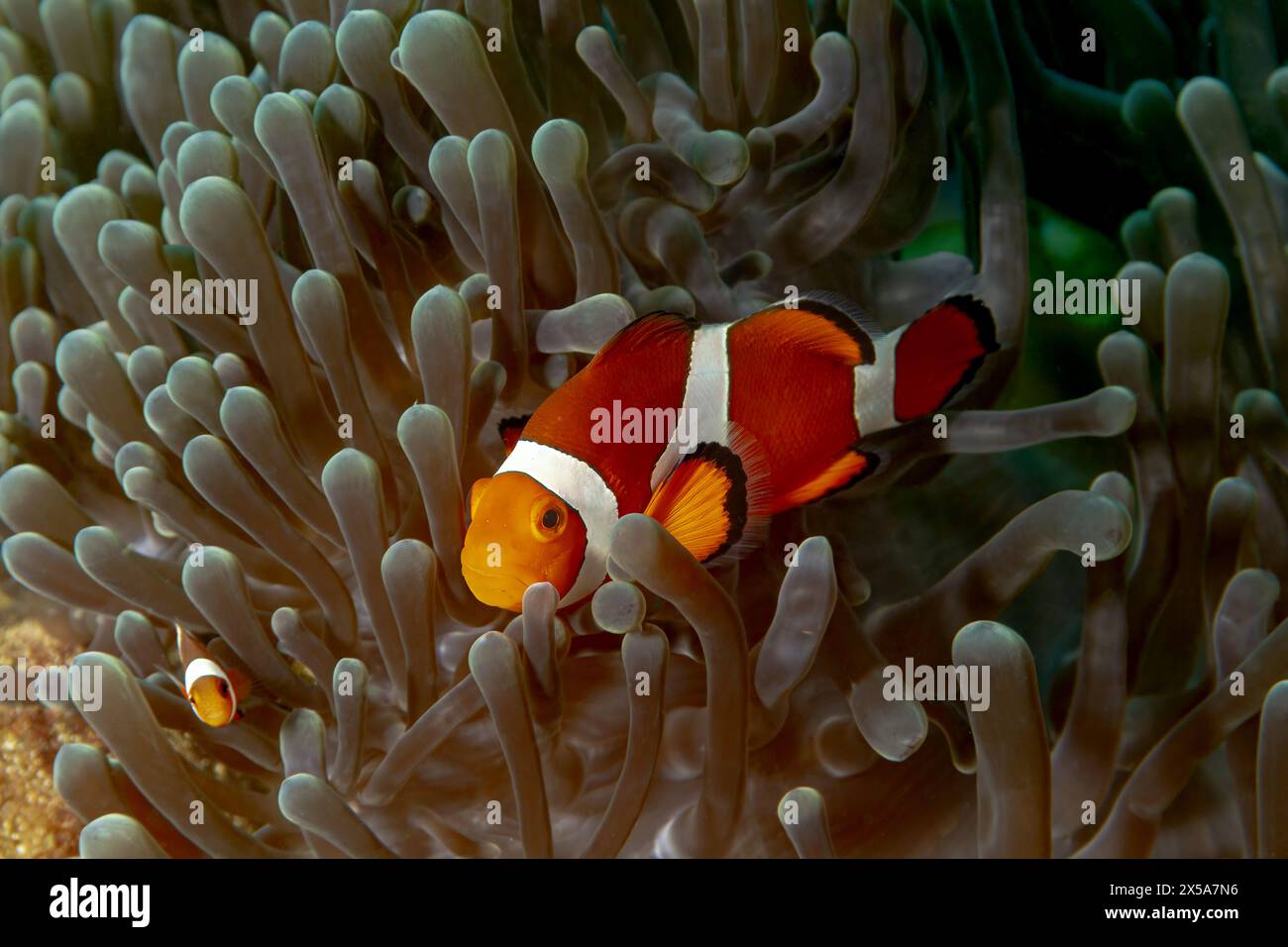 Amphiprion ocellaris nestled among the tentacles of its host anemone in a symbiotic marine relationship Stock Photohttps://www.alamy.com/image-license-details/?v=1https://www.alamy.com/amphiprion-ocellaris-nestled-among-the-tentacles-of-its-host-anemone-in-a-symbiotic-marine-relationship-image605661762.html
Amphiprion ocellaris nestled among the tentacles of its host anemone in a symbiotic marine relationship Stock Photohttps://www.alamy.com/image-license-details/?v=1https://www.alamy.com/amphiprion-ocellaris-nestled-among-the-tentacles-of-its-host-anemone-in-a-symbiotic-marine-relationship-image605661762.htmlRF2X5A7N6–Amphiprion ocellaris nestled among the tentacles of its host anemone in a symbiotic marine relationship
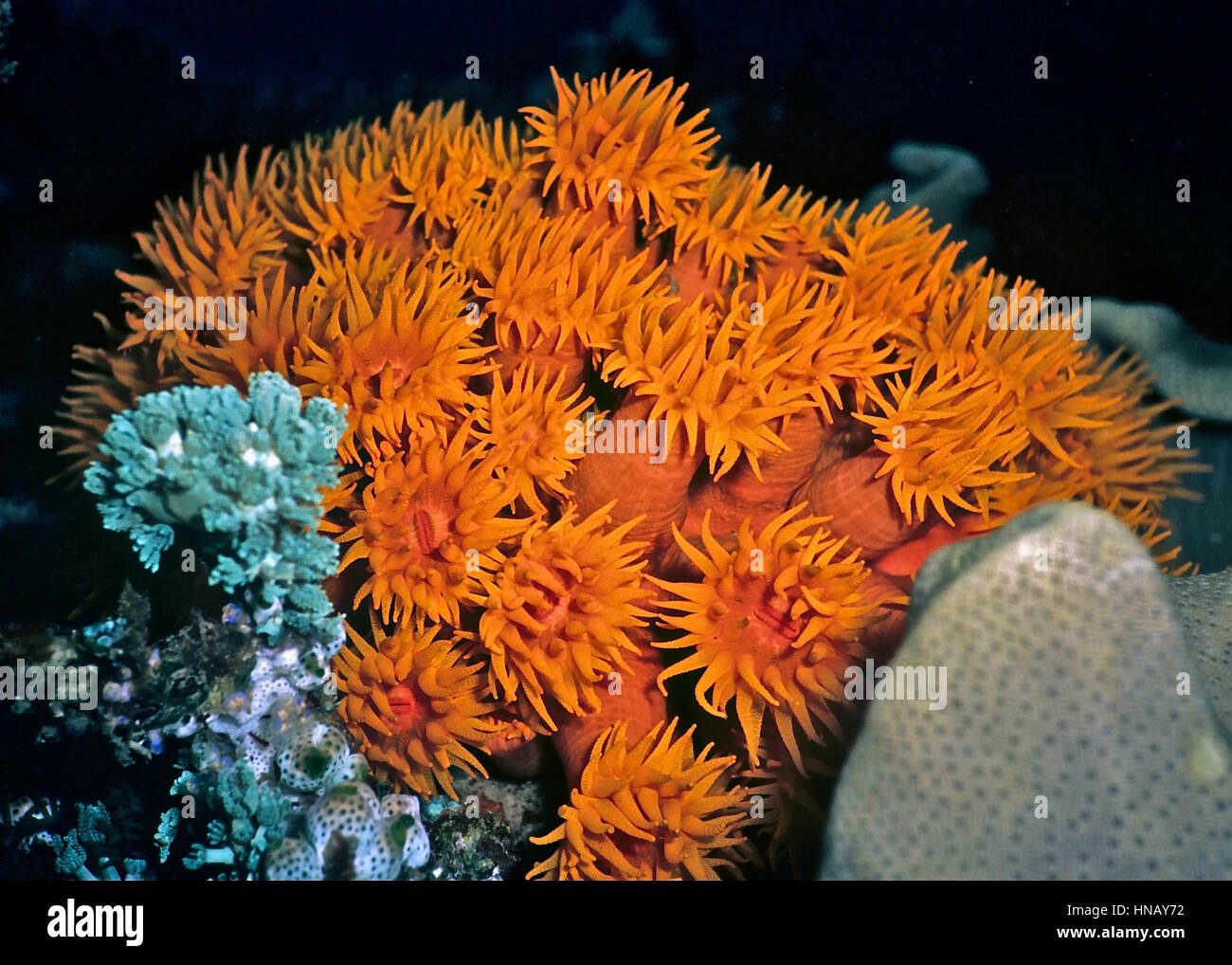 Red cup corals (Tubastraea faulkneri) have no symbiotic zooxanthellae and so do not benefit from photosynthesis. Found in deeper water. Sulawesi . Stock Photohttps://www.alamy.com/image-license-details/?v=1https://www.alamy.com/stock-photo-red-cup-corals-tubastraea-faulkneri-have-no-symbiotic-zooxanthellae-133621238.html
Red cup corals (Tubastraea faulkneri) have no symbiotic zooxanthellae and so do not benefit from photosynthesis. Found in deeper water. Sulawesi . Stock Photohttps://www.alamy.com/image-license-details/?v=1https://www.alamy.com/stock-photo-red-cup-corals-tubastraea-faulkneri-have-no-symbiotic-zooxanthellae-133621238.htmlRFHNAY72–Red cup corals (Tubastraea faulkneri) have no symbiotic zooxanthellae and so do not benefit from photosynthesis. Found in deeper water. Sulawesi .
 Giant Green Anemone, Anthopleura xanthogrammica, in tide pool at Point of Arches in Olympic National Park, Washington State, USA Stock Photohttps://www.alamy.com/image-license-details/?v=1https://www.alamy.com/giant-green-anemone-anthopleura-xanthogrammica-in-tide-pool-at-point-of-arches-in-olympic-national-park-washington-state-usa-image527139949.html
Giant Green Anemone, Anthopleura xanthogrammica, in tide pool at Point of Arches in Olympic National Park, Washington State, USA Stock Photohttps://www.alamy.com/image-license-details/?v=1https://www.alamy.com/giant-green-anemone-anthopleura-xanthogrammica-in-tide-pool-at-point-of-arches-in-olympic-national-park-washington-state-usa-image527139949.htmlRM2NHH8AN–Giant Green Anemone, Anthopleura xanthogrammica, in tide pool at Point of Arches in Olympic National Park, Washington State, USA
 Corals are beginning to bleach on a reef in Indonesia. Bleaching occurs as corals expel their endosymbionts (zooxanthellae) livi Stock Photohttps://www.alamy.com/image-license-details/?v=1https://www.alamy.com/stock-photo-corals-are-beginning-to-bleach-on-a-reef-in-indonesia-bleaching-occurs-90210729.html
Corals are beginning to bleach on a reef in Indonesia. Bleaching occurs as corals expel their endosymbionts (zooxanthellae) livi Stock Photohttps://www.alamy.com/image-license-details/?v=1https://www.alamy.com/stock-photo-corals-are-beginning-to-bleach-on-a-reef-in-indonesia-bleaching-occurs-90210729.htmlRFF6NCKN–Corals are beginning to bleach on a reef in Indonesia. Bleaching occurs as corals expel their endosymbionts (zooxanthellae) livi
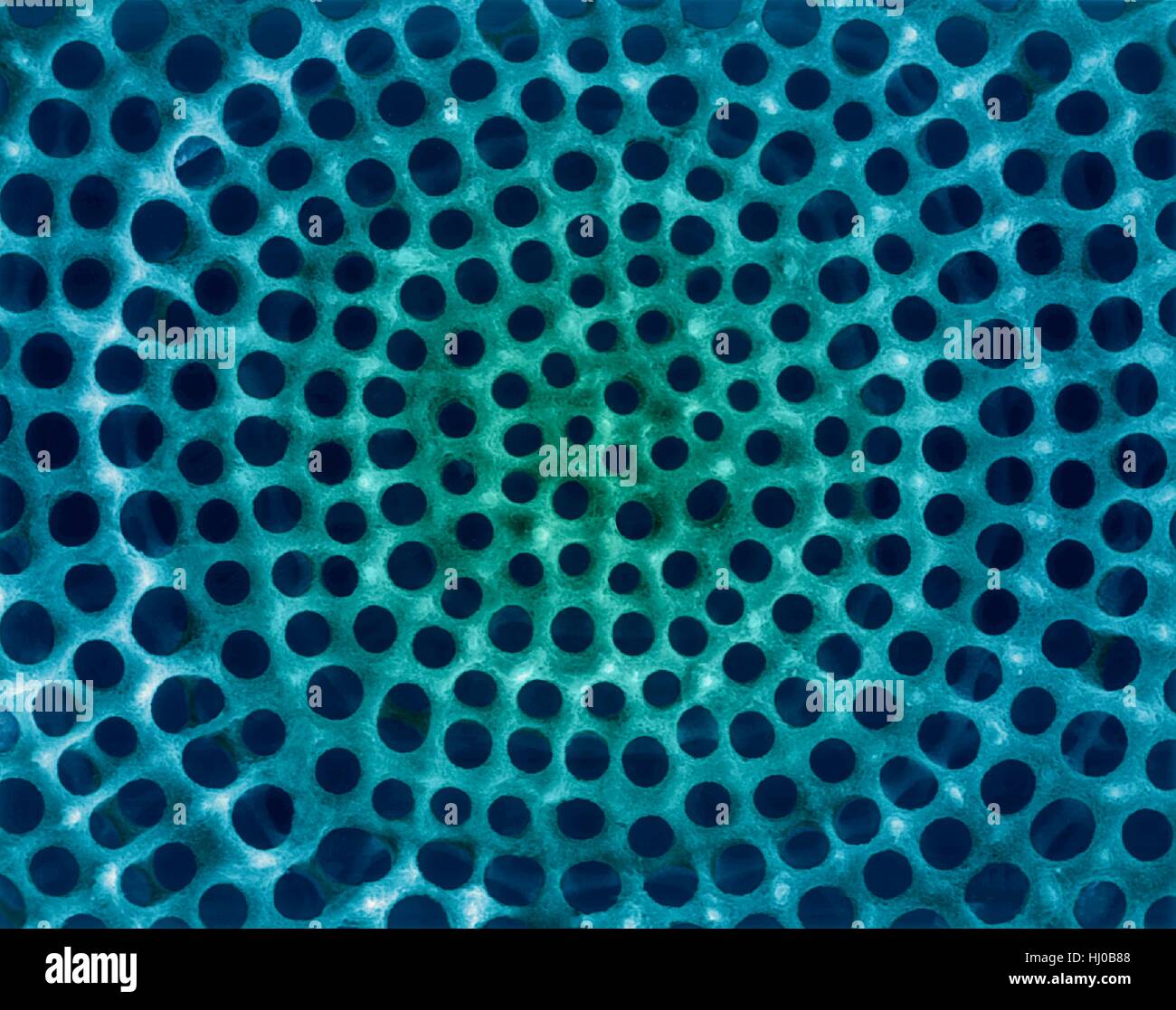 Radiolarian test (marine),coloured scanning electron micrograph (SEM).The hard skeleton surface is composed of silica or strontium sulphate.The Radiolaria (also called Radiozoa) are protozoa that produce intricate mineral skeletons.They are found as zooplankton throughout ocean their skeletal Stock Photohttps://www.alamy.com/image-license-details/?v=1https://www.alamy.com/stock-photo-radiolarian-test-marinecoloured-scanning-electron-micrograph-semthe-131545240.html
Radiolarian test (marine),coloured scanning electron micrograph (SEM).The hard skeleton surface is composed of silica or strontium sulphate.The Radiolaria (also called Radiozoa) are protozoa that produce intricate mineral skeletons.They are found as zooplankton throughout ocean their skeletal Stock Photohttps://www.alamy.com/image-license-details/?v=1https://www.alamy.com/stock-photo-radiolarian-test-marinecoloured-scanning-electron-micrograph-semthe-131545240.htmlRFHJ0B88–Radiolarian test (marine),coloured scanning electron micrograph (SEM).The hard skeleton surface is composed of silica or strontium sulphate.The Radiolaria (also called Radiozoa) are protozoa that produce intricate mineral skeletons.They are found as zooplankton throughout ocean their skeletal
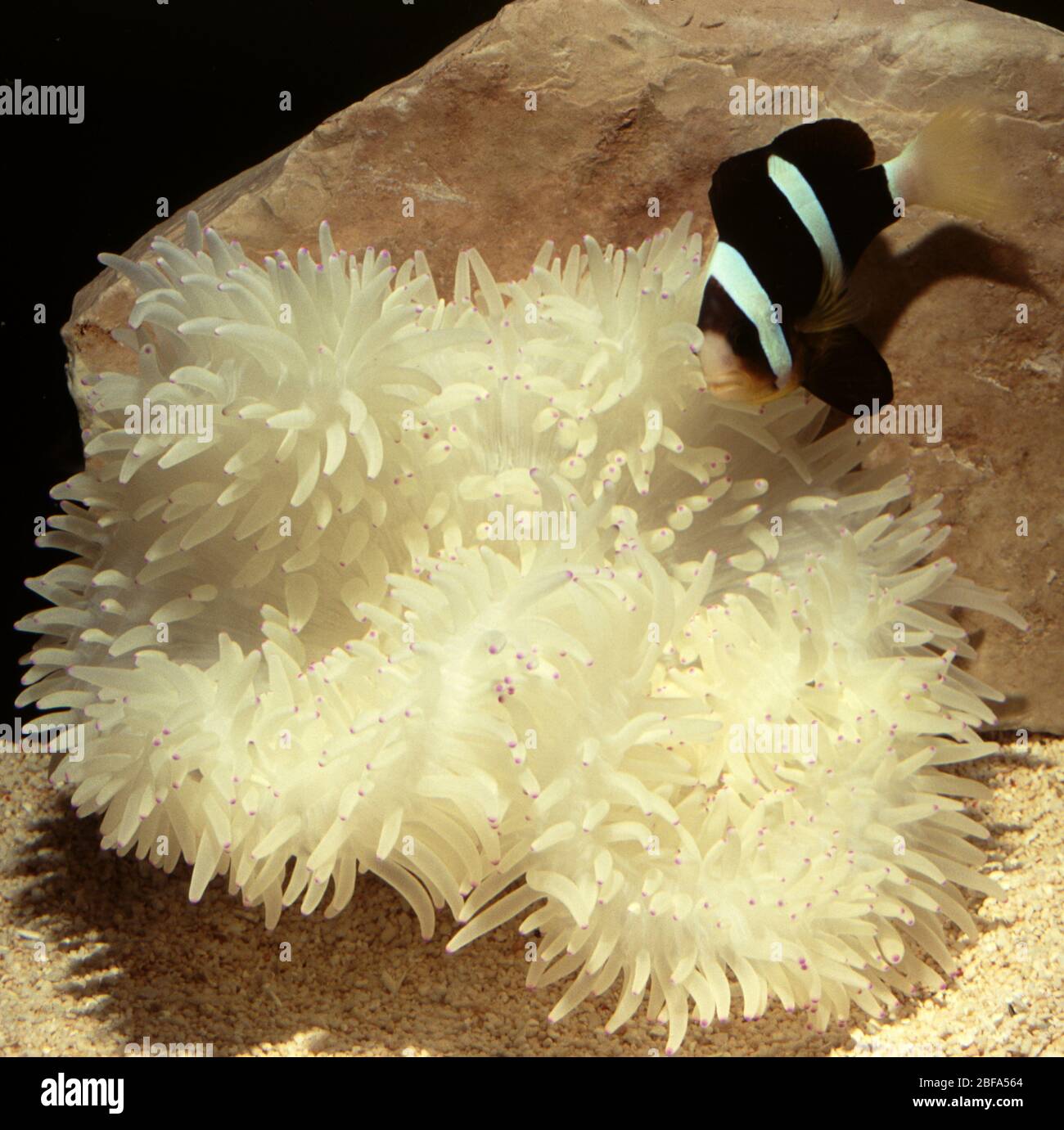 Clark's anemonefish (Amphiprion clarkii) symbiotic with Giant anemone, Heteractis crispa Stock Photohttps://www.alamy.com/image-license-details/?v=1https://www.alamy.com/clarks-anemonefish-amphiprion-clarkii-symbiotic-with-giant-anemone-heteractis-crispa-image353650812.html
Clark's anemonefish (Amphiprion clarkii) symbiotic with Giant anemone, Heteractis crispa Stock Photohttps://www.alamy.com/image-license-details/?v=1https://www.alamy.com/clarks-anemonefish-amphiprion-clarkii-symbiotic-with-giant-anemone-heteractis-crispa-image353650812.htmlRM2BFA564–Clark's anemonefish (Amphiprion clarkii) symbiotic with Giant anemone, Heteractis crispa
 This hard coral colony in the Pacific has begun to bleach, expelling its symbiotic zooxanthellae, consequences of global climate change and climate wa Stock Photohttps://www.alamy.com/image-license-details/?v=1https://www.alamy.com/this-hard-coral-colony-in-the-pacific-has-begun-to-bleach-expelling-its-symbiotic-zooxanthellae-consequences-of-global-climate-change-and-climate-wa-image330677957.html
This hard coral colony in the Pacific has begun to bleach, expelling its symbiotic zooxanthellae, consequences of global climate change and climate wa Stock Photohttps://www.alamy.com/image-license-details/?v=1https://www.alamy.com/this-hard-coral-colony-in-the-pacific-has-begun-to-bleach-expelling-its-symbiotic-zooxanthellae-consequences-of-global-climate-change-and-climate-wa-image330677957.htmlRM2A5YK31–This hard coral colony in the Pacific has begun to bleach, expelling its symbiotic zooxanthellae, consequences of global climate change and climate wa
 Long-cirri Phyllodesmium Nudibranch, Phyllodesmium longicirrum, with cerata with digestive gland ducts connected to zooxanthellae, Sampiri dive site, Stock Photohttps://www.alamy.com/image-license-details/?v=1https://www.alamy.com/long-cirri-phyllodesmium-nudibranch-phyllodesmium-longicirrum-with-cerata-with-digestive-gland-ducts-connected-to-zooxanthellae-sampiri-dive-site-image564515735.html
Long-cirri Phyllodesmium Nudibranch, Phyllodesmium longicirrum, with cerata with digestive gland ducts connected to zooxanthellae, Sampiri dive site, Stock Photohttps://www.alamy.com/image-license-details/?v=1https://www.alamy.com/long-cirri-phyllodesmium-nudibranch-phyllodesmium-longicirrum-with-cerata-with-digestive-gland-ducts-connected-to-zooxanthellae-sampiri-dive-site-image564515735.htmlRM2RPBWG7–Long-cirri Phyllodesmium Nudibranch, Phyllodesmium longicirrum, with cerata with digestive gland ducts connected to zooxanthellae, Sampiri dive site,
 Coral polyps on a coral reef glow fluorescent green at night due to their symbiotic zooxanthellae Stock Photohttps://www.alamy.com/image-license-details/?v=1https://www.alamy.com/coral-polyps-on-a-coral-reef-glow-fluorescent-green-at-night-due-to-their-symbiotic-zooxanthellae-image216872323.html
Coral polyps on a coral reef glow fluorescent green at night due to their symbiotic zooxanthellae Stock Photohttps://www.alamy.com/image-license-details/?v=1https://www.alamy.com/coral-polyps-on-a-coral-reef-glow-fluorescent-green-at-night-due-to-their-symbiotic-zooxanthellae-image216872323.htmlRMPGRAT3–Coral polyps on a coral reef glow fluorescent green at night due to their symbiotic zooxanthellae
![Crocea giant clam or Boring clam [Tridacna crocea]. Colours in the mantle come from symbiotic zooxanthellae in tissue. Red Sea, Egypt. Stock Photo Crocea giant clam or Boring clam [Tridacna crocea]. Colours in the mantle come from symbiotic zooxanthellae in tissue. Red Sea, Egypt. Stock Photo](https://c8.alamy.com/comp/2RMF5KD/crocea-giant-clam-or-boring-clam-tridacna-crocea-colours-in-the-mantle-come-from-symbiotic-zooxanthellae-in-tissue-red-sea-egypt-2RMF5KD.jpg) Crocea giant clam or Boring clam [Tridacna crocea]. Colours in the mantle come from symbiotic zooxanthellae in tissue. Red Sea, Egypt. Stock Photohttps://www.alamy.com/image-license-details/?v=1https://www.alamy.com/crocea-giant-clam-or-boring-clam-tridacna-crocea-colours-in-the-mantle-come-from-symbiotic-zooxanthellae-in-tissue-red-sea-egypt-image563358641.html
Crocea giant clam or Boring clam [Tridacna crocea]. Colours in the mantle come from symbiotic zooxanthellae in tissue. Red Sea, Egypt. Stock Photohttps://www.alamy.com/image-license-details/?v=1https://www.alamy.com/crocea-giant-clam-or-boring-clam-tridacna-crocea-colours-in-the-mantle-come-from-symbiotic-zooxanthellae-in-tissue-red-sea-egypt-image563358641.htmlRM2RMF5KD–Crocea giant clam or Boring clam [Tridacna crocea]. Colours in the mantle come from symbiotic zooxanthellae in tissue. Red Sea, Egypt.
 Boat moves between island keys in tropical waters Stock Photohttps://www.alamy.com/image-license-details/?v=1https://www.alamy.com/boat-moves-between-island-keys-in-tropical-waters-image64020444.html
Boat moves between island keys in tropical waters Stock Photohttps://www.alamy.com/image-license-details/?v=1https://www.alamy.com/boat-moves-between-island-keys-in-tropical-waters-image64020444.htmlRFDM4AMC–Boat moves between island keys in tropical waters
 Detail of mantle of Giant giant clam (Tridacna gigas) Colours come from symbiotic zooxanthellae in tissue,. Indonesia. Stock Photohttps://www.alamy.com/image-license-details/?v=1https://www.alamy.com/detail-of-mantle-of-giant-giant-clam-tridacna-gigas-colours-come-from-symbiotic-zooxanthellae-in-tissue-indonesia-image357429725.html
Detail of mantle of Giant giant clam (Tridacna gigas) Colours come from symbiotic zooxanthellae in tissue,. Indonesia. Stock Photohttps://www.alamy.com/image-license-details/?v=1https://www.alamy.com/detail-of-mantle-of-giant-giant-clam-tridacna-gigas-colours-come-from-symbiotic-zooxanthellae-in-tissue-indonesia-image357429725.htmlRM2BNE979–Detail of mantle of Giant giant clam (Tridacna gigas) Colours come from symbiotic zooxanthellae in tissue,. Indonesia.
 Phyllodesmium crypticum, solar powered nudibranch feeding on hydroids, Alam Batu, Sim City, Bali, Indonesia, Indo-Pacific Ocean Stock Photohttps://www.alamy.com/image-license-details/?v=1https://www.alamy.com/stock-photo-phyllodesmium-crypticum-solar-powered-nudibranch-feeding-on-hydroids-28159462.html
Phyllodesmium crypticum, solar powered nudibranch feeding on hydroids, Alam Batu, Sim City, Bali, Indonesia, Indo-Pacific Ocean Stock Photohttps://www.alamy.com/image-license-details/?v=1https://www.alamy.com/stock-photo-phyllodesmium-crypticum-solar-powered-nudibranch-feeding-on-hydroids-28159462.htmlRMBHPNK2–Phyllodesmium crypticum, solar powered nudibranch feeding on hydroids, Alam Batu, Sim City, Bali, Indonesia, Indo-Pacific Ocean
 A mushroom coral (Fungia sp.) has bleached and expelled its symbiotic zooxanthellae due to high sea temperatures. Stock Photohttps://www.alamy.com/image-license-details/?v=1https://www.alamy.com/stock-photo-a-mushroom-coral-fungia-sp-has-bleached-and-expelled-its-symbiotic-111596885.html
A mushroom coral (Fungia sp.) has bleached and expelled its symbiotic zooxanthellae due to high sea temperatures. Stock Photohttps://www.alamy.com/image-license-details/?v=1https://www.alamy.com/stock-photo-a-mushroom-coral-fungia-sp-has-bleached-and-expelled-its-symbiotic-111596885.htmlRMGDFJY1–A mushroom coral (Fungia sp.) has bleached and expelled its symbiotic zooxanthellae due to high sea temperatures.
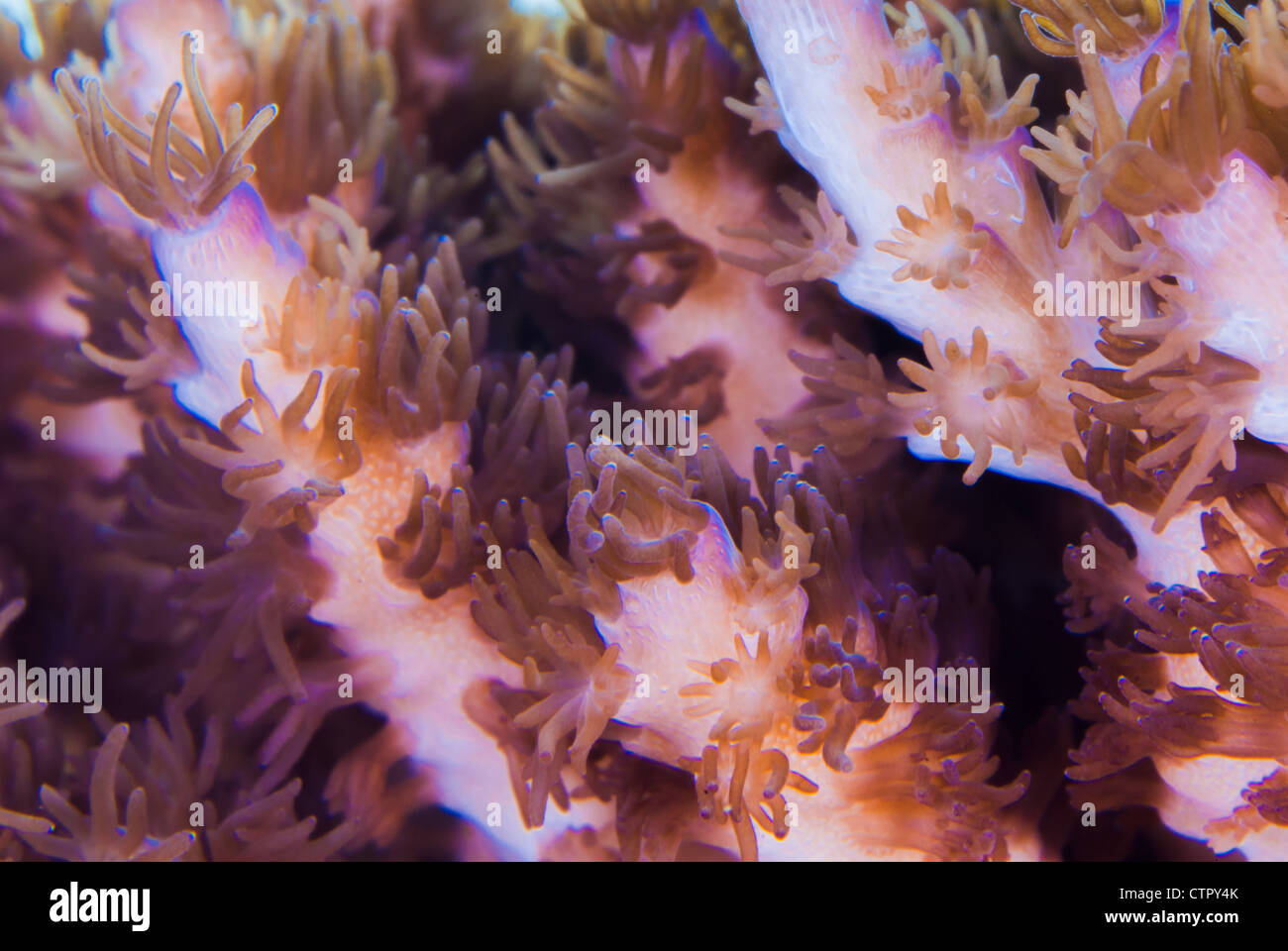 Close up of Acropora coral polyps open showing connecting channels and zooxanthellae Stock Photohttps://www.alamy.com/image-license-details/?v=1https://www.alamy.com/stock-photo-close-up-of-acropora-coral-polyps-open-showing-connecting-channels-49676723.html
Close up of Acropora coral polyps open showing connecting channels and zooxanthellae Stock Photohttps://www.alamy.com/image-license-details/?v=1https://www.alamy.com/stock-photo-close-up-of-acropora-coral-polyps-open-showing-connecting-channels-49676723.htmlRFCTPY4K–Close up of Acropora coral polyps open showing connecting channels and zooxanthellae
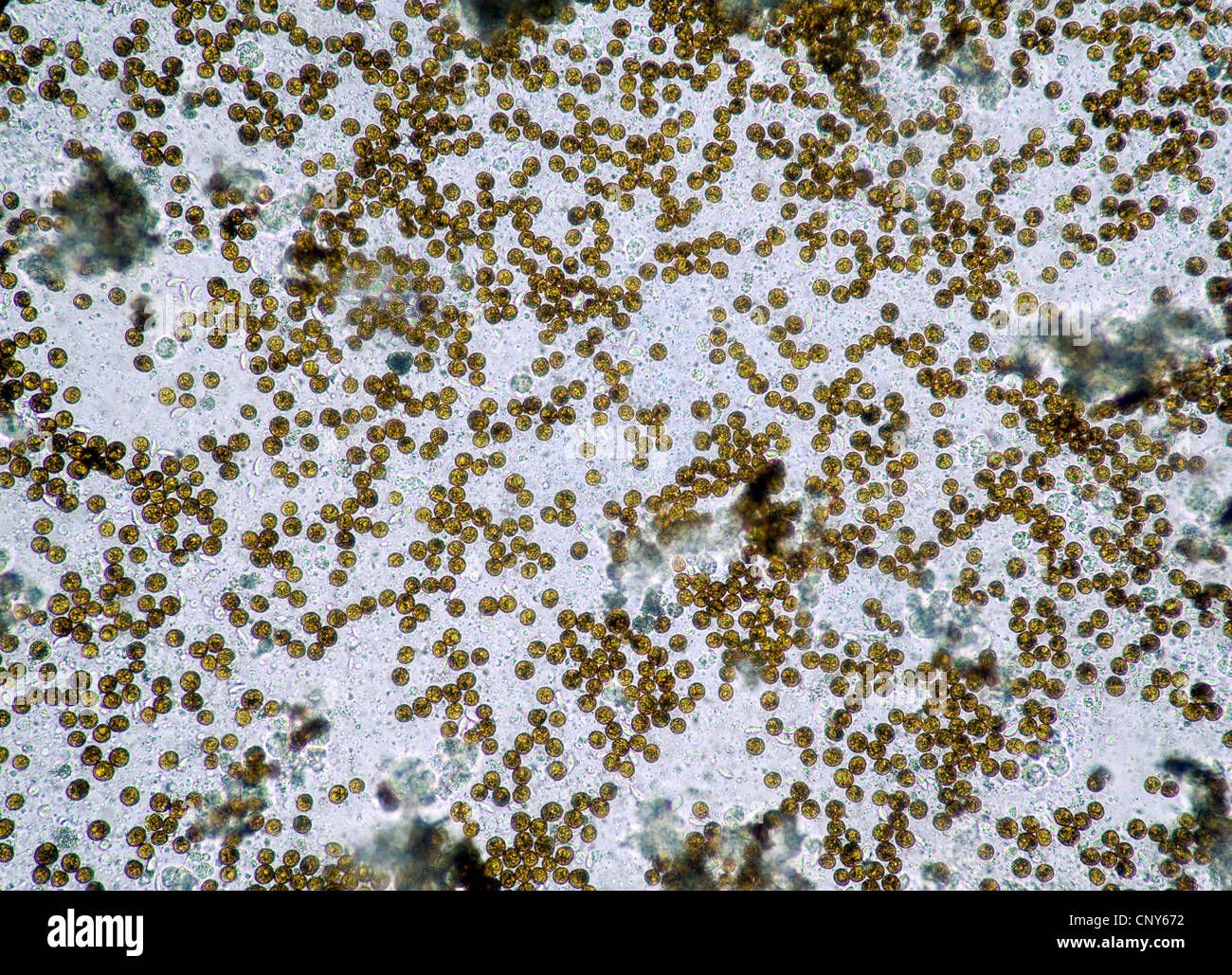 Microscopic photo of symbiotic algae (Zooxanthellae) of the dinoflagellat genus Symbiodinium (syn.: Gymnodinium). Sampled from a soft coral (Sinularia sp.) Stock Photohttps://www.alamy.com/image-license-details/?v=1https://www.alamy.com/stock-photo-microscopic-photo-of-symbiotic-algae-zooxanthellae-of-the-dinoflagellat-47926118.html
Microscopic photo of symbiotic algae (Zooxanthellae) of the dinoflagellat genus Symbiodinium (syn.: Gymnodinium). Sampled from a soft coral (Sinularia sp.) Stock Photohttps://www.alamy.com/image-license-details/?v=1https://www.alamy.com/stock-photo-microscopic-photo-of-symbiotic-algae-zooxanthellae-of-the-dinoflagellat-47926118.htmlRMCNY672–Microscopic photo of symbiotic algae (Zooxanthellae) of the dinoflagellat genus Symbiodinium (syn.: Gymnodinium). Sampled from a soft coral (Sinularia sp.)
 4 June 2016 - Great Barrier Reef, Australia - In the aftermath of this year's worst-ever coral bleaching event for the Great Barrier Reef, a clownfish family persist with inhabiting a bleached anemone host in Watson's Bay, Lizard Island, Great Barrier Reef, Queensland, Australia. Stock Photohttps://www.alamy.com/image-license-details/?v=1https://www.alamy.com/stock-photo-4-june-2016-great-barrier-reef-australia-in-the-aftermath-of-this-105096229.html
4 June 2016 - Great Barrier Reef, Australia - In the aftermath of this year's worst-ever coral bleaching event for the Great Barrier Reef, a clownfish family persist with inhabiting a bleached anemone host in Watson's Bay, Lizard Island, Great Barrier Reef, Queensland, Australia. Stock Photohttps://www.alamy.com/image-license-details/?v=1https://www.alamy.com/stock-photo-4-june-2016-great-barrier-reef-australia-in-the-aftermath-of-this-105096229.htmlRMG2YF8N–4 June 2016 - Great Barrier Reef, Australia - In the aftermath of this year's worst-ever coral bleaching event for the Great Barrier Reef, a clownfish family persist with inhabiting a bleached anemone host in Watson's Bay, Lizard Island, Great Barrier Reef, Queensland, Australia.
 Symbiotic algae (zooxanthellae) from Aiptasia sp., probably belonging to the speceis Breviolum dendrogyrum. Stock Photohttps://www.alamy.com/image-license-details/?v=1https://www.alamy.com/symbiotic-algae-zooxanthellae-from-aiptasia-sp-probably-belonging-to-the-speceis-breviolum-dendrogyrum-image628578830.html
Symbiotic algae (zooxanthellae) from Aiptasia sp., probably belonging to the speceis Breviolum dendrogyrum. Stock Photohttps://www.alamy.com/image-license-details/?v=1https://www.alamy.com/symbiotic-algae-zooxanthellae-from-aiptasia-sp-probably-belonging-to-the-speceis-breviolum-dendrogyrum-image628578830.htmlRM2YEJ6KX–Symbiotic algae (zooxanthellae) from Aiptasia sp., probably belonging to the speceis Breviolum dendrogyrum.
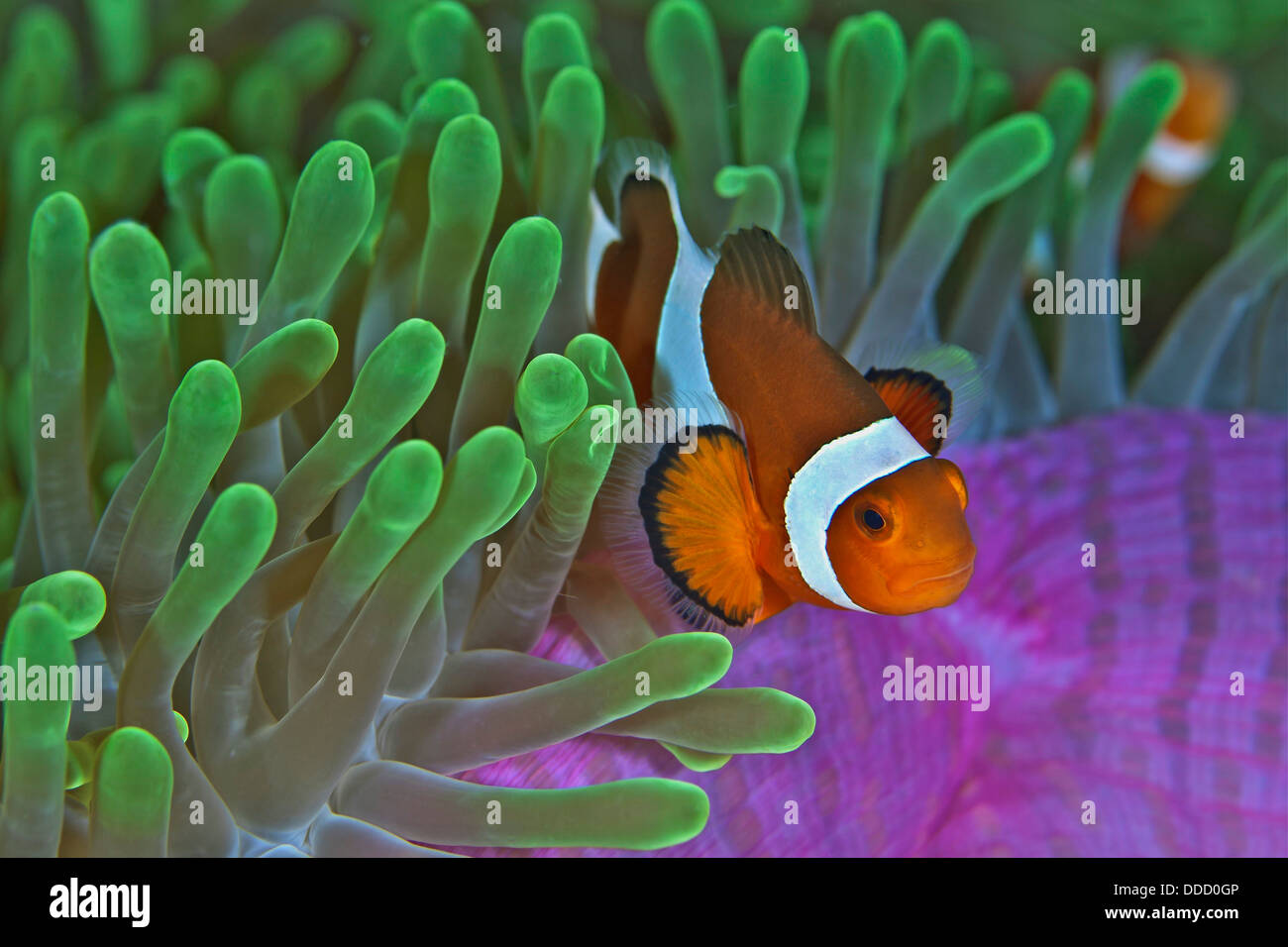 Orange clownfish on magnificent anemone. Stock Photohttps://www.alamy.com/image-license-details/?v=1https://www.alamy.com/stock-photo-orange-clownfish-on-magnificent-anemone-59907478.html
Orange clownfish on magnificent anemone. Stock Photohttps://www.alamy.com/image-license-details/?v=1https://www.alamy.com/stock-photo-orange-clownfish-on-magnificent-anemone-59907478.htmlRMDDD0GP–Orange clownfish on magnificent anemone.
 Colony of fire coral growing off Hamata coast, Egypt, Red Sea Stock Photohttps://www.alamy.com/image-license-details/?v=1https://www.alamy.com/stock-photo-colony-of-fire-coral-growing-off-hamata-coast-egypt-red-sea-32282721.html
Colony of fire coral growing off Hamata coast, Egypt, Red Sea Stock Photohttps://www.alamy.com/image-license-details/?v=1https://www.alamy.com/stock-photo-colony-of-fire-coral-growing-off-hamata-coast-egypt-red-sea-32282721.htmlRMBTEGX9–Colony of fire coral growing off Hamata coast, Egypt, Red Sea
 Juvenile western clown anemone fish hiding amongst the tentacles of a bubble tip anemone Stock Photohttps://www.alamy.com/image-license-details/?v=1https://www.alamy.com/juvenile-western-clown-anemone-fish-hiding-amongst-the-tentacles-of-a-bubble-tip-anemone-image627323156.html
Juvenile western clown anemone fish hiding amongst the tentacles of a bubble tip anemone Stock Photohttps://www.alamy.com/image-license-details/?v=1https://www.alamy.com/juvenile-western-clown-anemone-fish-hiding-amongst-the-tentacles-of-a-bubble-tip-anemone-image627323156.htmlRM2YCH12C–Juvenile western clown anemone fish hiding amongst the tentacles of a bubble tip anemone
 Coral reef in the Blue Hole off Dahab in the Red Sea in Egypt. Stock Photohttps://www.alamy.com/image-license-details/?v=1https://www.alamy.com/stock-photo-coral-reef-in-the-blue-hole-off-dahab-in-the-red-sea-in-egypt-29215102.html
Coral reef in the Blue Hole off Dahab in the Red Sea in Egypt. Stock Photohttps://www.alamy.com/image-license-details/?v=1https://www.alamy.com/stock-photo-coral-reef-in-the-blue-hole-off-dahab-in-the-red-sea-in-egypt-29215102.htmlRMBKET4E–Coral reef in the Blue Hole off Dahab in the Red Sea in Egypt.
 Corals are beginning to bleach on a reef in Indonesia. Bleaching occurs as corals expel their endosymbionts (zooxanthellae) livi Stock Photohttps://www.alamy.com/image-license-details/?v=1https://www.alamy.com/stock-photo-corals-are-beginning-to-bleach-on-a-reef-in-indonesia-bleaching-occurs-90210728.html
Corals are beginning to bleach on a reef in Indonesia. Bleaching occurs as corals expel their endosymbionts (zooxanthellae) livi Stock Photohttps://www.alamy.com/image-license-details/?v=1https://www.alamy.com/stock-photo-corals-are-beginning-to-bleach-on-a-reef-in-indonesia-bleaching-occurs-90210728.htmlRFF6NCKM–Corals are beginning to bleach on a reef in Indonesia. Bleaching occurs as corals expel their endosymbionts (zooxanthellae) livi
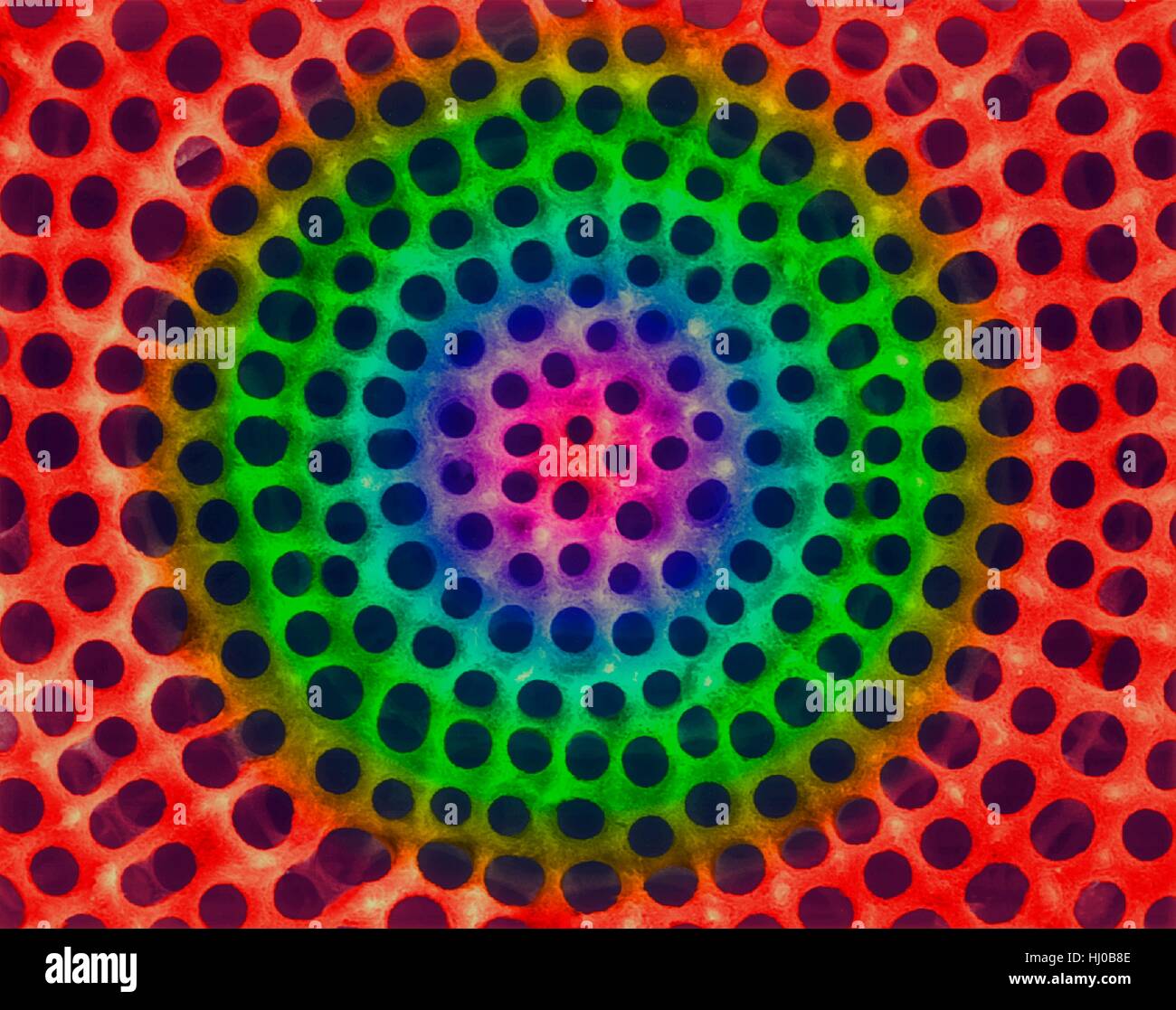 Radiolarian test (marine),coloured scanning electron micrograph (SEM).The hard skeleton surface is composed of silica or strontium sulphate.The Radiolaria (also called Radiozoa) are protozoa that produce intricate mineral skeletons.They are found as zooplankton throughout ocean their skeletal Stock Photohttps://www.alamy.com/image-license-details/?v=1https://www.alamy.com/stock-photo-radiolarian-test-marinecoloured-scanning-electron-micrograph-semthe-131545246.html
Radiolarian test (marine),coloured scanning electron micrograph (SEM).The hard skeleton surface is composed of silica or strontium sulphate.The Radiolaria (also called Radiozoa) are protozoa that produce intricate mineral skeletons.They are found as zooplankton throughout ocean their skeletal Stock Photohttps://www.alamy.com/image-license-details/?v=1https://www.alamy.com/stock-photo-radiolarian-test-marinecoloured-scanning-electron-micrograph-semthe-131545246.htmlRFHJ0B8E–Radiolarian test (marine),coloured scanning electron micrograph (SEM).The hard skeleton surface is composed of silica or strontium sulphate.The Radiolaria (also called Radiozoa) are protozoa that produce intricate mineral skeletons.They are found as zooplankton throughout ocean their skeletal
 Pink anemonefish (Amphiprion perideraion) symbiotic with Giant anemone, Heteractis magnifica Stock Photohttps://www.alamy.com/image-license-details/?v=1https://www.alamy.com/pink-anemonefish-amphiprion-perideraion-symbiotic-with-giant-anemone-heteractis-magnifica-image353650807.html
Pink anemonefish (Amphiprion perideraion) symbiotic with Giant anemone, Heteractis magnifica Stock Photohttps://www.alamy.com/image-license-details/?v=1https://www.alamy.com/pink-anemonefish-amphiprion-perideraion-symbiotic-with-giant-anemone-heteractis-magnifica-image353650807.htmlRM2BFA55Y–Pink anemonefish (Amphiprion perideraion) symbiotic with Giant anemone, Heteractis magnifica
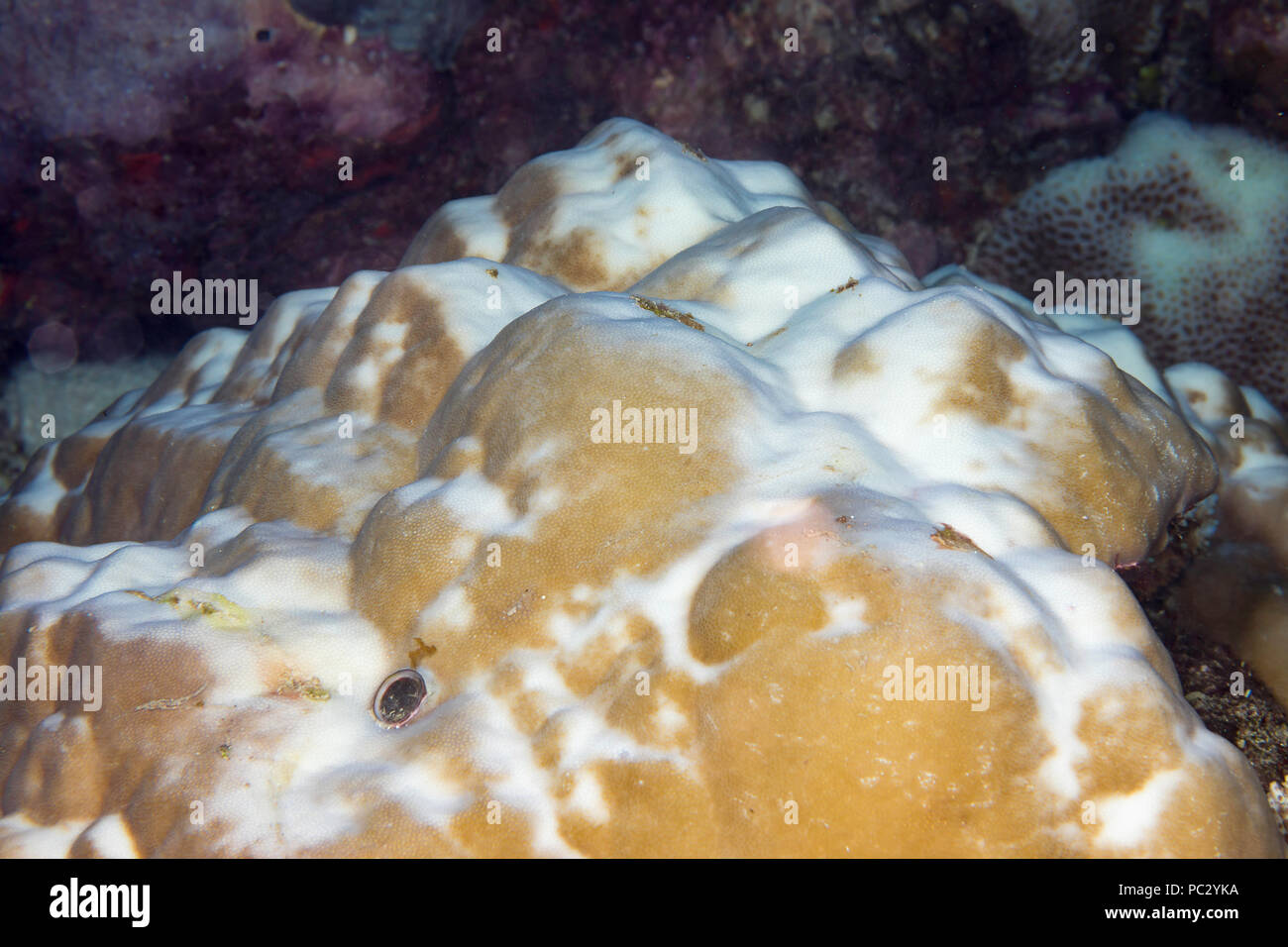 This hard coral colony in the Pacific has begun to bleach, expelling its symbiotic zooxanthellae, consequences of global climate change and climate wa Stock Photohttps://www.alamy.com/image-license-details/?v=1https://www.alamy.com/this-hard-coral-colony-in-the-pacific-has-begun-to-bleach-expelling-its-symbiotic-zooxanthellae-consequences-of-global-climate-change-and-climate-wa-image213965902.html
This hard coral colony in the Pacific has begun to bleach, expelling its symbiotic zooxanthellae, consequences of global climate change and climate wa Stock Photohttps://www.alamy.com/image-license-details/?v=1https://www.alamy.com/this-hard-coral-colony-in-the-pacific-has-begun-to-bleach-expelling-its-symbiotic-zooxanthellae-consequences-of-global-climate-change-and-climate-wa-image213965902.htmlRMPC2YKA–This hard coral colony in the Pacific has begun to bleach, expelling its symbiotic zooxanthellae, consequences of global climate change and climate wa
 Long-cirri Phyllodesmium Nudibranch, Phyllodesmium longicirrum, with cerata with digestive gland ducts connected to zooxanthellae, Sampiri dive site, Stock Photohttps://www.alamy.com/image-license-details/?v=1https://www.alamy.com/long-cirri-phyllodesmium-nudibranch-phyllodesmium-longicirrum-with-cerata-with-digestive-gland-ducts-connected-to-zooxanthellae-sampiri-dive-site-image564516040.html
Long-cirri Phyllodesmium Nudibranch, Phyllodesmium longicirrum, with cerata with digestive gland ducts connected to zooxanthellae, Sampiri dive site, Stock Photohttps://www.alamy.com/image-license-details/?v=1https://www.alamy.com/long-cirri-phyllodesmium-nudibranch-phyllodesmium-longicirrum-with-cerata-with-digestive-gland-ducts-connected-to-zooxanthellae-sampiri-dive-site-image564516040.htmlRM2RPBWY4–Long-cirri Phyllodesmium Nudibranch, Phyllodesmium longicirrum, with cerata with digestive gland ducts connected to zooxanthellae, Sampiri dive site,
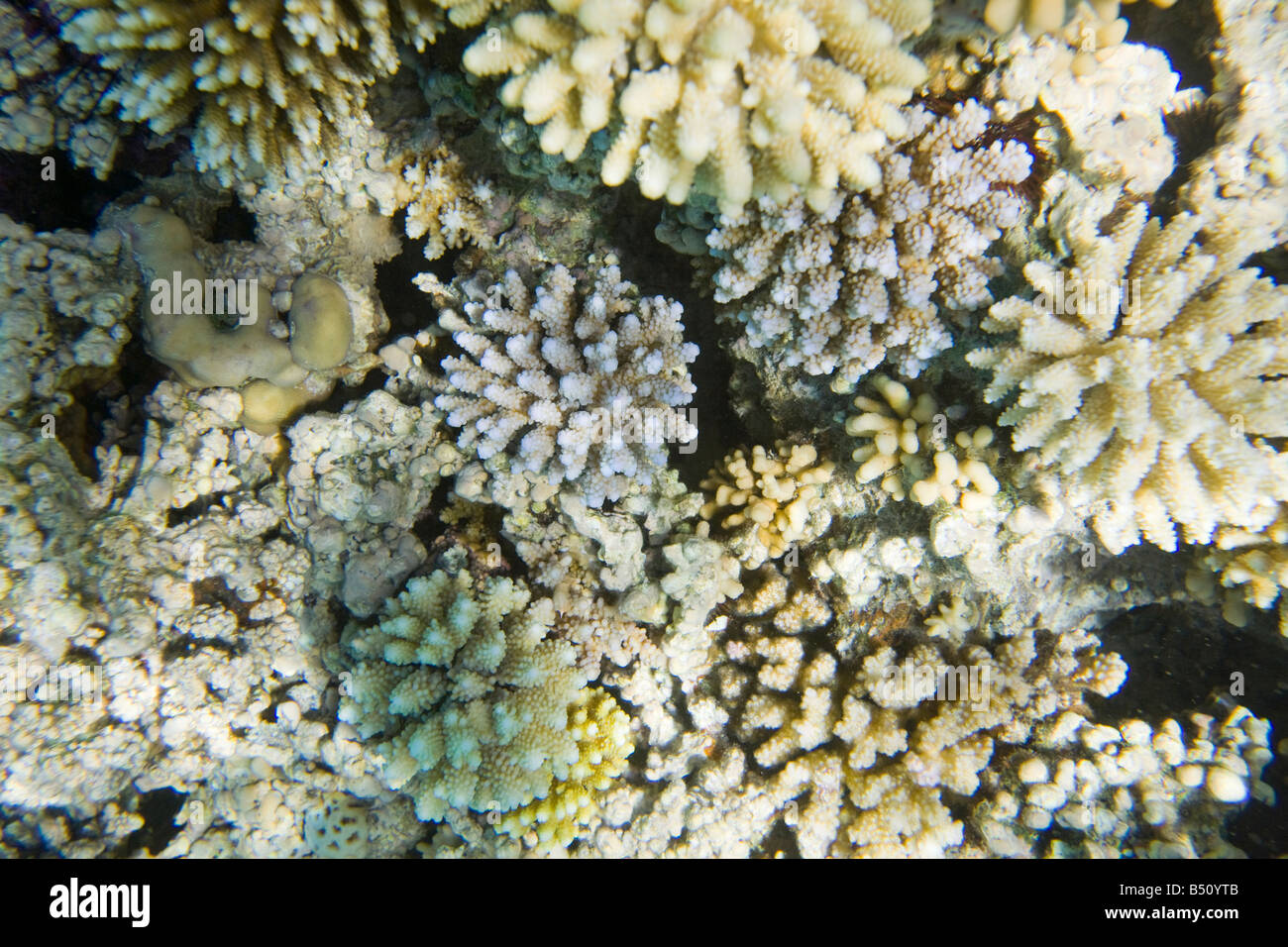 Coral reef off Dahab in the Red Sea in Egypt Stock Photohttps://www.alamy.com/image-license-details/?v=1https://www.alamy.com/stock-photo-coral-reef-off-dahab-in-the-red-sea-in-egypt-20305499.html
Coral reef off Dahab in the Red Sea in Egypt Stock Photohttps://www.alamy.com/image-license-details/?v=1https://www.alamy.com/stock-photo-coral-reef-off-dahab-in-the-red-sea-in-egypt-20305499.htmlRMB50YTB–Coral reef off Dahab in the Red Sea in Egypt
![Crocea giant clam or Boring clam [Tridacna crocea]. Colours in the mantle come from symbiotic zooxanthellae in tissue. Red Sea, Egypt. Stock Photo Crocea giant clam or Boring clam [Tridacna crocea]. Colours in the mantle come from symbiotic zooxanthellae in tissue. Red Sea, Egypt. Stock Photo](https://c8.alamy.com/comp/2RMF5KA/crocea-giant-clam-or-boring-clam-tridacna-crocea-colours-in-the-mantle-come-from-symbiotic-zooxanthellae-in-tissue-red-sea-egypt-2RMF5KA.jpg) Crocea giant clam or Boring clam [Tridacna crocea]. Colours in the mantle come from symbiotic zooxanthellae in tissue. Red Sea, Egypt. Stock Photohttps://www.alamy.com/image-license-details/?v=1https://www.alamy.com/crocea-giant-clam-or-boring-clam-tridacna-crocea-colours-in-the-mantle-come-from-symbiotic-zooxanthellae-in-tissue-red-sea-egypt-image563358638.html
Crocea giant clam or Boring clam [Tridacna crocea]. Colours in the mantle come from symbiotic zooxanthellae in tissue. Red Sea, Egypt. Stock Photohttps://www.alamy.com/image-license-details/?v=1https://www.alamy.com/crocea-giant-clam-or-boring-clam-tridacna-crocea-colours-in-the-mantle-come-from-symbiotic-zooxanthellae-in-tissue-red-sea-egypt-image563358638.htmlRM2RMF5KA–Crocea giant clam or Boring clam [Tridacna crocea]. Colours in the mantle come from symbiotic zooxanthellae in tissue. Red Sea, Egypt.
 Free diving from boat on coral reefs in Hol Chan Marine Reserve Belize Stock Photohttps://www.alamy.com/image-license-details/?v=1https://www.alamy.com/free-diving-from-boat-on-coral-reefs-in-hol-chan-marine-reserve-belize-image63849723.html
Free diving from boat on coral reefs in Hol Chan Marine Reserve Belize Stock Photohttps://www.alamy.com/image-license-details/?v=1https://www.alamy.com/free-diving-from-boat-on-coral-reefs-in-hol-chan-marine-reserve-belize-image63849723.htmlRFDKTGY7–Free diving from boat on coral reefs in Hol Chan Marine Reserve Belize
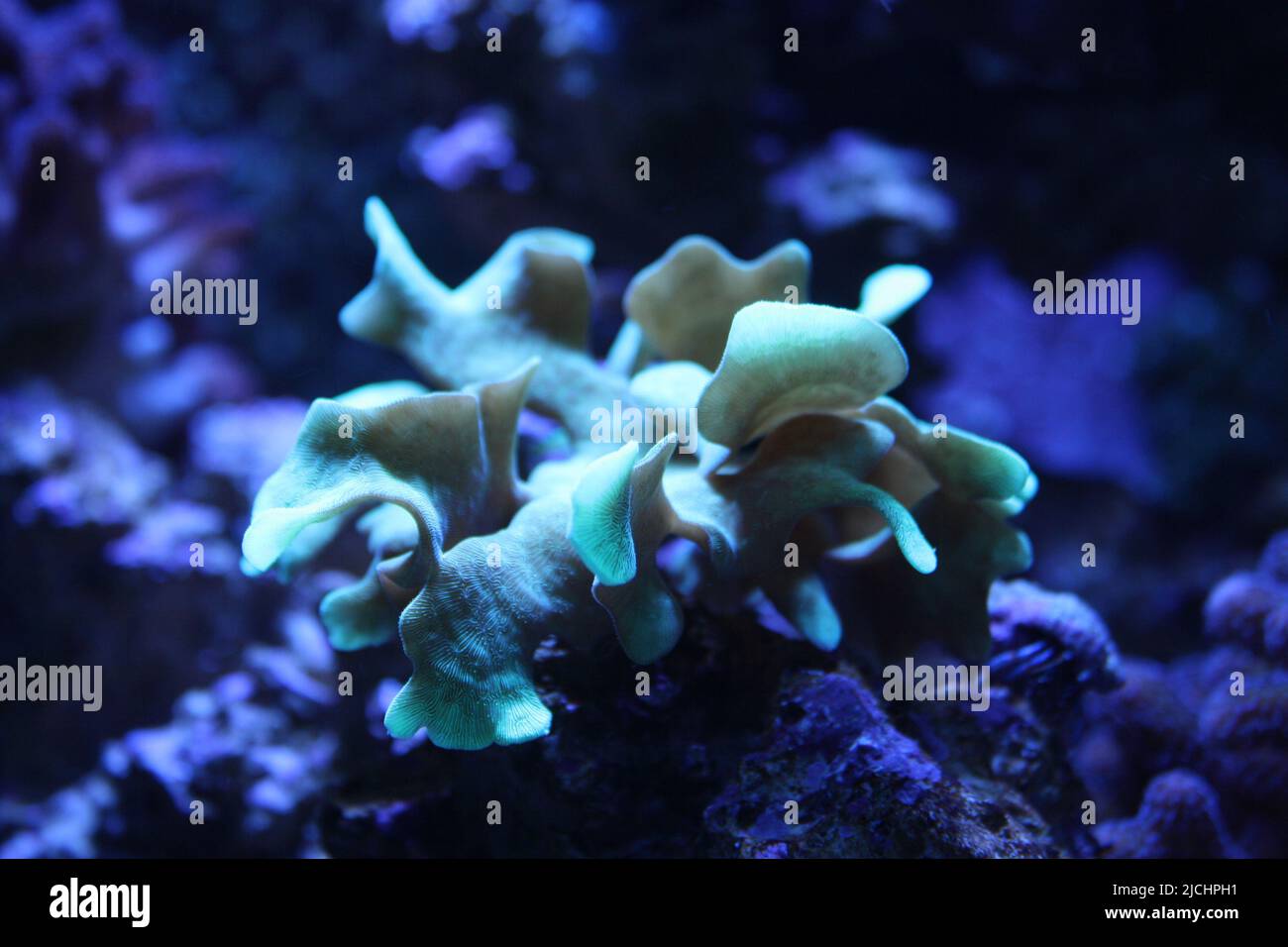 Tropical Reef Coral, the potato chip Coral. Stock Photohttps://www.alamy.com/image-license-details/?v=1https://www.alamy.com/tropical-reef-coral-the-potato-chip-coral-image472446717.html
Tropical Reef Coral, the potato chip Coral. Stock Photohttps://www.alamy.com/image-license-details/?v=1https://www.alamy.com/tropical-reef-coral-the-potato-chip-coral-image472446717.htmlRF2JCHPH1–Tropical Reef Coral, the potato chip Coral.
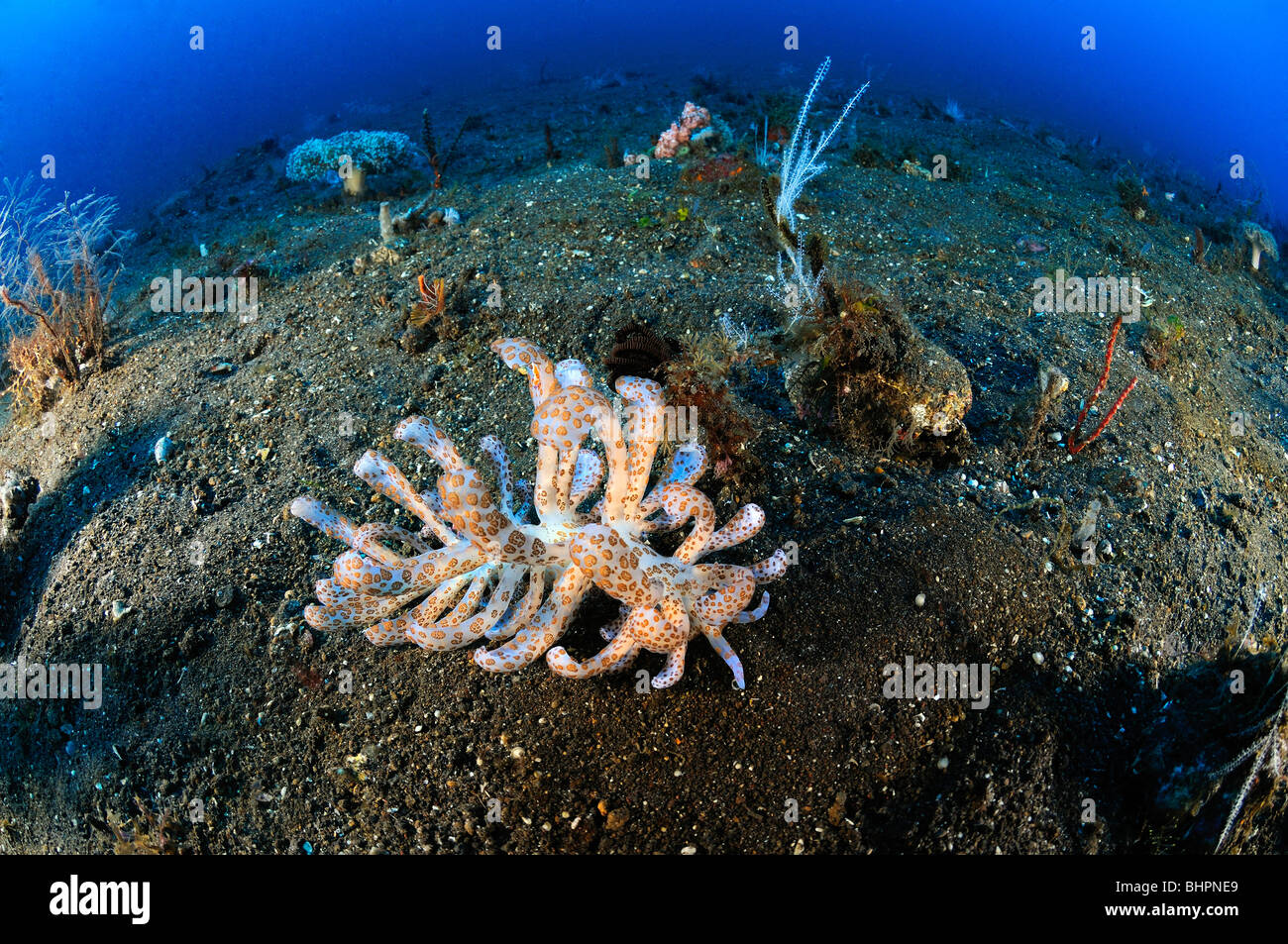 Phyllodesmium longicirrum, solar powered nudibranch, Bali, Indonesia, Indo-Pacific Ocean Stock Photohttps://www.alamy.com/image-license-details/?v=1https://www.alamy.com/stock-photo-phyllodesmium-longicirrum-solar-powered-nudibranch-bali-indonesia-28159329.html
Phyllodesmium longicirrum, solar powered nudibranch, Bali, Indonesia, Indo-Pacific Ocean Stock Photohttps://www.alamy.com/image-license-details/?v=1https://www.alamy.com/stock-photo-phyllodesmium-longicirrum-solar-powered-nudibranch-bali-indonesia-28159329.htmlRMBHPNE9–Phyllodesmium longicirrum, solar powered nudibranch, Bali, Indonesia, Indo-Pacific Ocean
 A table coral, growing in Indonesia, begins to bleach as it expels its symbiotic zooxanthellae due to high sea temperatures. Stock Photohttps://www.alamy.com/image-license-details/?v=1https://www.alamy.com/stock-photo-a-table-coral-growing-in-indonesia-begins-to-bleach-as-it-expels-its-111597159.html
A table coral, growing in Indonesia, begins to bleach as it expels its symbiotic zooxanthellae due to high sea temperatures. Stock Photohttps://www.alamy.com/image-license-details/?v=1https://www.alamy.com/stock-photo-a-table-coral-growing-in-indonesia-begins-to-bleach-as-it-expels-its-111597159.htmlRMGDFK8R–A table coral, growing in Indonesia, begins to bleach as it expels its symbiotic zooxanthellae due to high sea temperatures.
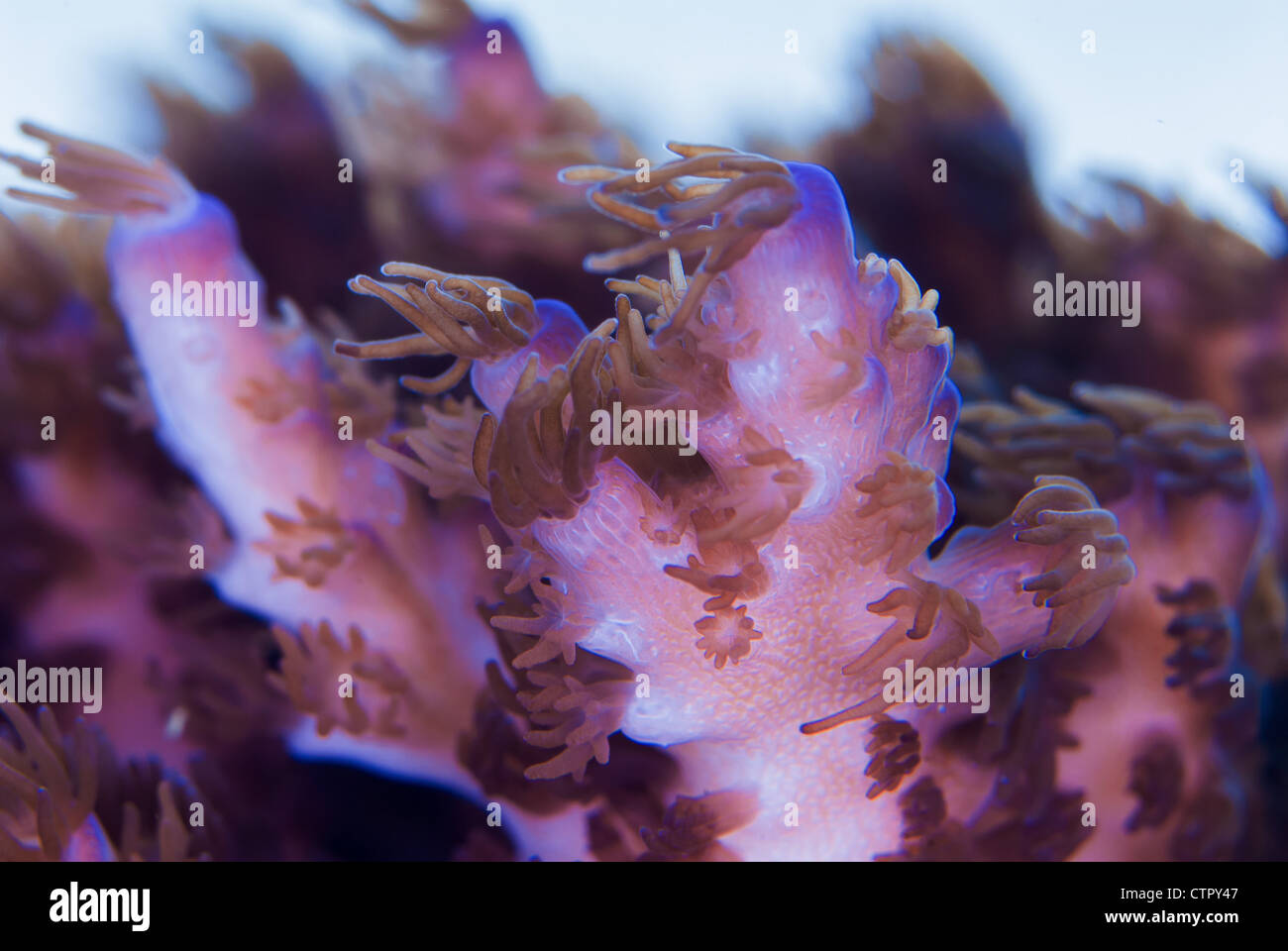 Close up of Acropora coral polyps open showing connecting channels and zooxanthellae Stock Photohttps://www.alamy.com/image-license-details/?v=1https://www.alamy.com/stock-photo-close-up-of-acropora-coral-polyps-open-showing-connecting-channels-49676711.html
Close up of Acropora coral polyps open showing connecting channels and zooxanthellae Stock Photohttps://www.alamy.com/image-license-details/?v=1https://www.alamy.com/stock-photo-close-up-of-acropora-coral-polyps-open-showing-connecting-channels-49676711.htmlRFCTPY47–Close up of Acropora coral polyps open showing connecting channels and zooxanthellae
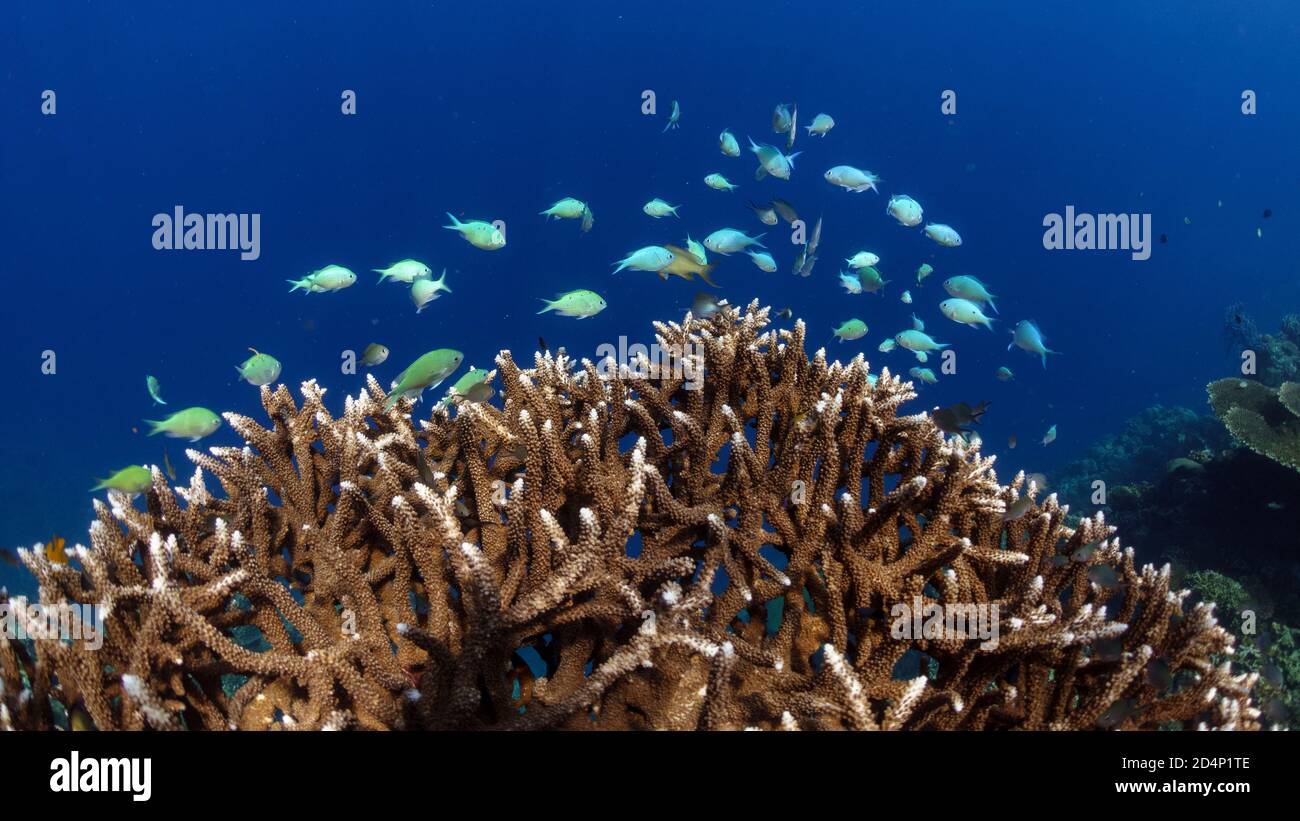 A healthy hard corals in the Philippines and Chromis atripectoralis fish. Stock Photohttps://www.alamy.com/image-license-details/?v=1https://www.alamy.com/a-healthy-hard-corals-in-the-philippines-and-chromis-atripectoralis-fish-image381571134.html
A healthy hard corals in the Philippines and Chromis atripectoralis fish. Stock Photohttps://www.alamy.com/image-license-details/?v=1https://www.alamy.com/a-healthy-hard-corals-in-the-philippines-and-chromis-atripectoralis-fish-image381571134.htmlRF2D4P1TE–A healthy hard corals in the Philippines and Chromis atripectoralis fish.
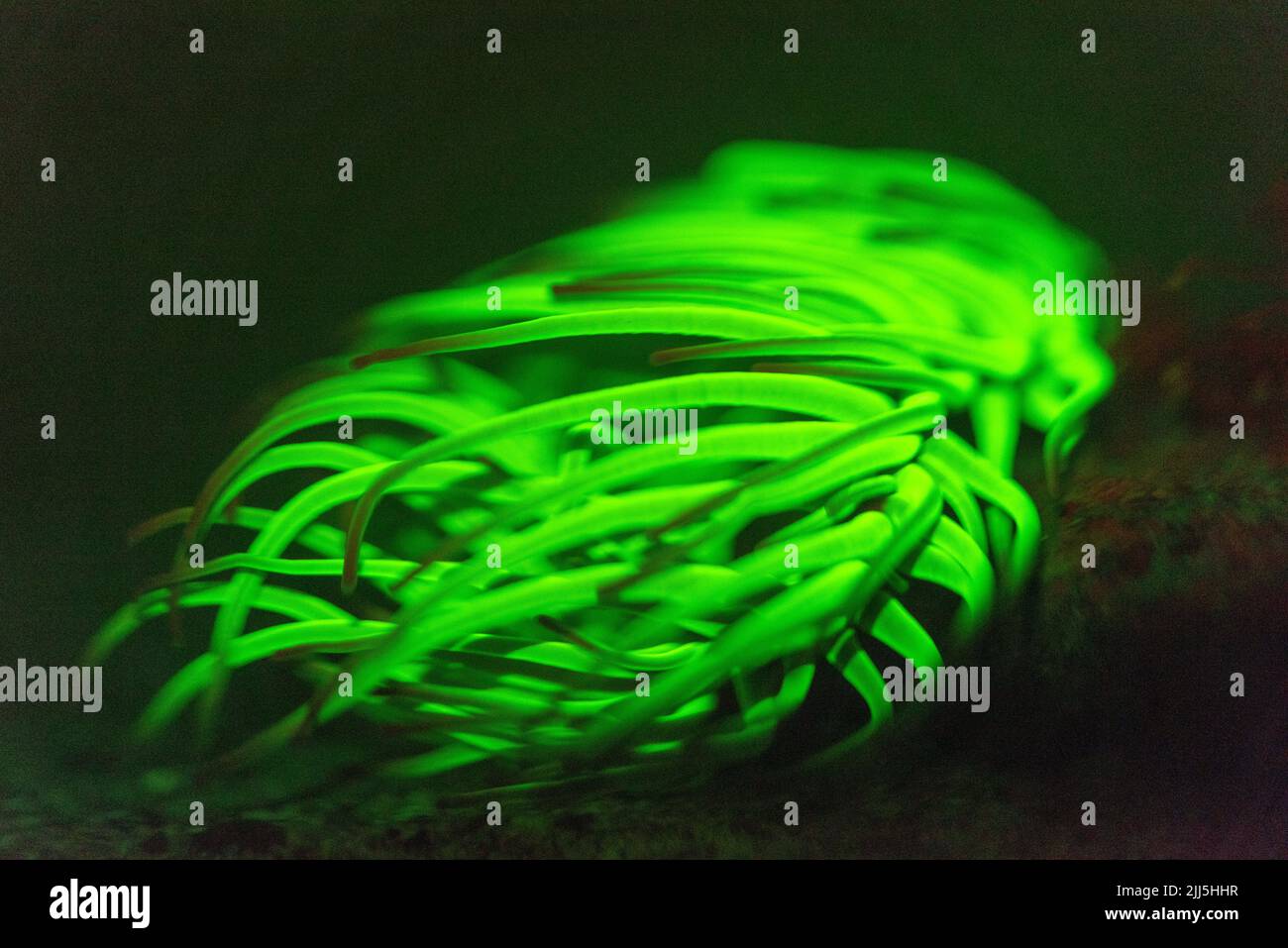 Snakelocks anemone fluorescing Stock Photohttps://www.alamy.com/image-license-details/?v=1https://www.alamy.com/snakelocks-anemone-fluorescing-image475867331.html
Snakelocks anemone fluorescing Stock Photohttps://www.alamy.com/image-license-details/?v=1https://www.alamy.com/snakelocks-anemone-fluorescing-image475867331.htmlRM2JJ5HHR–Snakelocks anemone fluorescing
 Symbiotic algae (zooxanthellae) from Aiptasia sp., probably belonging to the speceis Breviolum dendrogyrum. Stock Photohttps://www.alamy.com/image-license-details/?v=1https://www.alamy.com/symbiotic-algae-zooxanthellae-from-aiptasia-sp-probably-belonging-to-the-speceis-breviolum-dendrogyrum-image628578843.html
Symbiotic algae (zooxanthellae) from Aiptasia sp., probably belonging to the speceis Breviolum dendrogyrum. Stock Photohttps://www.alamy.com/image-license-details/?v=1https://www.alamy.com/symbiotic-algae-zooxanthellae-from-aiptasia-sp-probably-belonging-to-the-speceis-breviolum-dendrogyrum-image628578843.htmlRM2YEJ6MB–Symbiotic algae (zooxanthellae) from Aiptasia sp., probably belonging to the speceis Breviolum dendrogyrum.
 Commensal Shrimp, Periclimenes magnificus, glows in light of Hell's Fire Sea Anemone. Lembeh Straits, Indonesia. Stock Photohttps://www.alamy.com/image-license-details/?v=1https://www.alamy.com/stock-image-commensal-shrimp-periclimenes-magnificus-glows-in-light-of-hells-fire-164407180.html
Commensal Shrimp, Periclimenes magnificus, glows in light of Hell's Fire Sea Anemone. Lembeh Straits, Indonesia. Stock Photohttps://www.alamy.com/image-license-details/?v=1https://www.alamy.com/stock-image-commensal-shrimp-periclimenes-magnificus-glows-in-light-of-hells-fire-164407180.htmlRFKFDB10–Commensal Shrimp, Periclimenes magnificus, glows in light of Hell's Fire Sea Anemone. Lembeh Straits, Indonesia.
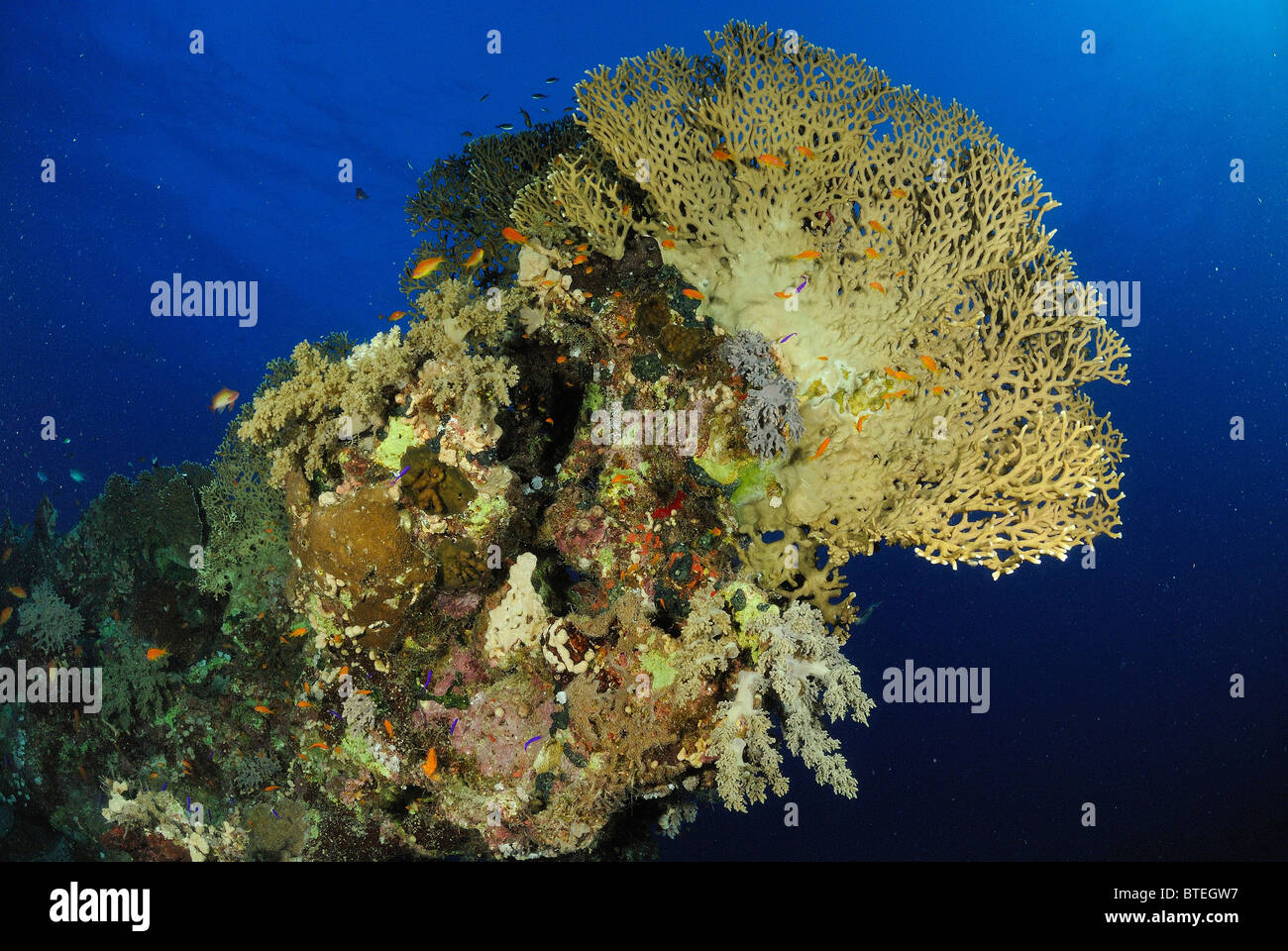 Colony of fire coral growing off Hamata coast, Egypt, Red Sea Stock Photohttps://www.alamy.com/image-license-details/?v=1https://www.alamy.com/stock-photo-colony-of-fire-coral-growing-off-hamata-coast-egypt-red-sea-32282691.html
Colony of fire coral growing off Hamata coast, Egypt, Red Sea Stock Photohttps://www.alamy.com/image-license-details/?v=1https://www.alamy.com/stock-photo-colony-of-fire-coral-growing-off-hamata-coast-egypt-red-sea-32282691.htmlRMBTEGW7–Colony of fire coral growing off Hamata coast, Egypt, Red Sea
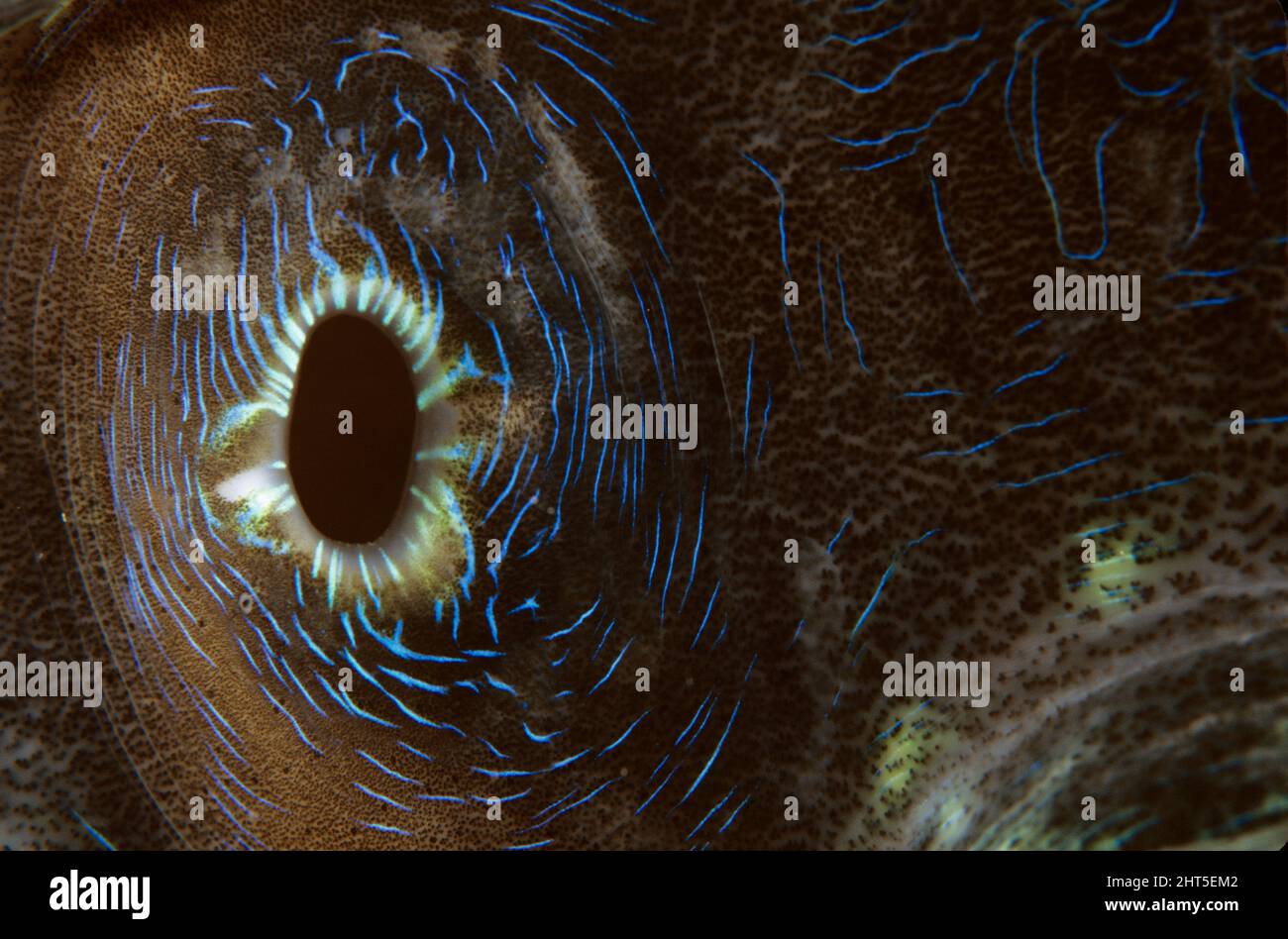 Detail of giant clam mantle (Tridacna sp.), detail of mantle. Great Barrier Reef, Queensland, Australia Stock Photohttps://www.alamy.com/image-license-details/?v=1https://www.alamy.com/detail-of-giant-clam-mantle-tridacna-sp-detail-of-mantle-great-barrier-reef-queensland-australia-image462342610.html
Detail of giant clam mantle (Tridacna sp.), detail of mantle. Great Barrier Reef, Queensland, Australia Stock Photohttps://www.alamy.com/image-license-details/?v=1https://www.alamy.com/detail-of-giant-clam-mantle-tridacna-sp-detail-of-mantle-great-barrier-reef-queensland-australia-image462342610.htmlRM2HT5EM2–Detail of giant clam mantle (Tridacna sp.), detail of mantle. Great Barrier Reef, Queensland, Australia
 A reef of soft and hard coral with schools of fish in Fiji. Stock Photohttps://www.alamy.com/image-license-details/?v=1https://www.alamy.com/a-reef-of-soft-and-hard-coral-with-schools-of-fish-in-fiji-image156045106.html
A reef of soft and hard coral with schools of fish in Fiji. Stock Photohttps://www.alamy.com/image-license-details/?v=1https://www.alamy.com/a-reef-of-soft-and-hard-coral-with-schools-of-fish-in-fiji-image156045106.htmlRMK1TD3E–A reef of soft and hard coral with schools of fish in Fiji.
 Corals are beginning to bleach on a reef in Indonesia. Bleaching occurs as corals expel their endosymbionts (zooxanthellae) livi Stock Photohttps://www.alamy.com/image-license-details/?v=1https://www.alamy.com/stock-photo-corals-are-beginning-to-bleach-on-a-reef-in-indonesia-bleaching-occurs-90210726.html
Corals are beginning to bleach on a reef in Indonesia. Bleaching occurs as corals expel their endosymbionts (zooxanthellae) livi Stock Photohttps://www.alamy.com/image-license-details/?v=1https://www.alamy.com/stock-photo-corals-are-beginning-to-bleach-on-a-reef-in-indonesia-bleaching-occurs-90210726.htmlRFF6NCKJ–Corals are beginning to bleach on a reef in Indonesia. Bleaching occurs as corals expel their endosymbionts (zooxanthellae) livi
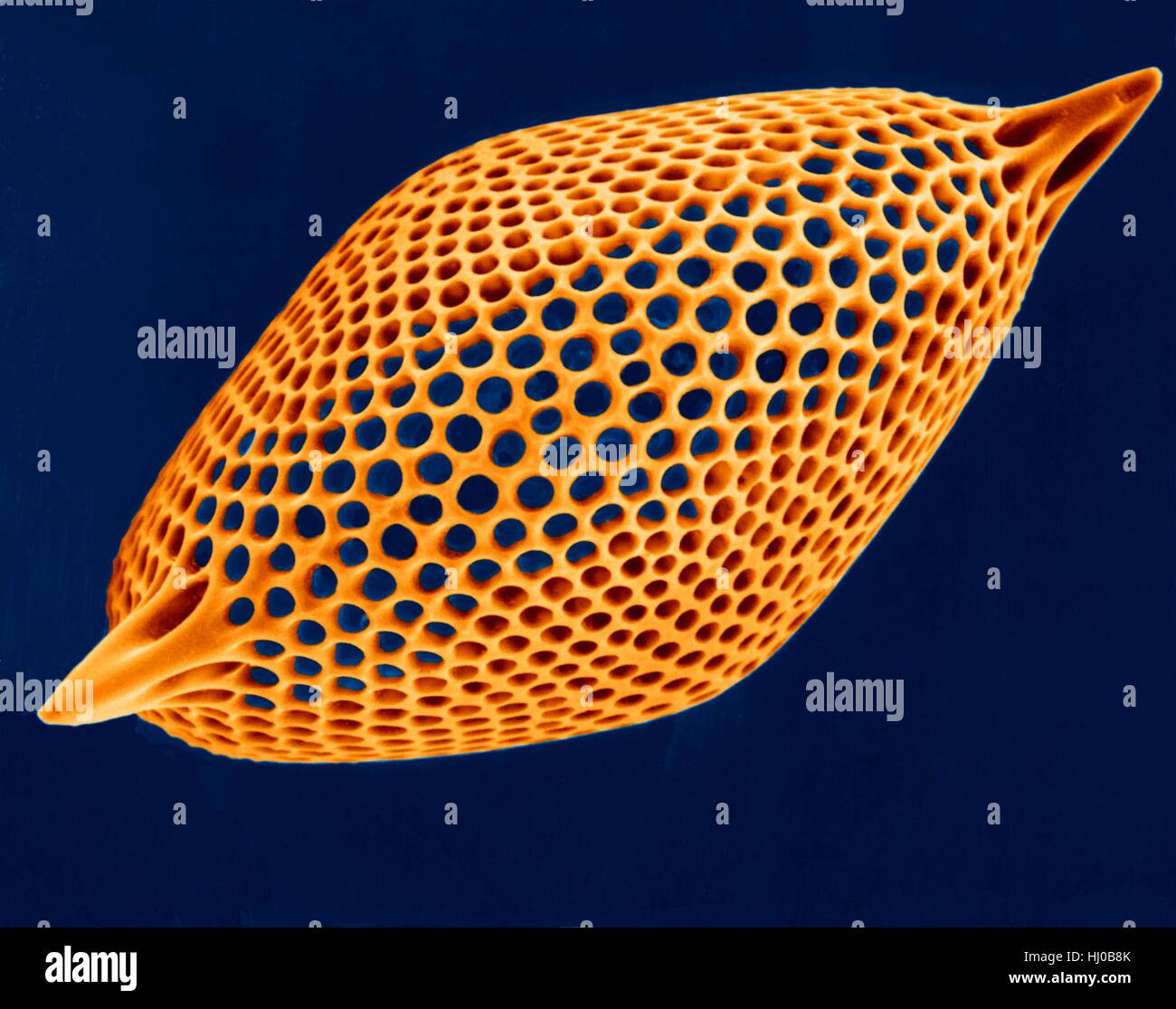 Radiolarian test (marine),coloured scanning electron micrograph (SEM).The hard skeleton is composed of silica or strontium sulphate.The Radiolaria (also called Radiozoa) are protozoa that produce intricate mineral skeletons.They are found as zooplankton throughout ocean their skeletal remains make Stock Photohttps://www.alamy.com/image-license-details/?v=1https://www.alamy.com/stock-photo-radiolarian-test-marinecoloured-scanning-electron-micrograph-semthe-131545251.html
Radiolarian test (marine),coloured scanning electron micrograph (SEM).The hard skeleton is composed of silica or strontium sulphate.The Radiolaria (also called Radiozoa) are protozoa that produce intricate mineral skeletons.They are found as zooplankton throughout ocean their skeletal remains make Stock Photohttps://www.alamy.com/image-license-details/?v=1https://www.alamy.com/stock-photo-radiolarian-test-marinecoloured-scanning-electron-micrograph-semthe-131545251.htmlRFHJ0B8K–Radiolarian test (marine),coloured scanning electron micrograph (SEM).The hard skeleton is composed of silica or strontium sulphate.The Radiolaria (also called Radiozoa) are protozoa that produce intricate mineral skeletons.They are found as zooplankton throughout ocean their skeletal remains make
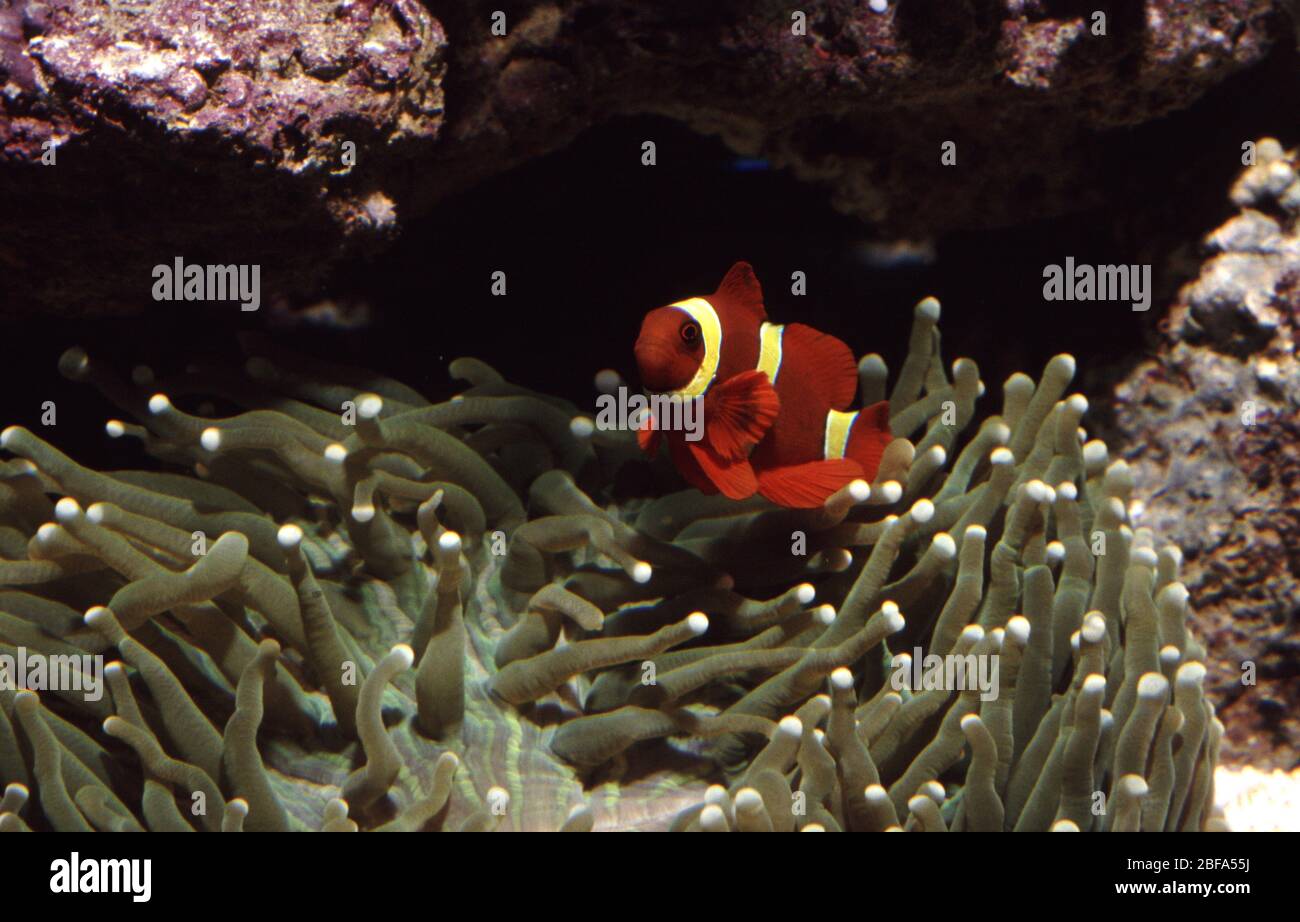 Spinecheek or Maroon anemonefish (Premnas biaculeatus) symbiotic with Mushroom coral, Heliofungia actiniformis Stock Photohttps://www.alamy.com/image-license-details/?v=1https://www.alamy.com/spinecheek-or-maroon-anemonefish-premnas-biaculeatus-symbiotic-with-mushroom-coral-heliofungia-actiniformis-image353650798.html
Spinecheek or Maroon anemonefish (Premnas biaculeatus) symbiotic with Mushroom coral, Heliofungia actiniformis Stock Photohttps://www.alamy.com/image-license-details/?v=1https://www.alamy.com/spinecheek-or-maroon-anemonefish-premnas-biaculeatus-symbiotic-with-mushroom-coral-heliofungia-actiniformis-image353650798.htmlRM2BFA55J–Spinecheek or Maroon anemonefish (Premnas biaculeatus) symbiotic with Mushroom coral, Heliofungia actiniformis
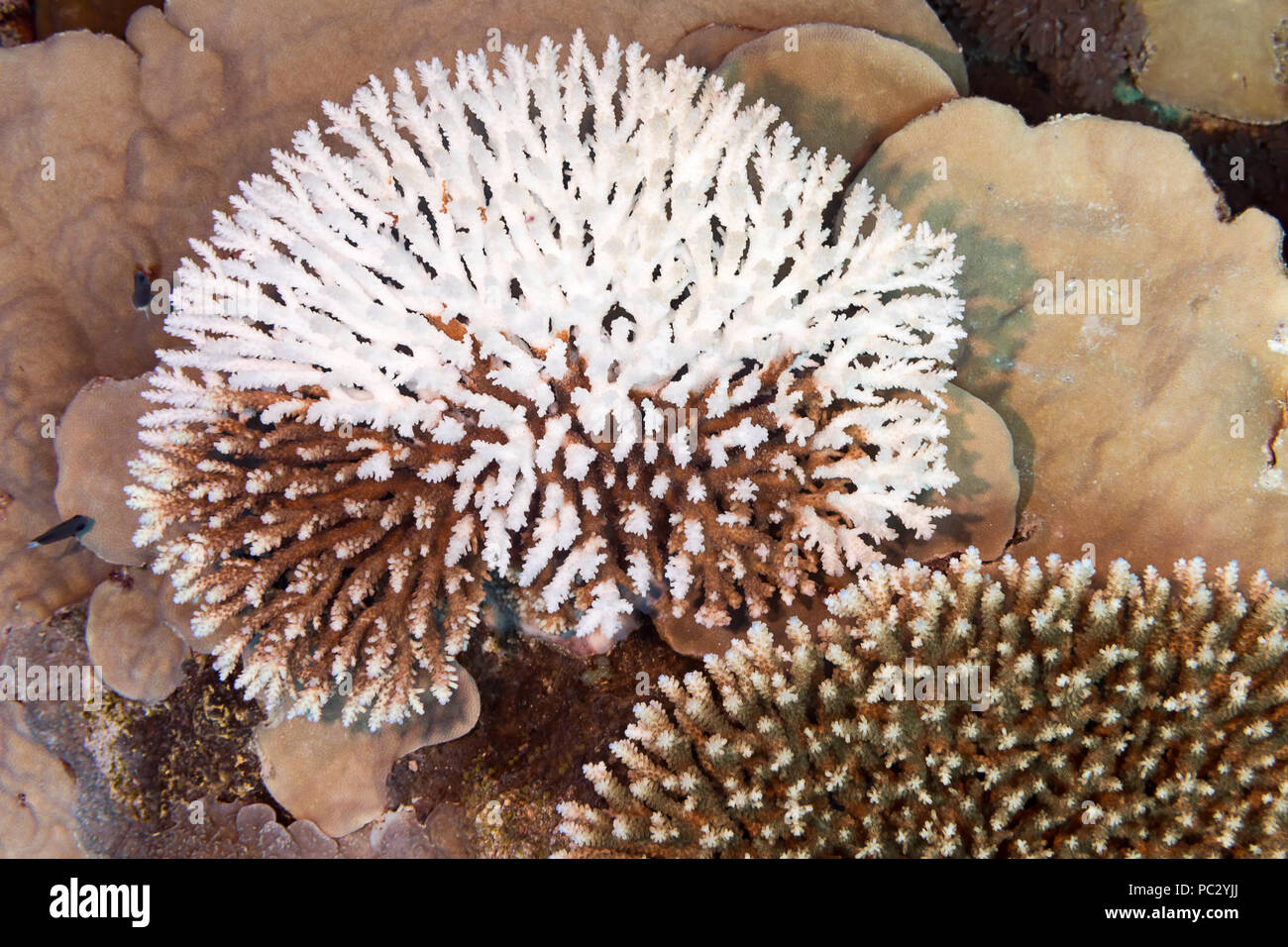 This hard coral colony in the Pacific has begun to bleach, expelling its symbiotic zooxanthellae, consequences of global climate change and climate wa Stock Photohttps://www.alamy.com/image-license-details/?v=1https://www.alamy.com/this-hard-coral-colony-in-the-pacific-has-begun-to-bleach-expelling-its-symbiotic-zooxanthellae-consequences-of-global-climate-change-and-climate-wa-image213965882.html
This hard coral colony in the Pacific has begun to bleach, expelling its symbiotic zooxanthellae, consequences of global climate change and climate wa Stock Photohttps://www.alamy.com/image-license-details/?v=1https://www.alamy.com/this-hard-coral-colony-in-the-pacific-has-begun-to-bleach-expelling-its-symbiotic-zooxanthellae-consequences-of-global-climate-change-and-climate-wa-image213965882.htmlRMPC2YJJ–This hard coral colony in the Pacific has begun to bleach, expelling its symbiotic zooxanthellae, consequences of global climate change and climate wa
 Long-cirri Phyllodesmium Nudibranch, Phyllodesmium longicirrum, with cerata with digestive gland ducts connected to zooxanthellae,, Boulders dive site Stock Photohttps://www.alamy.com/image-license-details/?v=1https://www.alamy.com/long-cirri-phyllodesmium-nudibranch-phyllodesmium-longicirrum-with-cerata-with-digestive-gland-ducts-connected-to-zooxanthellae-boulders-dive-site-image561042337.html
Long-cirri Phyllodesmium Nudibranch, Phyllodesmium longicirrum, with cerata with digestive gland ducts connected to zooxanthellae,, Boulders dive site Stock Photohttps://www.alamy.com/image-license-details/?v=1https://www.alamy.com/long-cirri-phyllodesmium-nudibranch-phyllodesmium-longicirrum-with-cerata-with-digestive-gland-ducts-connected-to-zooxanthellae-boulders-dive-site-image561042337.htmlRM2RGNK69–Long-cirri Phyllodesmium Nudibranch, Phyllodesmium longicirrum, with cerata with digestive gland ducts connected to zooxanthellae,, Boulders dive site
 Coral reef off Dahab in the Red Sea in Egypt Stock Photohttps://www.alamy.com/image-license-details/?v=1https://www.alamy.com/stock-photo-coral-reef-off-dahab-in-the-red-sea-in-egypt-20307881.html
Coral reef off Dahab in the Red Sea in Egypt Stock Photohttps://www.alamy.com/image-license-details/?v=1https://www.alamy.com/stock-photo-coral-reef-off-dahab-in-the-red-sea-in-egypt-20307881.htmlRMB512WD–Coral reef off Dahab in the Red Sea in Egypt
![Crocea giant clam or Boring clam [Tridacna crocea]. Colours in the mantle come from symbiotic zooxanthellae in tissue. Red Sea, Egypt. Stock Photo Crocea giant clam or Boring clam [Tridacna crocea]. Colours in the mantle come from symbiotic zooxanthellae in tissue. Red Sea, Egypt. Stock Photo](https://c8.alamy.com/comp/2RMF5K4/crocea-giant-clam-or-boring-clam-tridacna-crocea-colours-in-the-mantle-come-from-symbiotic-zooxanthellae-in-tissue-red-sea-egypt-2RMF5K4.jpg) Crocea giant clam or Boring clam [Tridacna crocea]. Colours in the mantle come from symbiotic zooxanthellae in tissue. Red Sea, Egypt. Stock Photohttps://www.alamy.com/image-license-details/?v=1https://www.alamy.com/crocea-giant-clam-or-boring-clam-tridacna-crocea-colours-in-the-mantle-come-from-symbiotic-zooxanthellae-in-tissue-red-sea-egypt-image563358632.html
Crocea giant clam or Boring clam [Tridacna crocea]. Colours in the mantle come from symbiotic zooxanthellae in tissue. Red Sea, Egypt. Stock Photohttps://www.alamy.com/image-license-details/?v=1https://www.alamy.com/crocea-giant-clam-or-boring-clam-tridacna-crocea-colours-in-the-mantle-come-from-symbiotic-zooxanthellae-in-tissue-red-sea-egypt-image563358632.htmlRM2RMF5K4–Crocea giant clam or Boring clam [Tridacna crocea]. Colours in the mantle come from symbiotic zooxanthellae in tissue. Red Sea, Egypt.
 Close-up macro detail of intricate green design pattern of living stoney coral on a tropical coral reef Stock Photohttps://www.alamy.com/image-license-details/?v=1https://www.alamy.com/close-up-macro-detail-of-intricate-green-design-pattern-of-living-stoney-coral-on-a-tropical-coral-reef-image597666570.html
Close-up macro detail of intricate green design pattern of living stoney coral on a tropical coral reef Stock Photohttps://www.alamy.com/image-license-details/?v=1https://www.alamy.com/close-up-macro-detail-of-intricate-green-design-pattern-of-living-stoney-coral-on-a-tropical-coral-reef-image597666570.htmlRF2WMA1PJ–Close-up macro detail of intricate green design pattern of living stoney coral on a tropical coral reef
 Orange Oman anemone fish looking out from its host Bulb anemone Stock Photohttps://www.alamy.com/image-license-details/?v=1https://www.alamy.com/orange-oman-anemone-fish-looking-out-from-its-host-bulb-anemone-image622195955.html
Orange Oman anemone fish looking out from its host Bulb anemone Stock Photohttps://www.alamy.com/image-license-details/?v=1https://www.alamy.com/orange-oman-anemone-fish-looking-out-from-its-host-bulb-anemone-image622195955.htmlRM2Y47D83–Orange Oman anemone fish looking out from its host Bulb anemone
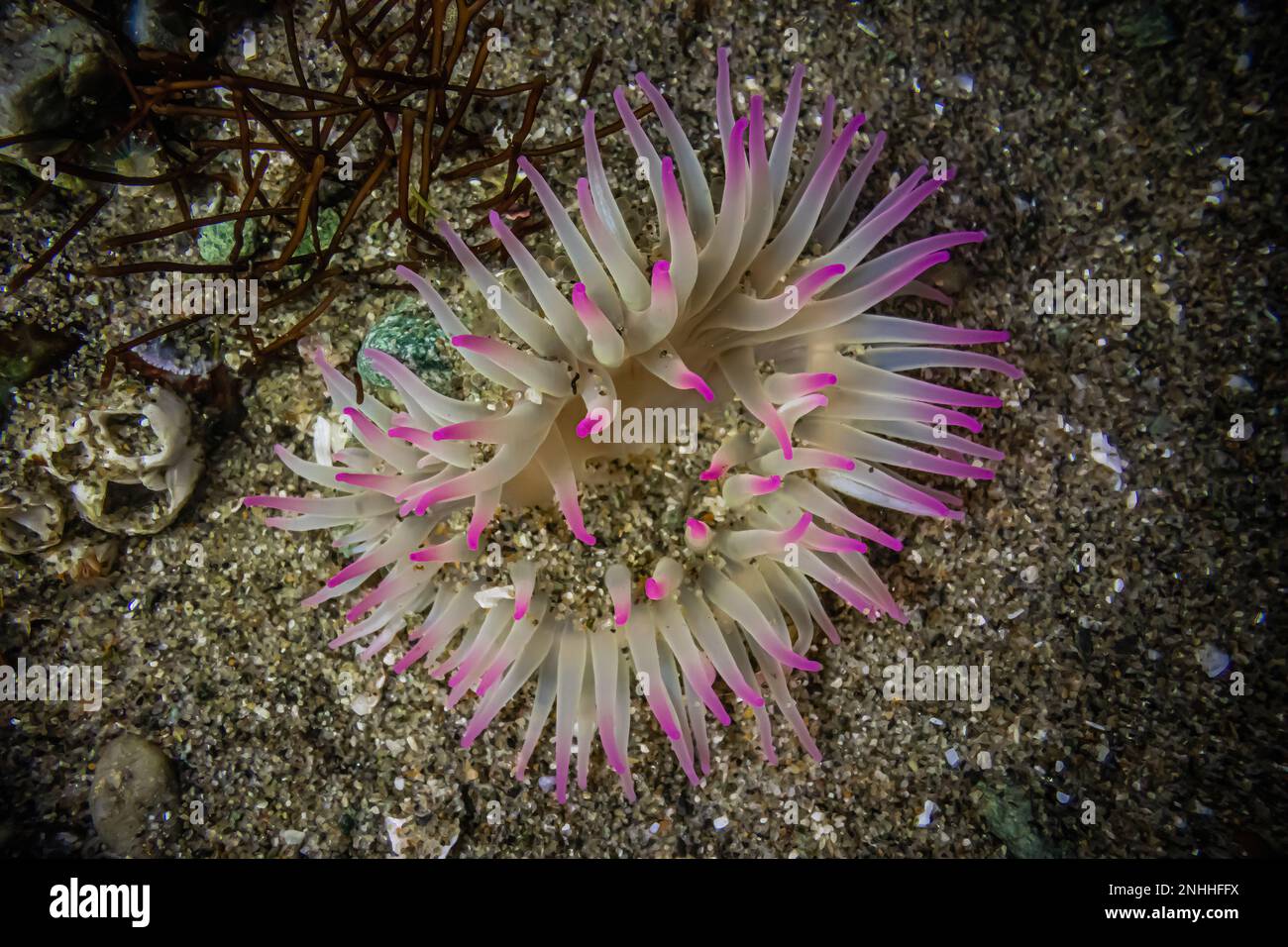 Aggregating Anemone, Anthopleura elegantissima, at Point of arches in Olympic National Park, Washington State, USA Stock Photohttps://www.alamy.com/image-license-details/?v=1https://www.alamy.com/aggregating-anemone-anthopleura-elegantissima-at-point-of-arches-in-olympic-national-park-washington-state-usa-image527145582.html
Aggregating Anemone, Anthopleura elegantissima, at Point of arches in Olympic National Park, Washington State, USA Stock Photohttps://www.alamy.com/image-license-details/?v=1https://www.alamy.com/aggregating-anemone-anthopleura-elegantissima-at-point-of-arches-in-olympic-national-park-washington-state-usa-image527145582.htmlRM2NHHFFX–Aggregating Anemone, Anthopleura elegantissima, at Point of arches in Olympic National Park, Washington State, USA
 A mushroom coral (Fungia sp.) in Indonesia has expelled its symbiotic zooxanthellae and bleached due to high sea temperatures. Stock Photohttps://www.alamy.com/image-license-details/?v=1https://www.alamy.com/stock-photo-a-mushroom-coral-fungia-sp-in-indonesia-has-expelled-its-symbiotic-112039885.html
A mushroom coral (Fungia sp.) in Indonesia has expelled its symbiotic zooxanthellae and bleached due to high sea temperatures. Stock Photohttps://www.alamy.com/image-license-details/?v=1https://www.alamy.com/stock-photo-a-mushroom-coral-fungia-sp-in-indonesia-has-expelled-its-symbiotic-112039885.htmlRMGE7T0D–A mushroom coral (Fungia sp.) in Indonesia has expelled its symbiotic zooxanthellae and bleached due to high sea temperatures.
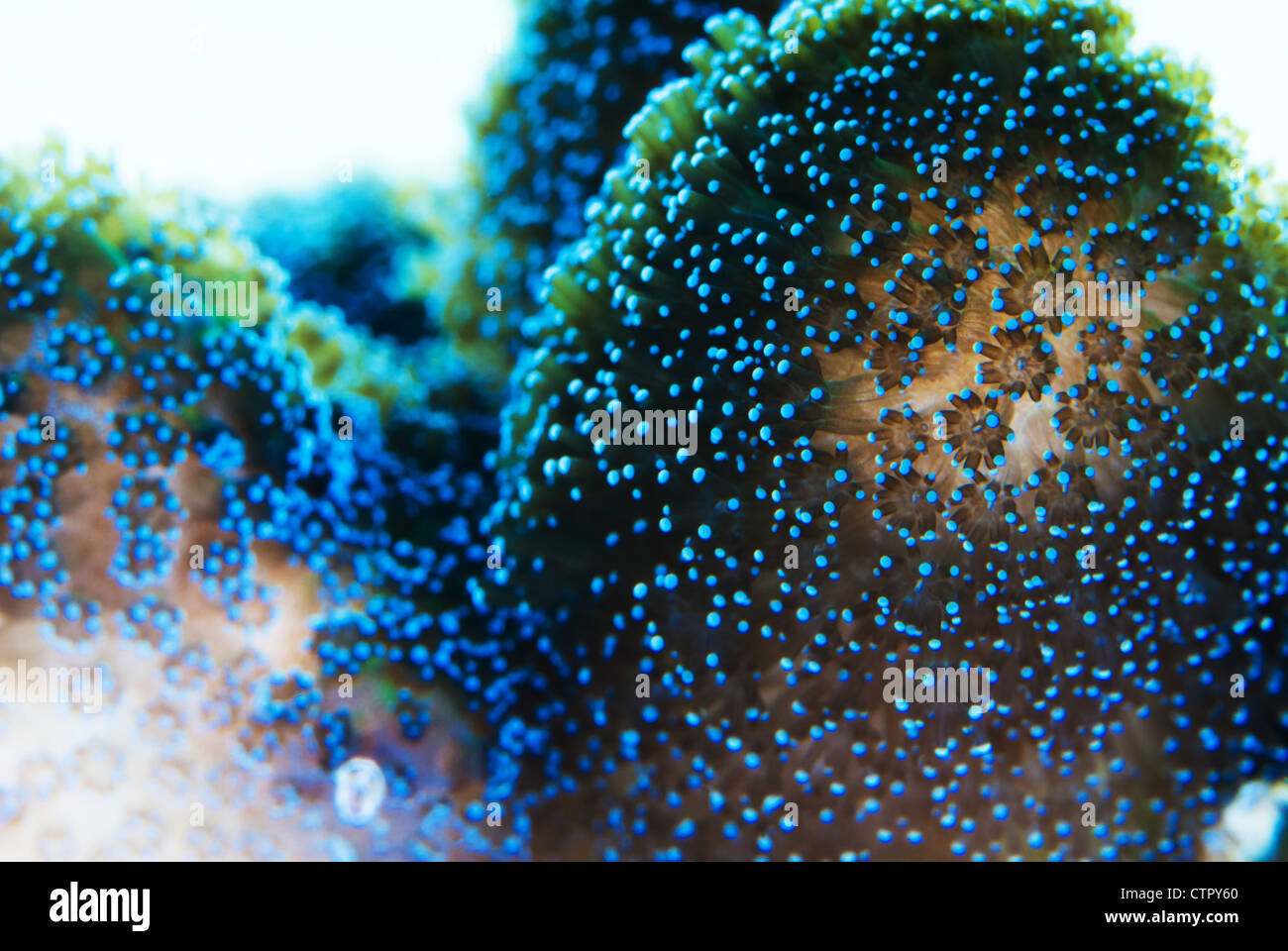 This is an image of coral polyps Stock Photohttps://www.alamy.com/image-license-details/?v=1https://www.alamy.com/stock-photo-this-is-an-image-of-coral-polyps-49676760.html
This is an image of coral polyps Stock Photohttps://www.alamy.com/image-license-details/?v=1https://www.alamy.com/stock-photo-this-is-an-image-of-coral-polyps-49676760.htmlRFCTPY60–This is an image of coral polyps
 Coral reef off Dahab in the Red Sea in Egypt showing signs of coral bleaching Stock Photohttps://www.alamy.com/image-license-details/?v=1https://www.alamy.com/stock-photo-coral-reef-off-dahab-in-the-red-sea-in-egypt-showing-signs-of-coral-20306143.html
Coral reef off Dahab in the Red Sea in Egypt showing signs of coral bleaching Stock Photohttps://www.alamy.com/image-license-details/?v=1https://www.alamy.com/stock-photo-coral-reef-off-dahab-in-the-red-sea-in-egypt-showing-signs-of-coral-20306143.htmlRMB510KB–Coral reef off Dahab in the Red Sea in Egypt showing signs of coral bleaching
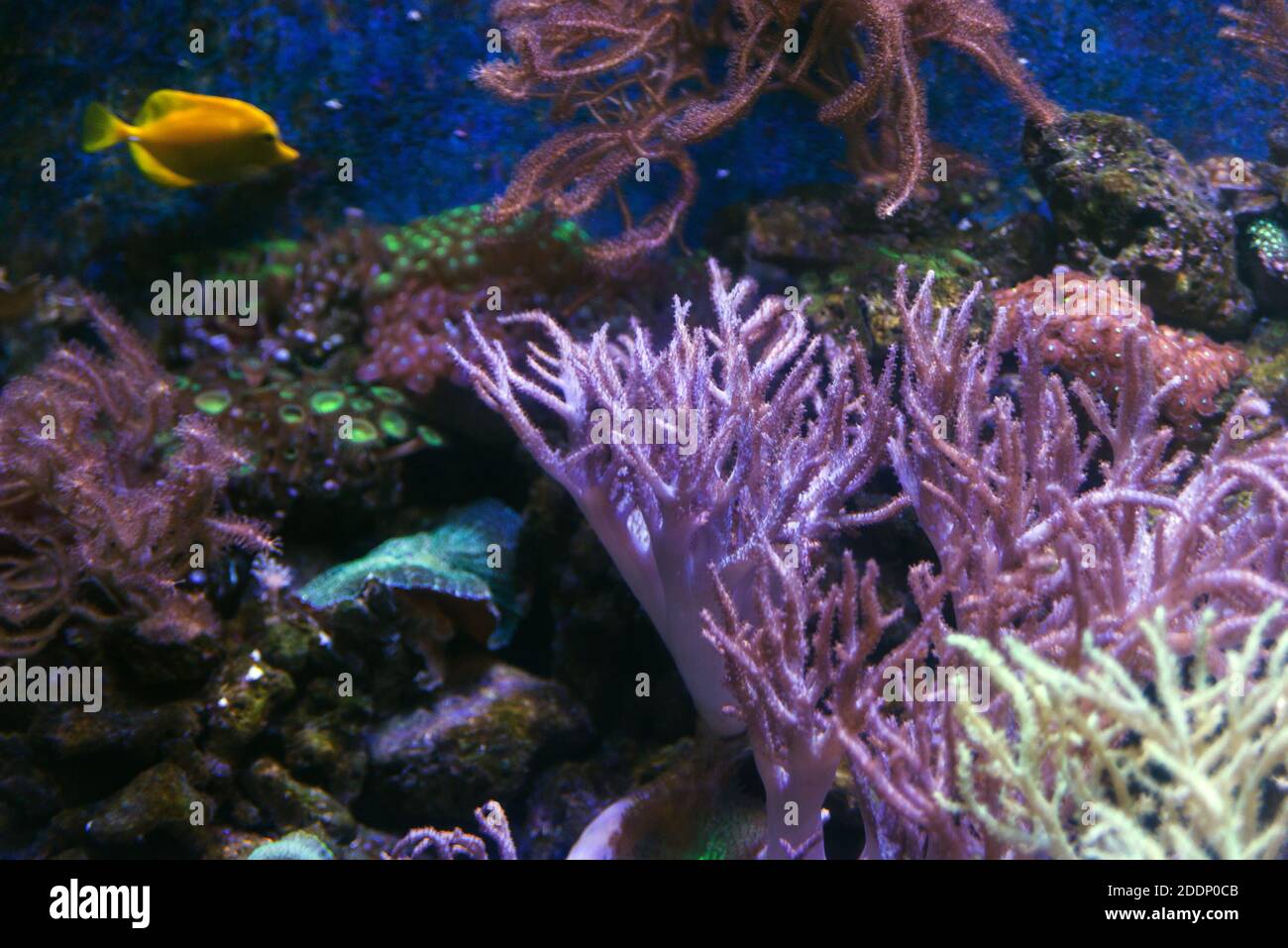 Alcyonacea Soft Corals: Beautiful. Colorful branching White Orange Yellow colored Gorgonian Sea Fan with hard sclerites skeletons. Stock Photohttps://www.alamy.com/image-license-details/?v=1https://www.alamy.com/alcyonacea-soft-corals-beautiful-colorful-branching-white-orange-yellow-colored-gorgonian-sea-fan-with-hard-sclerites-skeletons-image387101915.html
Alcyonacea Soft Corals: Beautiful. Colorful branching White Orange Yellow colored Gorgonian Sea Fan with hard sclerites skeletons. Stock Photohttps://www.alamy.com/image-license-details/?v=1https://www.alamy.com/alcyonacea-soft-corals-beautiful-colorful-branching-white-orange-yellow-colored-gorgonian-sea-fan-with-hard-sclerites-skeletons-image387101915.htmlRF2DDP0CB–Alcyonacea Soft Corals: Beautiful. Colorful branching White Orange Yellow colored Gorgonian Sea Fan with hard sclerites skeletons.
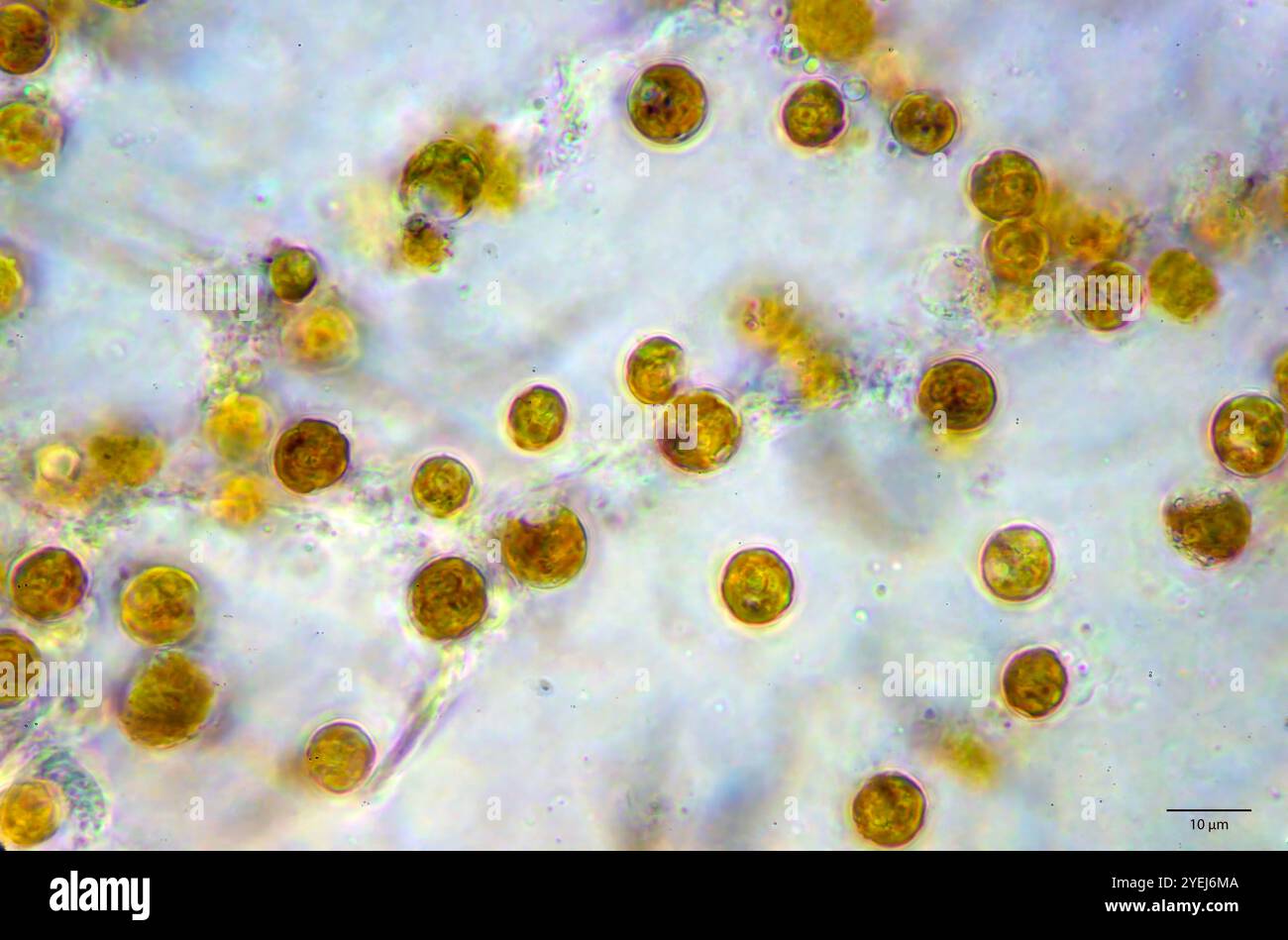 Symbiotic algae (zooxanthellae) from Aiptasia sp., probably belonging to the speceis Breviolum dendrogyrum. Stock Photohttps://www.alamy.com/image-license-details/?v=1https://www.alamy.com/symbiotic-algae-zooxanthellae-from-aiptasia-sp-probably-belonging-to-the-speceis-breviolum-dendrogyrum-image628578842.html
Symbiotic algae (zooxanthellae) from Aiptasia sp., probably belonging to the speceis Breviolum dendrogyrum. Stock Photohttps://www.alamy.com/image-license-details/?v=1https://www.alamy.com/symbiotic-algae-zooxanthellae-from-aiptasia-sp-probably-belonging-to-the-speceis-breviolum-dendrogyrum-image628578842.htmlRM2YEJ6MA–Symbiotic algae (zooxanthellae) from Aiptasia sp., probably belonging to the speceis Breviolum dendrogyrum.
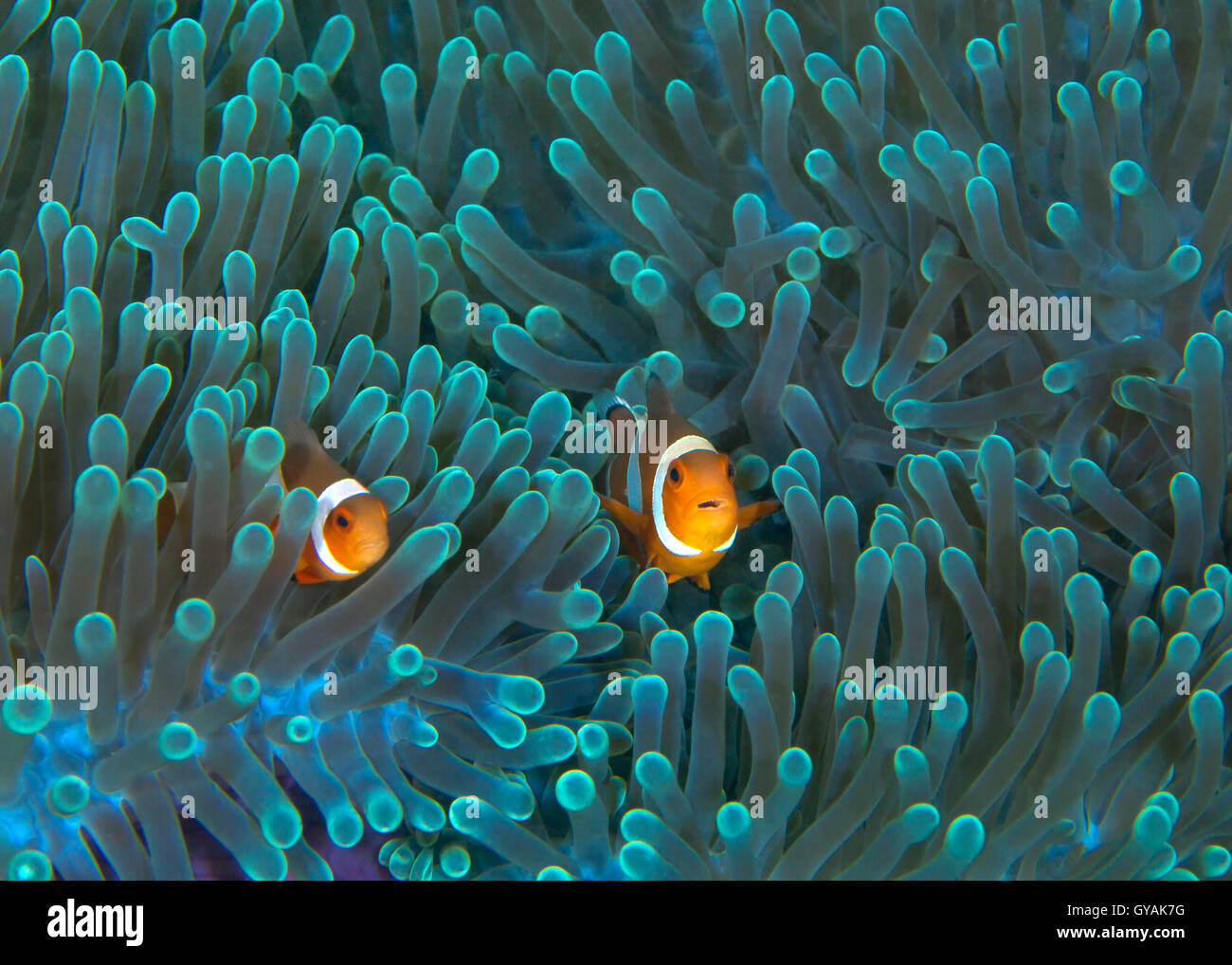 Orange Clownfish peer from fluorescent green tentacles of host anemone. Puerto Galera, Philippines. Stock Photohttps://www.alamy.com/image-license-details/?v=1https://www.alamy.com/stock-photo-orange-clownfish-peer-from-fluorescent-green-tentacles-of-host-anemone-120092548.html
Orange Clownfish peer from fluorescent green tentacles of host anemone. Puerto Galera, Philippines. Stock Photohttps://www.alamy.com/image-license-details/?v=1https://www.alamy.com/stock-photo-orange-clownfish-peer-from-fluorescent-green-tentacles-of-host-anemone-120092548.htmlRMGYAK7G–Orange Clownfish peer from fluorescent green tentacles of host anemone. Puerto Galera, Philippines.
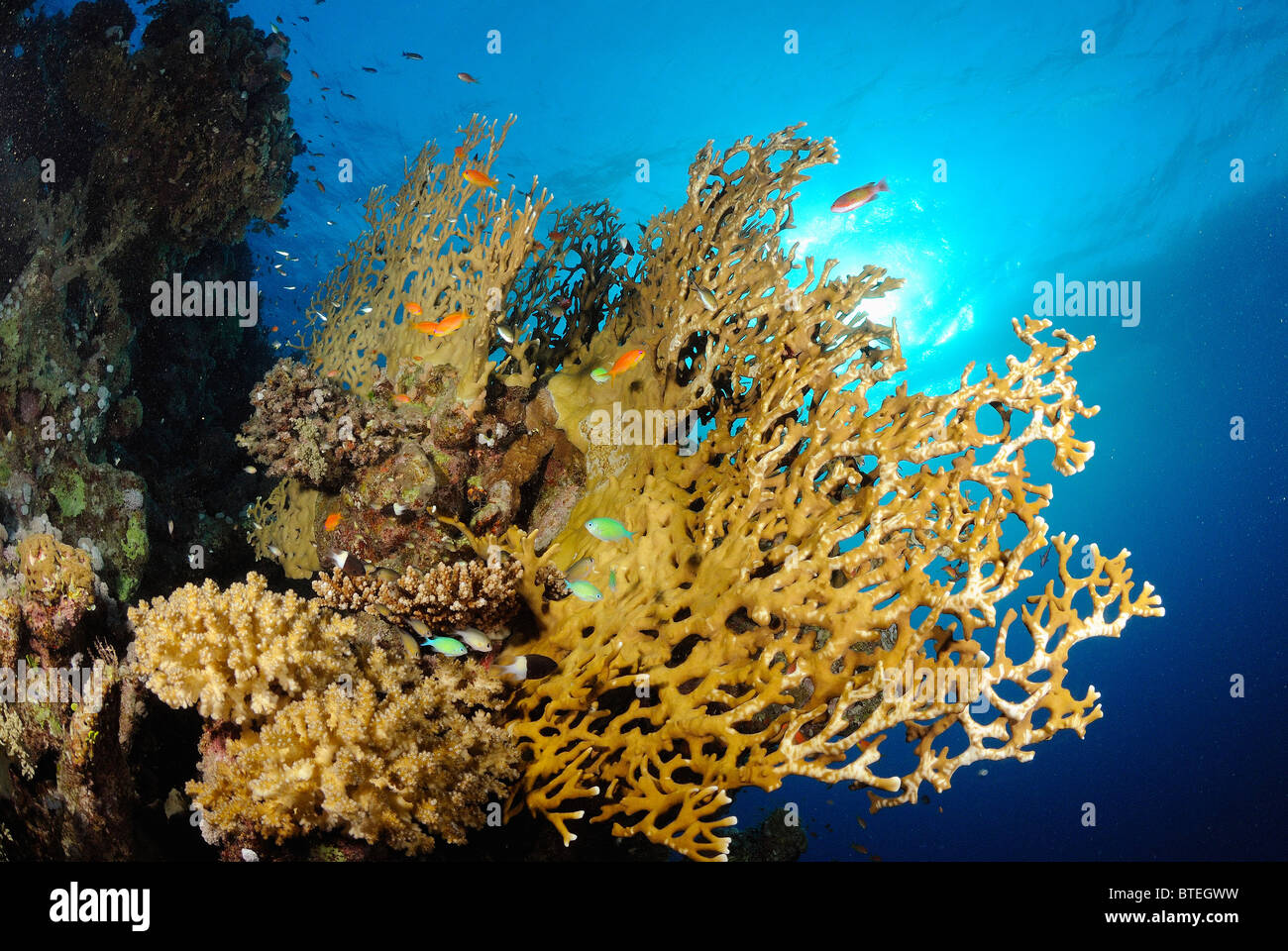 Colony of fire coral growing off Hamata coast, Egypt, Red Sea Stock Photohttps://www.alamy.com/image-license-details/?v=1https://www.alamy.com/stock-photo-colony-of-fire-coral-growing-off-hamata-coast-egypt-red-sea-32282709.html
Colony of fire coral growing off Hamata coast, Egypt, Red Sea Stock Photohttps://www.alamy.com/image-license-details/?v=1https://www.alamy.com/stock-photo-colony-of-fire-coral-growing-off-hamata-coast-egypt-red-sea-32282709.htmlRMBTEGWW–Colony of fire coral growing off Hamata coast, Egypt, Red Sea
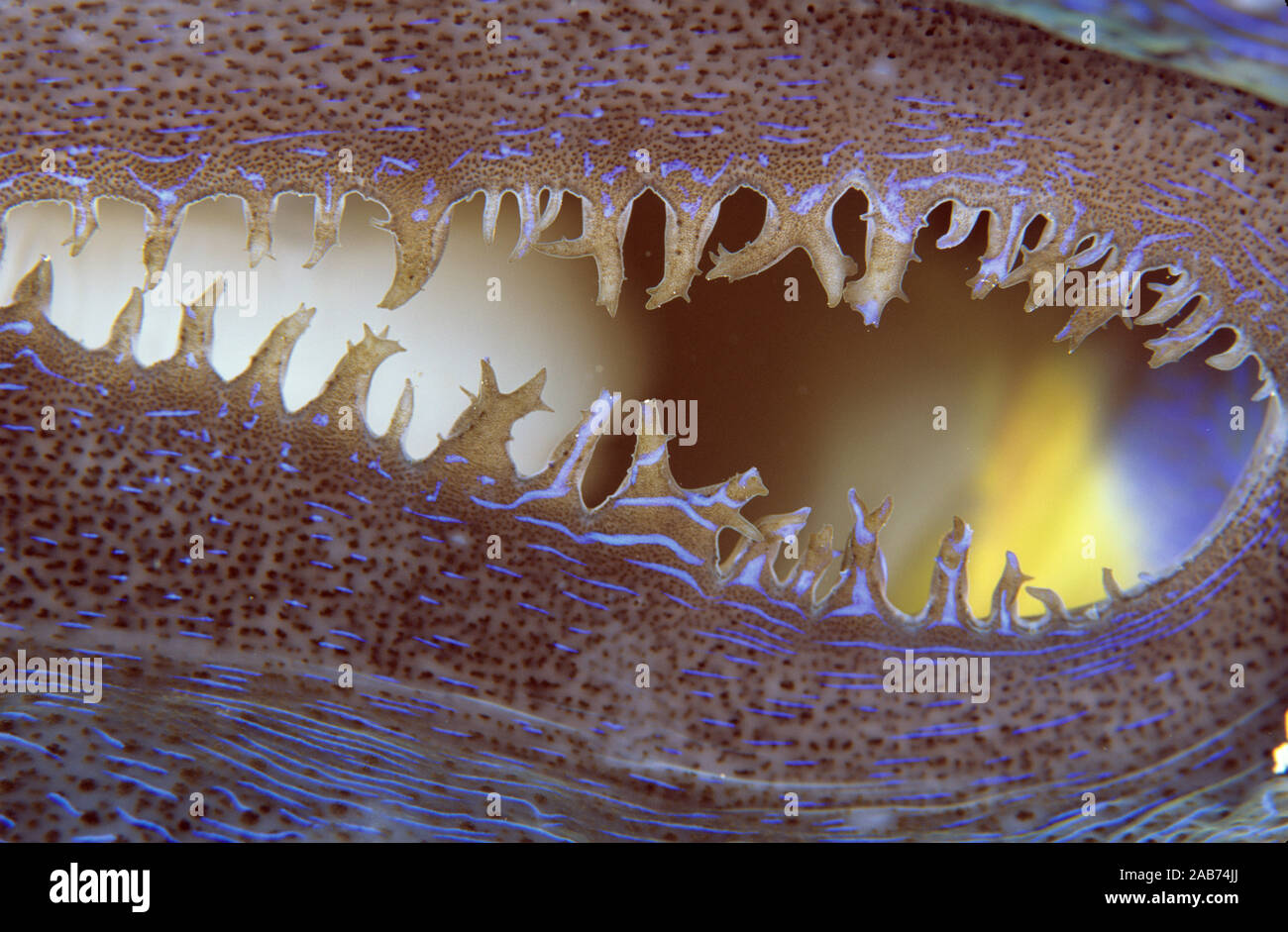 Giant clam (Tridacna derasa), detail of mantle. Has symbiotic algae, zooxanthellae, in the fleshy mantle which it exposes to the sun.. Great Barrier R Stock Photohttps://www.alamy.com/image-license-details/?v=1https://www.alamy.com/giant-clam-tridacna-derasa-detail-of-mantle-has-symbiotic-algae-zooxanthellae-in-the-fleshy-mantle-which-it-exposes-to-the-sun-great-barrier-r-image333915530.html
Giant clam (Tridacna derasa), detail of mantle. Has symbiotic algae, zooxanthellae, in the fleshy mantle which it exposes to the sun.. Great Barrier R Stock Photohttps://www.alamy.com/image-license-details/?v=1https://www.alamy.com/giant-clam-tridacna-derasa-detail-of-mantle-has-symbiotic-algae-zooxanthellae-in-the-fleshy-mantle-which-it-exposes-to-the-sun-great-barrier-r-image333915530.htmlRM2AB74JJ–Giant clam (Tridacna derasa), detail of mantle. Has symbiotic algae, zooxanthellae, in the fleshy mantle which it exposes to the sun.. Great Barrier R
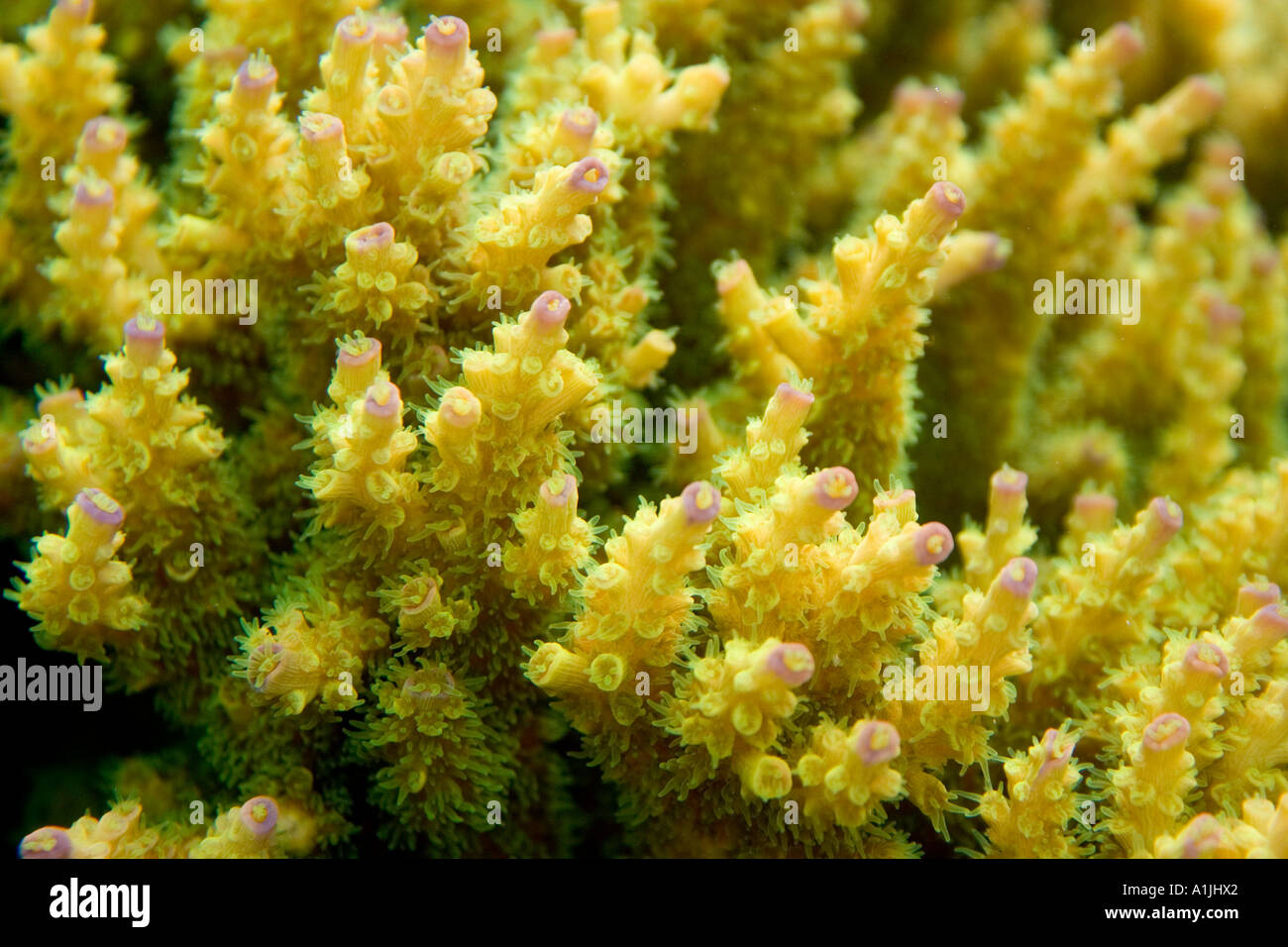 Closeup underwater view of Acropora coral Stock Photohttps://www.alamy.com/image-license-details/?v=1https://www.alamy.com/closeup-underwater-view-of-acropora-coral-image5870433.html
Closeup underwater view of Acropora coral Stock Photohttps://www.alamy.com/image-license-details/?v=1https://www.alamy.com/closeup-underwater-view-of-acropora-coral-image5870433.htmlRMA1JHX2–Closeup underwater view of Acropora coral
 Corals are beginning to bleach on a reef in Indonesia. Bleaching occurs as corals expel their endosymbionts (zooxanthellae) livi Stock Photohttps://www.alamy.com/image-license-details/?v=1https://www.alamy.com/stock-photo-corals-are-beginning-to-bleach-on-a-reef-in-indonesia-bleaching-occurs-90210724.html
Corals are beginning to bleach on a reef in Indonesia. Bleaching occurs as corals expel their endosymbionts (zooxanthellae) livi Stock Photohttps://www.alamy.com/image-license-details/?v=1https://www.alamy.com/stock-photo-corals-are-beginning-to-bleach-on-a-reef-in-indonesia-bleaching-occurs-90210724.htmlRFF6NCKG–Corals are beginning to bleach on a reef in Indonesia. Bleaching occurs as corals expel their endosymbionts (zooxanthellae) livi
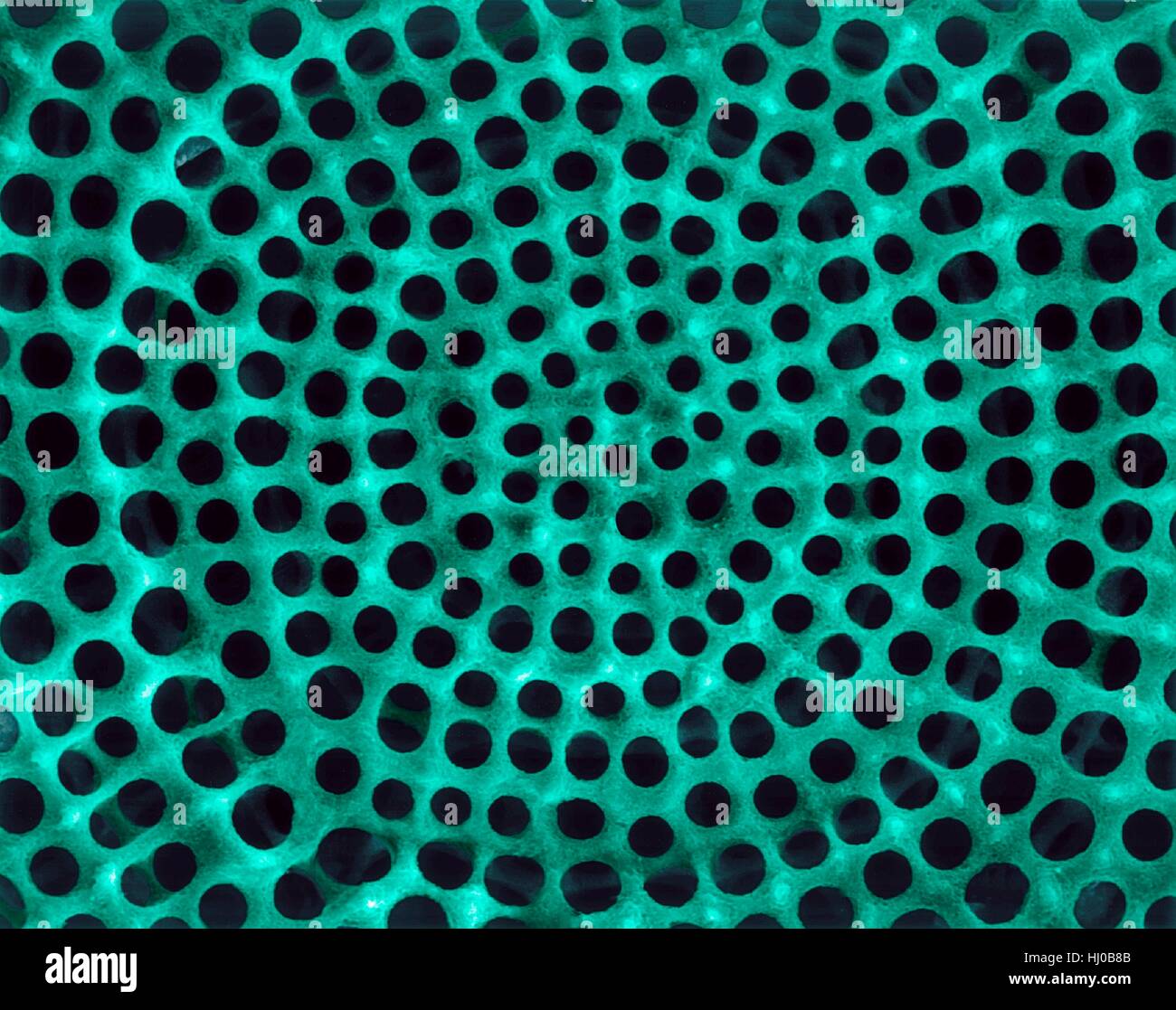 Radiolarian test (marine),coloured scanning electron micrograph (SEM).The hard skeleton surface is composed of silica or strontium sulphate.The Radiolaria (also called Radiozoa) are protozoa that produce intricate mineral skeletons.They are found as zooplankton throughout ocean their skeletal Stock Photohttps://www.alamy.com/image-license-details/?v=1https://www.alamy.com/stock-photo-radiolarian-test-marinecoloured-scanning-electron-micrograph-semthe-131545243.html
Radiolarian test (marine),coloured scanning electron micrograph (SEM).The hard skeleton surface is composed of silica or strontium sulphate.The Radiolaria (also called Radiozoa) are protozoa that produce intricate mineral skeletons.They are found as zooplankton throughout ocean their skeletal Stock Photohttps://www.alamy.com/image-license-details/?v=1https://www.alamy.com/stock-photo-radiolarian-test-marinecoloured-scanning-electron-micrograph-semthe-131545243.htmlRFHJ0B8B–Radiolarian test (marine),coloured scanning electron micrograph (SEM).The hard skeleton surface is composed of silica or strontium sulphate.The Radiolaria (also called Radiozoa) are protozoa that produce intricate mineral skeletons.They are found as zooplankton throughout ocean their skeletal
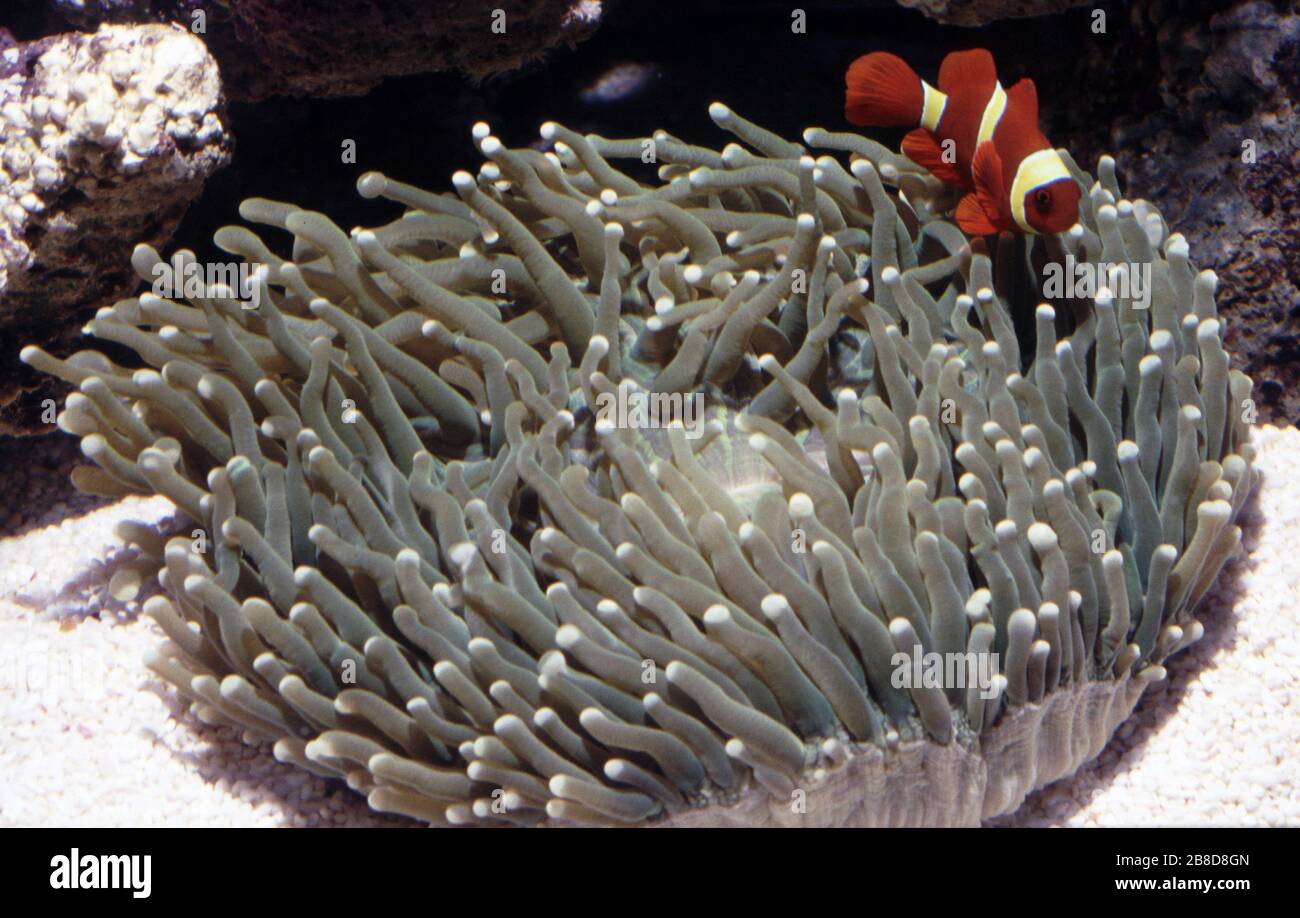 Sunflower Mushroom Coral (Heliofungia actiniformis) with symbiotic Maroon clown fish (Premnas biaculeatus) Stock Photohttps://www.alamy.com/image-license-details/?v=1https://www.alamy.com/sunflower-mushroom-coral-heliofungia-actiniformis-with-symbiotic-maroon-clown-fish-premnas-biaculeatus-image349416725.html
Sunflower Mushroom Coral (Heliofungia actiniformis) with symbiotic Maroon clown fish (Premnas biaculeatus) Stock Photohttps://www.alamy.com/image-license-details/?v=1https://www.alamy.com/sunflower-mushroom-coral-heliofungia-actiniformis-with-symbiotic-maroon-clown-fish-premnas-biaculeatus-image349416725.htmlRM2B8D8GN–Sunflower Mushroom Coral (Heliofungia actiniformis) with symbiotic Maroon clown fish (Premnas biaculeatus)
 This heathy hard coral colony in the Pacific sits on the edge of a drop-off, Yap, Micronesia. Stock Photohttps://www.alamy.com/image-license-details/?v=1https://www.alamy.com/this-heathy-hard-coral-colony-in-the-pacific-sits-on-the-edge-of-a-drop-off-yap-micronesia-image574284103.html
This heathy hard coral colony in the Pacific sits on the edge of a drop-off, Yap, Micronesia. Stock Photohttps://www.alamy.com/image-license-details/?v=1https://www.alamy.com/this-heathy-hard-coral-colony-in-the-pacific-sits-on-the-edge-of-a-drop-off-yap-micronesia-image574284103.htmlRM2TA8W6F–This heathy hard coral colony in the Pacific sits on the edge of a drop-off, Yap, Micronesia.
 Long-cirri Phyllodesmium Nudibranch, Phyllodesmium longicirrum, with cerata with digestive gland ducts connected to zooxanthellae, Boulder dive site,s Stock Photohttps://www.alamy.com/image-license-details/?v=1https://www.alamy.com/long-cirri-phyllodesmium-nudibranch-phyllodesmium-longicirrum-with-cerata-with-digestive-gland-ducts-connected-to-zooxanthellae-boulder-dive-sites-image561645090.html
Long-cirri Phyllodesmium Nudibranch, Phyllodesmium longicirrum, with cerata with digestive gland ducts connected to zooxanthellae, Boulder dive site,s Stock Photohttps://www.alamy.com/image-license-details/?v=1https://www.alamy.com/long-cirri-phyllodesmium-nudibranch-phyllodesmium-longicirrum-with-cerata-with-digestive-gland-ducts-connected-to-zooxanthellae-boulder-dive-sites-image561645090.htmlRM2RHN416–Long-cirri Phyllodesmium Nudibranch, Phyllodesmium longicirrum, with cerata with digestive gland ducts connected to zooxanthellae, Boulder dive site,s
 Coral reef off Dahab in the Red Sea in Egypt Stock Photohttps://www.alamy.com/image-license-details/?v=1https://www.alamy.com/stock-photo-coral-reef-off-dahab-in-the-red-sea-in-egypt-20307910.html
Coral reef off Dahab in the Red Sea in Egypt Stock Photohttps://www.alamy.com/image-license-details/?v=1https://www.alamy.com/stock-photo-coral-reef-off-dahab-in-the-red-sea-in-egypt-20307910.htmlRMB512XE–Coral reef off Dahab in the Red Sea in Egypt
![Crocea giant clam or Boring clam [Tridacna crocea]. Colours in the mantle come from symbiotic zooxanthellae in tissue. Red Sea, Egypt. Stock Photo Crocea giant clam or Boring clam [Tridacna crocea]. Colours in the mantle come from symbiotic zooxanthellae in tissue. Red Sea, Egypt. Stock Photo](https://c8.alamy.com/comp/2RMF5K7/crocea-giant-clam-or-boring-clam-tridacna-crocea-colours-in-the-mantle-come-from-symbiotic-zooxanthellae-in-tissue-red-sea-egypt-2RMF5K7.jpg) Crocea giant clam or Boring clam [Tridacna crocea]. Colours in the mantle come from symbiotic zooxanthellae in tissue. Red Sea, Egypt. Stock Photohttps://www.alamy.com/image-license-details/?v=1https://www.alamy.com/crocea-giant-clam-or-boring-clam-tridacna-crocea-colours-in-the-mantle-come-from-symbiotic-zooxanthellae-in-tissue-red-sea-egypt-image563358635.html
Crocea giant clam or Boring clam [Tridacna crocea]. Colours in the mantle come from symbiotic zooxanthellae in tissue. Red Sea, Egypt. Stock Photohttps://www.alamy.com/image-license-details/?v=1https://www.alamy.com/crocea-giant-clam-or-boring-clam-tridacna-crocea-colours-in-the-mantle-come-from-symbiotic-zooxanthellae-in-tissue-red-sea-egypt-image563358635.htmlRM2RMF5K7–Crocea giant clam or Boring clam [Tridacna crocea]. Colours in the mantle come from symbiotic zooxanthellae in tissue. Red Sea, Egypt.
 beautiful landscape view of mixture of soft and hard coral on tropical coral reef with clear blue water Stock Photohttps://www.alamy.com/image-license-details/?v=1https://www.alamy.com/beautiful-landscape-view-of-mixture-of-soft-and-hard-coral-on-tropical-coral-reef-with-clear-blue-water-image595326086.html
beautiful landscape view of mixture of soft and hard coral on tropical coral reef with clear blue water Stock Photohttps://www.alamy.com/image-license-details/?v=1https://www.alamy.com/beautiful-landscape-view-of-mixture-of-soft-and-hard-coral-on-tropical-coral-reef-with-clear-blue-water-image595326086.htmlRF2WGFCDX–beautiful landscape view of mixture of soft and hard coral on tropical coral reef with clear blue water